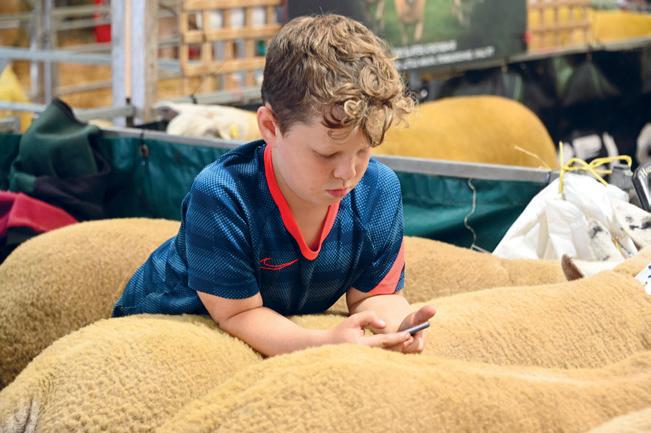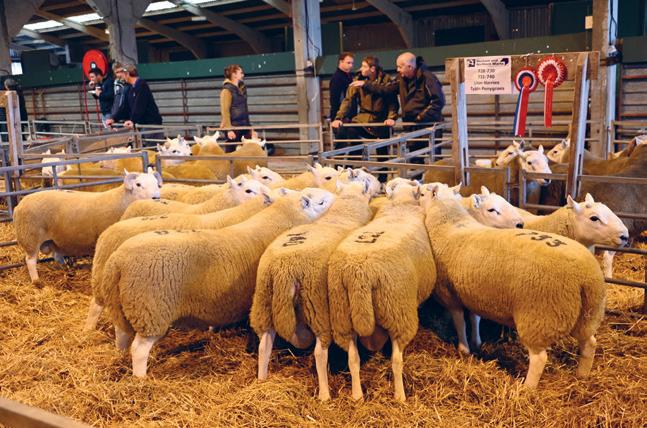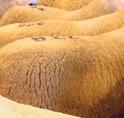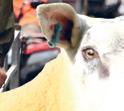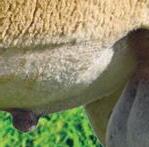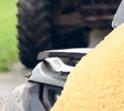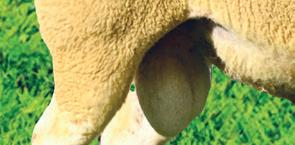

Overgrazing legal row
Dartmoor farmers accused; upland community warns of ‘depopulation’













Dartmoor farmers accused; upland community warns of ‘depopulation’











Cheffins has considerable experience in conducting modern and vintage on-site machinery auctions that are conducted throughout the UK. We offer an unrivalled service with experienced professional auctioneers and administrative staff.
• Operating Europe’s largest monthly machinery auction
• Selling to over 100 countries per year
• Over 25,000 registered buyers worldwide
• Extensive mailing and e-mail subscriber lists
• Asset valuation
• Extensive marketing
• Mobile computerised accounts unit
• Internet bidding
• Competitive commission rates
• Pre-auction advice and setting up
• RICS client account regulations
• Unrivalled dealer/trade contacts
• Detailed catalogue descriptions
• Excellent website and social media pages
Farmers Guardian,
Unit 4, Fulwood Business Park, Caxton Road, Fulwood, Preston, Lancashire, PR2 9NZ
Editor Olivia Midgley, 07787 240 750 olivia.midgley@agriconnect.com
Head of News and Business
Alex Black, 07880 490 486 alex.black@agriconnect.com
Chief Reporter
Rachael Brown, 07974 039 778 rachael.brown@agriconnect.com
News and Business Reporter
Chris Brayford, 07773 110 733 chris.brayford@agriconnect.com
Business Reporter
Cedric Porter
cedric.porter@agriconnect.com
Arable Reporter
Jane Thynne
jane.thynne@agriconnect.com
Head of Machinery and Farm Technology
Toby Whatley, 07583 054 831 toby.whatley@agriconnect.com
Machinery Reporter
James Huyton, 07787 242 185 james.huyton@agriconnect.com
Head of Livestock
Katie Jones, 07786 856 439 katie.jones@agriconnect.com
Features Editor and
Head of Livestock Sales
Angela Calvert, 07768 796 492 angela.calvert@agriconnect.com
Livestock Specialists
Ellie Layton, 07814 997 407 ellie.layton@agriconnect.com
Katie Fallon, 07815 003 227 katie.fallon@agriconnect.com
Online Editor
Emily Ashworth, 07977 706 711 emily.ashworth@agriconnect.com
Creative Services
Mike Begley mike.begley@agriconnect.com
Katie Haydock katie.haydock@agriconnect.com
Picture Editor
Marcello Garbagnoli, 07815 003 236 marcello.garbagnoli@agriconnect.com
Sales 01772 799 500 gemma.thorpe@agriconnect.com
Circulation
Subscription hotline 0330 333 0056 help@subscribe.farmers-guardian.com
Newstrade enquiries 01772 799 434
UK print subscriptions £189; Europe: £226.80; RoW: £283.50. FG digital subscriptions: £109
Published by Agriconnect

Producing quality livestock is key to the success of the Walker family’s farm. See p25-27.
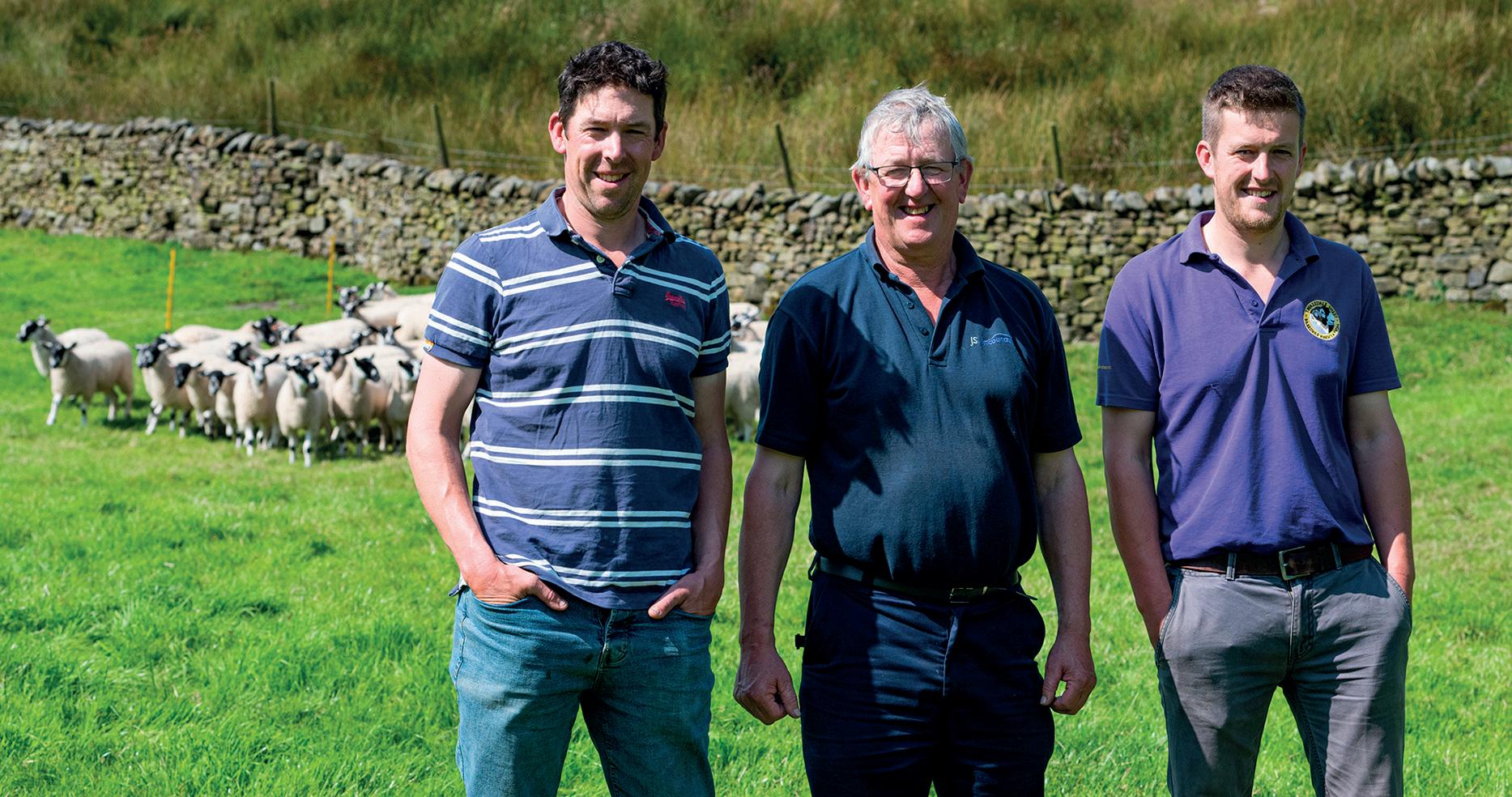

LOBBYING plays a crucial role in UK democracy and can drive significant positive change.
The news this week that school inspection body Ofsted will no longer be issuing its ‘one word’ verdicts has been welcomed by the education sector. Sadly, as so often happens, the catalyst for change was borne out of tragedy – in this instance by the loss of headteacher Ruth Perry, who took her own life under the pressure of an impending negative inspection. The need for reform in high-stress environments is desperate.
The Government’s decision is being closely watched by the family of farmer Rocky Poulson, who are campaigning for inspection reforms in the agricultural sector. They hope the Ofsted ruling could pave the way for similar changes in farming.
As politicians return to Westminster this week and grapple with a packed agenda –not least the gloom-inducing promises of the October Budget – there is hope some pressing farm-related issues will make their way to the top of the agenda.
The grim death toll also demonstrates the urgent need for farming businesses to prioritise safety not only for themselves and their employees, but for every single person who steps on to the yard.
While the Health and Safety Executive (HSE) revisits its research, the onus remains on farm business owners and managers to ensure they are using equipment safely and responsibly.
For many businesses, the ATV is a fundamental and indispensable tool but as the vehicles become bigger and more powerful, users should ask if the ATV is the right tool for them. As the noisy anti-livestock brigade’s agenda threatens the very fabric of rural life in Dartmoor, not to mention food production (see p4-5), it is more important than ever to stand together.
As a community with a genuine will to effect positive change we can make a difference, whether that is in farm safety or farm policy.


One such issue is Cumbria farmer John Geldard’s campaign for improved ATV safety (see page 8) following a series of horrific on-farm incidents in which six people, including one six-yearold child, have been killed during this year alone.
LISTEN TO THE FG PODCAST PLUS, DON’T MISS...
FOR weekly podcasts bringing you the latest news, engaging debates and real farmer stories from across the UK, scan the QR code or go to farmersguardian. com/podcasts
THE Farm Business Innovation Show is just around the corner. Find out more on page 23.

lor Rachel Reeves sharpens her fiscal scissors, farming


heard to keep them mindful of how important the
So while Prime Minister Sir Keir Starmer mulls over his upcoming agenda and Chancellor Rachel Reeves sharpens her fiscal scissors, farming should make its voice heard to keep them mindful of how important the rural community and indeed the rural economy are to a thriving, sustainable nation.



By Jane Thynne and Chris Brayford
FARMERS and environmental groups have warned against Government spending cuts which could see the agricultural budget slashed by £100 million in autumn.
Chancellor Rachel Reeves said she would take ‘tough decisions’ in the Budget on October 30 in order to plug a claimed £22 billion ‘black hole’ in public finances left by the Conservatives.
During her first weeks in the role, Ms Reeves asked Government departments to each find more than £1bn in savings, including Defra.
Back in April, Defra defended its twoyear £400m agricultural underspend – including £100m in the nature-friendly farming budget – which it said would be rolled into the 2024/25 budget.
However, Farmers Guardian understands the new Government said the underspend under the Conservatives had made it ‘impossible’ for Defra to justify keeping it at that level to the Treasury.
The NFU said a cut to the agricultural budget could risk further dimin-
NFU president Tom Bradshaw has warned the Prime Minister’s team that without certainty on the farming budget in October, UK food security ‘could fall off a cliff’.
The agricultural budget was at the top of the agenda when Mr Bradshaw met with the Prime Minister’s senior advisers in Defra and the Department for Energy Security and Net Zero earlier this week.
MrBradshawraisedtheneedto ‘obtainafairreturnfromthesupply chain’,addingthiswaswhat underpinnedfarmerconfidence andtheabilitytoinvest.
The NFU said it had repeatedly called for Government policies to deliver transparency in markets, food labelling, public procurement and food messaging, including the
ishing the already ‘low confidence’ among farmers who have had to contend with record inflation, falls in farm income and unprecedented weather patterns delivering relentless rain this year, and a near drought last year.
Former Farming Minister Sir Mark Spencer said cutting nature-friendly farming budgets would be a ‘betrayal’ of all the work UK farmers were doing to deliver food security and an improved environmental footprint.
Tim Farron, the Liberal Democrats’ Farming spokesperson, addressed the issue on Tuesday (September 3) in the House of Commons and said the underspend was a ‘betrayal’ to farmers while asking the Chancellor if she would back adding £1bn (£3.4bn in total) to the farming budget for 2024/2025.
Alice Groom, head of sustainable land use policy at the RSPB, said a £100m reduction in funding could see over 500,000 hectares less nature-friendly farmland, and that a failure to invest in nature and climate could ‘shrink’ the economy by 12%.
Cumbria sheep farmer James Rebanks described the potential move as ‘shameful’ to farmers who were trying to incorporate nature-friendly practices on-farm.

NFU president Tom Bradshaw met with the Prime Minister’s senior advisers earlier this week.
“There is no way this Government can meet its statutory obligations under law without increasing the spend on nature-friendly farming,” he added.
Hereford beef farmer Robert Fraser said the decision was a ‘terrible and regressive’ step which could force farmers to either intensify farming practices or retire.
Cambridgeshire farmer Martin Lines, who runs a 162-hectare arable farm in St Neots, said cutting the budget would be a ‘disastrous and short-sighted’ decision which could impact future generations, and called for the Government to rethink any planned cuts.
The Chancellor said the rural economy played an ‘incredibly important role’ in the UK’s economic prosperity as a country, which she said could be included in the Defra Secretary’s submission to the spending review on October 30.
A Treasury spokesperson said: “Following the spending audit, the Chancellor has been clear that difficult decisions lie ahead on spending, welfare and tax to fix the foundations of our economy and address the £22bn hole in public finances left by the last Government. Decisions on how to do that will be taken at the Budget in the round.”

need to develop core production standards that applied to agri-food imports.
Mr Bradshaw said the Government could ‘send a really strong message’ to
the industry by taking action on this. He said: “With the right support in place, farming can be a key partner to deliver the Government’s missions around economic growth.”



Wildlife Justice confirmed it would seek a judicial review into Dartmoor Commoners’ Council’s management of the land following concerns of stocking levels and overgrazing.
By Chris Brayford
UPLAND farms across the UK could be under threat if an environmental lobby group succeeds in claiming that common land is ‘overgrazed’ on Dartmoor.
Wildlife Justice (WJ), backed by naturalists including Chris Packham and Mark Avery, confirmed last Friday (August 30) it would seek a judicial review into Dartmoor Commoners’ Council’s (DCC) management of Sites of Special Scientific Interest (SSSI) following concerns of stocking levels and overgrazing.
Back in July, the campaign group threatened DCC with potential legal proceedings if it did not provide a ‘satisfactory response’ to how it maintained and enhanced protected sites on Dartmoor’s common land by bringing heathland back into a ‘favourable condition’.
However, WJ has sought a judicial review which has caused dismay and hurt among upland farmers, who have claimed that reducing stock could lead to farmers giving up businesses and ‘rural depopulation’ from moorlands.
NFU Uplands Forum representative Robin Milton said farmers on the moors have been doing a ‘fantastic
job’ of protecting land for future generations, and he was concerned about the influence environmental groups could have on the future of farming across the UK if the complaint was successful.
“WJ could just start going to any part of the country with upland farming and complain that it is in poor condition and apply for a judicial review,” he said.
“It takes valuable funds away from farmers and the communities they support, which is disappointing.”
Welsh farmer Gareth Wyn Jones said if WJ succeeded in the judicial review, it could have massive implications, such as fewer farms in upland areas and depopulation in the countryside.
The Dartmoor Society, a charity which recognises farming’s importance in the conservation of the commons, also wrote a letter to WJ call-
ing on them to end legal proceedings.
Tom Greeves, former chair of the Dartmoor Society, said WJ’s challenge against DCC could have no traction in a court of law and urged the group to withdraw its challenge.
“There is absolutely no issue of current overgrazing on the Dartmoor commons,” he said.
“On the contrary, since the mid1990s, the demands of Natural England [NE] for graziers to reduce stock numbers by up to 80% on certain commons has caused widespread undergrazing, leading to excessive growth of molinia and gorse.
“The DCC is a body of hill farmers who have extraordinary skills in livestock husbandry and care for the Dartmoor commons.
“If any challenge is to be made against them, it might be for their failure to stand up to NE.”
Hill farmer Layland Branfield, who represents the east quarter of
DCC, said he was concerned that, to a certain degree, management on the commons had been taken out of farmers’ hands due to NE’s demands.
“Farmers have had to accept to a large degree what has been imposed on them by the Government, and we have had to accept that and abide by it,” he added.
“But this legal bid just creates increasing hassle for farmers seeking to do their job in providing food and environmental benefits on the land.”
NE said it was working hard to rebuild trust and understanding between farmers and land managers on Dartmoor.
The Government body said the Fursdon Review into Dartmoor’s protected land management could ‘properly support and value’ farmers’ roles in nature recovery across the national park, with a wide range of stakeholders co-designing a vision for sustainable management on SSSI.



By Katie Jones
FARMERS and industry groups have reacted angrily to the Government’s new bovine TB eradication strategy, which has pledged to end badger culling in England within five years.
NFU president Tom Bradshaw said any change in policy must be data-led, adding that the current strategy which involved badger culling had seen the industry achieve a 20-year low in new herd breakdowns.
He said that while badger and cattle vaccination trials were encouraging, ‘these must now be conducted at scale to give a true understanding of how vaccination will benefit wildlife and cattle health and whether it is practically feasible’.
He said: “A cattle vaccine requires a verified Diva test, which distinguishes cattle infected with TB in a vaccinated herd.
“This test, together with the necessary domestic and international
In the absence of new deployable tools, I cannot see a logic to ending culling
PHIL LATHAM
THE farmer who featured in the controversial BBC documentary ‘The Badgers, The Farmers and Me’, fronted by Queen guitarist Brian May, said he had been ‘disappointed’ by the general industry’s reaction and urged farmers to focus on the progress that had been made on his farm.
Robert Reed, who runs a 350cow milking herd at Gatcombe Farm in Devon, said: “We have

authorisations, must be completed before a cattle vaccine can be used and there must be a practical timeline given to ensure industry-wide accessibility.
“We also need to understand how the additional costs of these approaches will be met.”
Cheshire dairy farmer and former Bovine TB Partnership board member Phil Latham said: “In the absence of new deployable tools, I cannot see a logic to ending culling unless we have a deployable cattle vaccine or proof of efficacy of a badger vaccine roll-out.
“Badger vaccination is expensive and it cost £1 million to vaccinate 1% of Wales as part of the Intensive Action Area trial.
“Where is the money coming from to roll it out nationally and where is the proof to say it is effective?
“If the current decline in bTB con-
tinues, why on earth would you stop a successful strategy?”
CLA president Victoria Vyvyan agreed any alternative to culling must be proven before the Government phases it out.
“Effective control of bTB and realisation of the Government’s ambition to eradicate it requires every effective tool, including culling, to be on the table,” she said.
Defra said the full strategy would be ‘co-designed with farmers, vets, scientists and conservationists’, and would consider a range of further measures including boosting cattle testing, reducing the spread of disease through cattle movements, and deploying badger vaccination on a wider scale.
Farming Minister Daniel Zeichner said: “Our comprehensive TB eradication package will allow us to end the badger cull by the end of this Parliament and stop the spread of this horrific disease.”
achieved a lot here and I was disappointed that everyone has been slating us for this. We have looked at TB from another angle and I believe that until we get TB out of our cows, we will not stop re-infection from happening. It is a chicken and egg situation.
“As soon as we go TB free, the testing stops, but what we really need to do is carry on testing so that we find that last cow with TB.”
Mr Reed added he felt ‘scared’ for farmers in light of Labour’s future changes to TB eradication policy and said it would be a ‘disaster’ for the livestock industry.
“By ending the badger cull, all we are doing is losing one of the tools at our disposal,” he said.
“This comes at a time when the industry is at its most vulnerable in terms of TB control.”

BLUETONGUE cases continue to rise, with a new restricted zone put in place in Essex.
The Animal and Plant Health Agency said livestock could not be moved in or out of three counties – Essex, Norfolk and Suffolk.
The 20km Temporary Control Zones around farms with positive cases of the virus were revoked on Friday (August 30) and instead replaced with the new restricted zones after confirming there was evidence that the virus was transmitting in Suffolk.
Nick Whitehead, a sheep farmer near Stowmarket in Suffolk, currently cannot move his livestock to market because of restrictions and he said he was anxious about the virus spreading.
He said: “I would usually sell my sheep at Colchester Market, but I can no longer do that. All livestock must stay on the farm, which is really disappointing.”
Graham Miles, a former sheep farmer turned rural chaplain in Suffolk, said the current bluetongue situation had caused worry among the farming community.
“There is so much going on for our farmers at the moment,” he said.
On Wednesday (September 4), Defra Secretary Steve Reed confirmed he had permitted the use of a bluetongue vaccine for stereotype 3 cases currently circulating in the UK, ‘subject to licencing’.




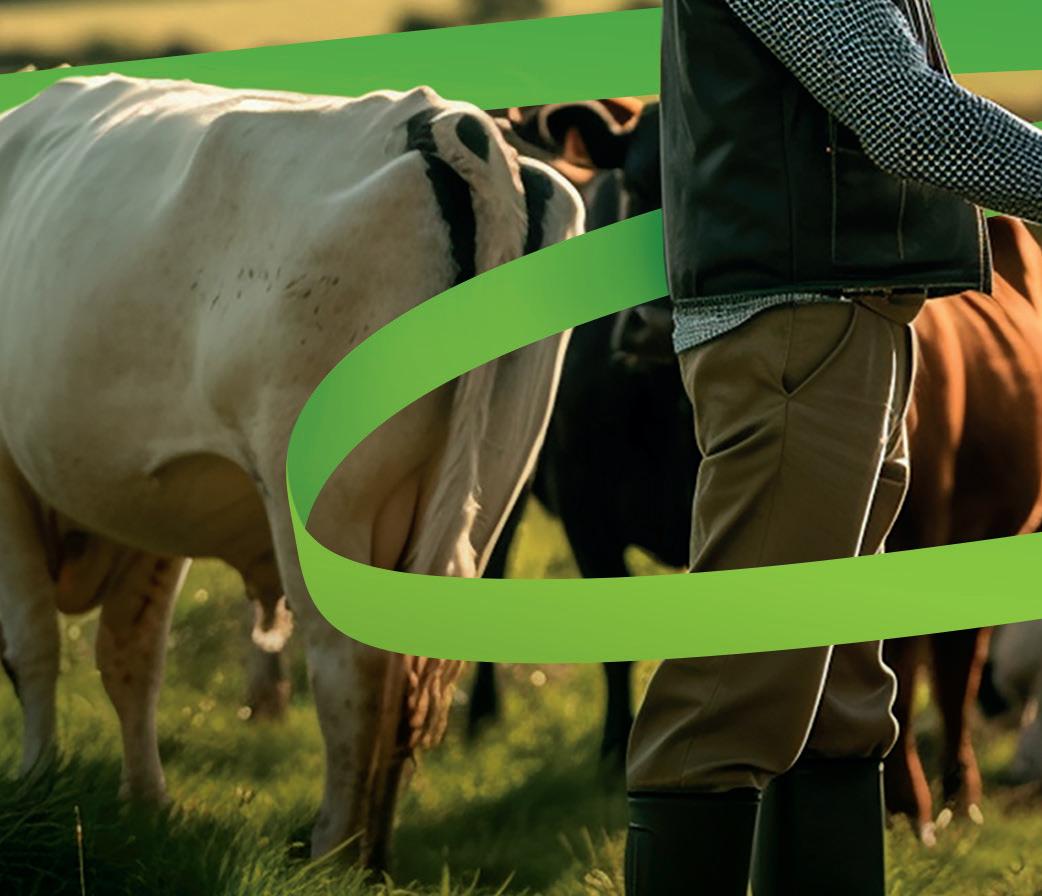









By Jane Thynne
A HIGH-profile farmer has called on the Government to boost ATV safety measures following a spate of quad bike incidents.
Former National Sheep Association vice-president John Geldard said it was now time for farmers, Government and manufacturers to come together to address what can be done to make on-farm vehicles less dangerous.
Since March six people have lost their lives owing to an incident involving a quad bike on-farm. The youngest, Joseph Hegarty from Northern Ireland, was just six years old.
Mr Geldard said it was ‘not acceptable’ to ignore the serious incidents and fatalities.
“Until we take positive steps to deal with the situation, nothing will happen,” he added.
Mr Geldard has written to the Defra Secretary Steve Reed asking him and the Government to take action on ATVs to ensure roll bars are fitted from April 2025.
“In my early farming career there were a lot of accidents with tractors which, at that stage, had no cabs or roll bars.
“In the 70s the Government implemented legislation for roll bars and safety cabs and the results have been positive.
“So why are we not acting? To do nothing will definitely achieve noth-
EXTENDED DEADLINE FOR FARM ASSURANCE SURVEY
■ COMMISSIONERS leading the Farm Assurance Review have extended the deadline for responses to the farmer survey to September 7, with the closing date for supply chain and industry responses September 15.
The survey can be completed here: app. onlinesurveys.jisc.ac.uk/s/promaraf-2021/ the-uk-farm-assurance-review
RABDF’S NEW CHIEF EXECUTIVE
■ THE Royal Association of British Dairy Farmers (RABDF) has appointed the NFU’s former chief dairy adviser Hayley Campbell-Gibbons as its new chief executive.
Ms Campbell-Gibbons played a ‘pivotal role in shaping policies and initiatives to support dairy farmers’ during her time at the NFU, and most

ing, it is so easy to make excuses,” he said.
The Health and Safety Executive (HSE) produces guidance for the use of both ATVs and UTVs. According to the HSE, many quad bike fatalities in the UK have been caused by head injuries which it says could have been prevented by wearing a helmet.
The safety body’s long-standing advice that roll bars could increase the risk of injury was challenged earlier this year when safety campaigners questioned why the body was relying on research that was 25
recently as head of sustainability for Kite Consulting.
She has also held several nonexecutive director positions, including for AHDB, and is a current board member of the Food Standards Agency.
■ THE ‘long-awaited’ modernisation of agricultural tenancy succession has come into effect this week.
The changes apply to agricultural tenancies let under the Agricultural Holdings Act 1986, with rights of tenancy succession to two further generations.
Under the new rules, applicants for succession must prove they are both ‘eligible and suitable’ to be the tenant of the agricultural holding subject to succession.
One of the eligibility tests previously in place was to confirm that the applicant was not in





John Geldard (inset) said it was now time to come together to address what can be done to make on-farm vehicles less dangerous.
years old, when technology had moved on.
The matter was raised in the House of Lords, subsequently prompting Ministers to call for a review into roll bars.
HSE said it was now proposing to carry out research about machine stability, including the effectiveness of operator protection devices, also known as crush protection devices, to help the review of guidance and the international ATV Product Standard (EN ISO 15997).
A spokesperson for HSE told Farmers Guardian: “Our research into this matter is in its early stages.”
occupation of another agricultural holding capable of producing a commercial return. But for succession applications made from September 1, 2024, this test no longer applies – a move welcomed by the Tenant Farmers Association.
‘REGIONAL
■ FARMERS, vets, Government representatives, conservationists and academics will gather at a conference later this month held by the Ser Cymru Centre of Excellence for Bovine TB at Aberystwyth University, to discuss the social dimensions of managing bTB in cattle.
The conference on September 18 will focus on how the sector can run a ‘successful regional approach to bTB eradication in Wales’.
MORE ON THIS STORY Register here: vethub1.co.uk/cms/events/
Mr Geldard said there was more that could and should be done.
“I fully endorse the engagement of all safety aspects in the nature of encouraging helmets and so on, but they do not have the effect that we require. I would like to call on our industry organisations to support my call and encourage Government to take the necessary steps to reduce fatalities.”
THE widow of Rocky Poulson, a farmer who ended his life four days after a farm inspection, said there were ‘clear similarities’ between what happened to her husband and the case of Ruth Perry, a headteacher who took her own life after an Ofsted inspection. This week, following a campaign led by Ms Perry’s family, the Government announced it would scrap one-word Ofsted judgements for schools.
Ms Poulson said: “With Rocky it was being called an ‘incompetent’ farmer, with Ruth it was that her school was ‘inadequate’. Language is a powerful tool and words can be very damaging.”
Ms Poulson has always made clear she does not blame the individual inspector, but the culture and the overall inspection system which needs reform.
You can read her full blog at farmersguardian.com/opinion-blogs/






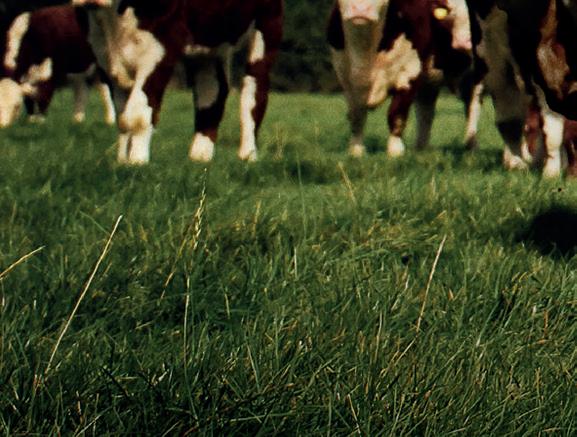





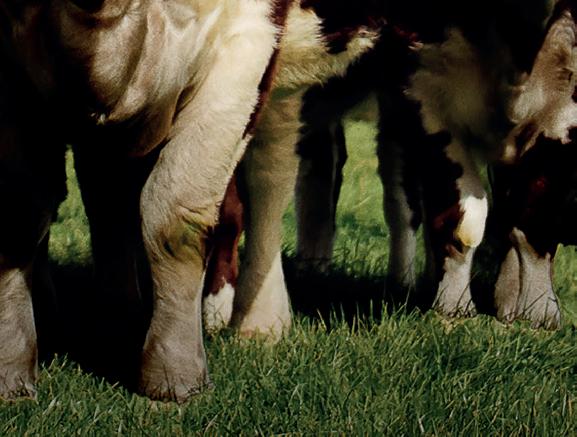


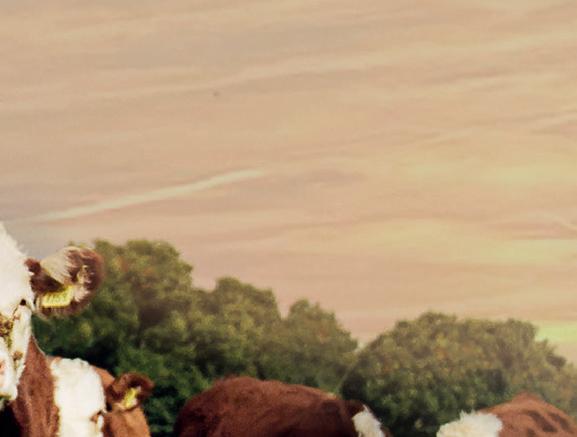




Join AHDB, Elaine Froese, farm transition expert, and her colleague, Lydia Carpenter, to learn the 10 tools to address the communication issues affecting your farm in Elaine’s workshop, Discuss the Undiscussabull™ .

In the workshop, you’ll learn:


• How age impacts frustrations and communication styles
• How to identify why people don’t want to talk about certain things
• What your conflict style is and how to manage this





• Key challenges for communicating effectively in your business and how to overcome these





British agriculture has never seen an event like this before and tickets are limited. Scan the QR code or visit ahdb.org.uk/discuss-the-undiscussabull to book your place today!
WILDLIFE groups have urged the Government to speed up species reintroduction to prevent activists from embarking on what is being termed ‘beaver bombing’ and carrying out illthought-out releases.
The Beaver Trust said successive Defra secretaries have failed to keep their promises regarding a safe and controlled reintroduction, which has led to some conservationists taking matters into their own hands and releasing the animals into rivers.
The group said this action risked losing public support as the animals need to be freed into a suitable and manageable habitat.
The Wildlife Trusts has now called on the Government to offer financial support for farmers and land managers through the Environmental Land Management scheme (ELM) and to offer incentives for those who make more space for water and the ‘benefits beavers provide for society’.
NFU Environment Forum chair Richard Bramley said: “With existing
legal and illegal populations of beavers expanding across England, the Government needs to take stronger action to manage illegal releases and develop and consult on a national beaver strategy before any further releases are considered.”
While Mr Bramley said some farmers and landowners may be interested in beaver reintroduction opportunities, many were concerned about the impacts beavers could have on their land, business and food production.
“The NFU wants to work with the Government in developing its approach and will continue to monitor existing beaver populations and policy developments to ensure the right strategy, management options and support are in place to minimise any negative impacts.”
A spokesperson for Defra said: “This Government is absolutely committed to restoring and protecting nature and we support species reintroductions where there are clear benefits for nature, people and the environment.”
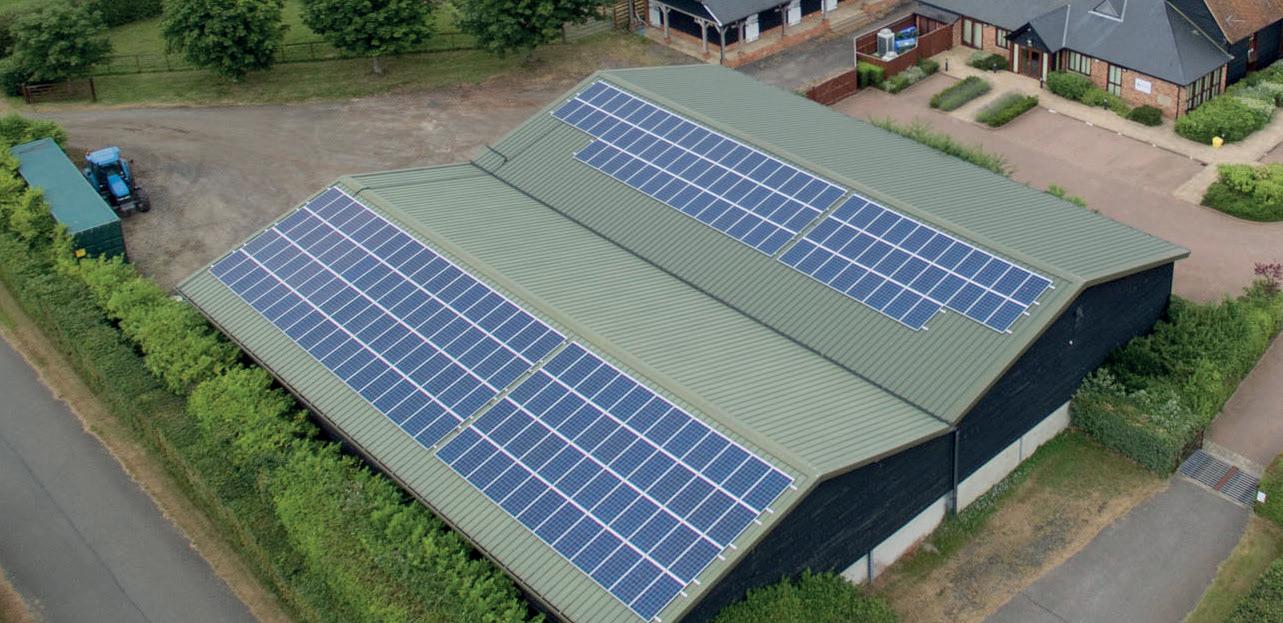



By Jane Thynne
WARNINGS that farmers could face fertiliser shortages have been issued after workers at CF Fertiliser’s Billingham factory voted to strike. Workers employed by contractors Hargreaves Industrial Services at the County Durham plant have decided to take direct action following what the Unite union described as a ‘derisory pay offer’.
According to the union, CF Fertiliser had a turnover of £252 million in the year ending December 2023 and made operating profits of £30m, while Hargreaves recorded a turnover of £59m and made pre-tax profits of £2.9m in the year ending May 2023.
Unite general secretary Sharon Graham said: “Both Hargreaves
and CF Fertiliser can fully afford to ensure these workers receive a fair pay offer. Our members at Billingham will receive Unite’s total backing during these strikes.”
The workers will walk out from September 12-20 and from September 28 to October 6.
Industrial action will escalate if the dispute is not resolved, the union has warned.
The strikes will cause severe disruption to CF Fertiliser’s Billingham operations and impact the supply of fertiliser for farmers across the country.
Unite regional officer Neil Howells said: “There is still time for industrial action to be avoided, but that will require a pay offer being put forward that our members can accept.”
Both CF Fertilisers and Hargreaves Industrial Services were contacted for comment.
By Chris Brayford
A LINCOLNSHIRE farmer has called on the Government to step up and support food producers affected by last year’s flooding, with many still waiting to receive financial help.
John Harrison, an arable farmer from Horncastle, said he was concerned that food producers across the UK were still to be paid compensation following the effects of flooding from adverse weather events including Storm Babet in October 2023.
Last year, the former Conservative Government extended the Farm Recovery Fund, initially launched after Storm Henk in January, to provide grants ranging from £500 to £25,000 to help farmers impacted by flooding. This was then extended to May to include all flooded land near to an eligible river, however the promised relief has been slow to arrive.
The Rural Payments Agency said it would identify farmers who were entitled to claim for the fund, with payments expected to be made this summer. However, arable farmer Henry Ward, of Shortferry, near Lincoln,
said he was still waiting to receive support after he was left with more than 810 hectares of land submerged.
He said: “It feels like I have been living in a nightmare and it is a kick in the teeth. It has been nothing but warm words from the Government and it is a scandal.”
Back in October, Mr Harrison criticised the the Environment Agency’s (EA) handling of Horncastle’s Flood Alleviation Scheme after a claimed power cut on his farmland led to a ‘failure’ which resulted in ‘large-scale’ flooding in the region affecting homes and farmland.
He said: “It is absolutely appalling that farmers are still to receive support. We are closing in to a new season which could bring unexpected amounts of rainfall again and even more flooding.
“Farmers are having a really tough time and deserve to be supported for the damage caused during last year’s flooding.”
An EA spokesperson said it understood the ‘devastating impact’ that flooding can have and it was working with those who had been badly affected.
The Government, meanwhile, has said it will restore ‘stability and confidence’ among farmers through a new Flood Resilience Taskforce, while providing a new deal to ‘boost Britain’s food security, restore nature and support rural economic growth’.


EXHIBITORS have praised a show committee in Yorkshire after hurricanestrength winds and rain threatened a major agricultural event.
Storm Lilian wreaked havoc across Malham showground near Skipton, in the Yorkshire Dales, on Friday, August 23, uprooting tents and marquees which had all been carefully set up for the show on Saturday, August 24.
But the storm was no match for the steeliness of the show’s committee, whose quick thinking, coupled with a spirited community effort, ensured the event went ahead the next day.
Show president David Hargreaves said while the 24 hours before the gates opened to the public ‘were slightly fraught’, no one would have known.
“The show always goes ahead, it is what we do,” said Mr Hargreaves.
“Once we get to show day we are committed, so we knew we had to make it work.”
Mr Hargreaves said he had awoken
Award winning fencing manufactured by Hampton Steel in the UK
• Suitable for use with all woven wire fencing patterns for Sentinel® and Rylock® hinge joint and Hampton Net™ superior fixed knot fencing.
• Posts are coated with a magnesium, aluminium and zinc alloy, an xcellent long life alternative to timber posts
e
• Stainless steel clips can be inserted anywhere on the posts.





to ‘wild weather’ at 6am on the Friday morning and met his son Phillip, show chair Gary Schofield and vice-chair Mark Luscombe, at the showground to assess the damage.
“We met in one of the tents that had not blown away and formulated a plan,” he added.
“One of the marquees had knocked a stone wall down so my grandson William and some other locals came to help rebuild the wall.
“We moved some tents around and made sure we had somewhere for entries. By tea time it looked more like a showground.”
Mr Hargreaves said his father was president of the show in 1985 when heavy rainfall caused chaos at the summer event.
Despite the setback, the annual event, which draws around 2,000 visitors, went ahead successfully, and was followed by the Kilnsey Show just three days later.







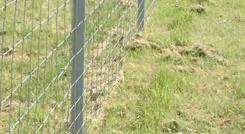


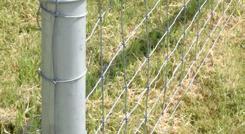




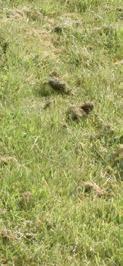
WHEN many of us started in the industry, there were very few females in the trade, and you could be the only female working at a business or one of the very few in a room at a trade dinner. Even in the short time since Covid-19, we have seen a marked increase in women in the industry and a support network has started to grow.
Women are now making up a larger proportion of employees in the industry, yet there still remains a lack of women on committees and speakers at feed trade events.
There are also rarely talks focused on career development and mentoring, but more focus on the history of the industry and the important topical
READERS have been keen to share their views following the broadcast of Brian May: The Badgers, The Farmers and Me and the subsequent industry reaction:
■ “As ever with these zealots, they get their message out and then it no longer matters... They have got their agenda out there
issues such as the markets and sustainability.
A group of likeminded women got together, and we recognised a desire from the industry for events that are more open and inclusive to all, but are women-centric and have more of a focus on the range of career areas that the feed industry has to offer and assist in empowering both women and
and nevermind the inconvenience of actual facts.”
ROBIN COATES
■ “Whatever everyone’s thoughts on the programme, the definitive aim is try and stop the spread of bovine TB. So instead of arguing over who is right or wrong, surely we should all come together to
men in their career development. It was also key for us that even though this event was women-centric, that men were part of how this concept evolves.
The more women and men work together, the stronger the feed industry becomes in the challenging UK landscape that agriculture faces.
In association with the Northern
push forward to find a way to control it.”
PEN-Y-WAUN FARM SHOP
■ “An absolute mess. Media only say how many badgers have been culled. They don’t mention the cattle that have been culled because of it. The balance has been lost.”
DANIEL WYKES
Feed Alliance and our sponsors, we have been able to create the Women in Feed seminar event, taking place on September 25. We have some exciting speakers lined up to discuss a range of topics including operations, career journeys, financial advice and mentorship. Our goal is to have women and men in the room learning, creating connections, and for them to be em-


If you have a classic picture you would like to share, please email it to marcello.garbagnoli@agriconnect.com


Prize Shorthorn, Nidderdale Show, Pateley Bridge. Moses Rayner holding the cow, with his wife, Harriet, in the doorway of Gouthwaite farmhouse, and their children (left to right) Caroline, Sissie, and Walter. Sent in by John Rayner (92), grandson of Moses, still working at Gouthwaite Farm.
globe. This policy sets out how we do this and applies the use of your personal data that you disclose to us by entering into our competition to win £200 for the Stockjudging Competition or £20 Love2Shop vouchers for the weekly Crossword Competition, referred to throughout this statement as the “Competitions”. How we collect your information: We collect the personal data you have provided to us by filling in the form on our website www.fginsight.com OR printed form when entering the Competitions. If you have entered the Competitions via our site we may also collect some technical information about how you use our site, for example, the type of device you are using, your operating system, IP address, uniform resource locator (URL), clickstream and length of visit. How we use the information you provide: We will use your personal information: • to administer the Competitions, on the basis that the use of your personal data for this purpose will be necessary to enter you into the competitions and, if you are successful, contact you to notify you of your prize; and, • if you are new to Farmers Guardian and where you have agreed to this, to provide you with news and updates from time to time about our services; and, if at any point in the future you do not wish to receive any news and updates from us or from, you can unsubscribe from our marketing list at any time by following the steps below. To unsubscribe from any communications using the link on the email we send you or by emailing us at dataprotection@farmersguardian.com. We will not use your information for any purposes except those listed in this policy without letting you know and getting your permission, if necessary, first. Who do we share your information with? We will not disclose your information to any third parties without your consent, except where: • it is necessary to enable any of our staff, employees, agents, contractors, suppliers or commercial partners to provide a service to us or to perform a function on our behalf; • we have a legal obligation to disclose your information (for example, if a court orders us to); or • there is a sale or purchase of any business assets, or where Farmers Guardian or any of its group companies are being acquired by a third party. Where we use third parties as described above to process your personal information, we will ensure that they have adequate security measures in
powered to take up roles they might not think of today but could do in the future. So far, we have been really pleased with the positive response from agricultural businesses, and their desire to help move this whole idea forward.
To anyone that is interested in attending, please register your interest via northernfeedalliance.co.uk/ events/women-in-feed-seminar.
Hannah Stackhouse, Women in Feed Committee.
ONE 100-plus year-old building on my smallholding contains a fivestall byre and a two-stall stable. The byre has a well-designed and built concrete floor, the stable floor is cobbled.
I would be very pleased to learn of any historical reason for the difference that a reader can provide. Thank you,
Angus Macdonald, Isle of Skye.
n IF you would like to send us a letter for consideration, email fgeditorial@agriconnect.com
Katie Jones Head of Livestock – katie.jones@agriconnect.com
THE enthusiasm of young people in agriculture was on full display last week at the inaugural Young British Farming Awards.
Held at Cannon Hall Farm, Barnsley, the awards showcased some of the incredible young talent we have in the industry and celebrated this next generation of British farmers.
The awards recognised accomplished young handlers, innovative thinkers, farming heroes and Young Farmers’ Clubs.
I was lucky enough to attend the awards ceremony, and when speaking with some of the finalists who attended with their friends and family, I was struck by the pride and passion they all had for agriculture and their achievements.
These young people are the lifeblood of our industry, so it is right that they are not only celebrated but also encouraged and supported to take up roles and responsibilities within agriculture.
‘I
Industry: I feel so proud to be part of this wonderful industry.
In equal measure, I am proud to be the first farmer in my family, as well. At school, I was obsessed with horses and always thought I would work with them in one way or another. If I was being honest, farming had never crossed my mind until I was 19. There were not a lot of opportunities where I grew up.
I had previously worked in customer service, but there was something which had drawn me to the country lifestyle and the farming way of life. Commitment: To get into the industry, I committed myself day and night to being a better person.
I helped farmers for free at points to prove how badly I wanted to join the sector.
But if it was not for the kindness of farmers who have helped to develop

The future of this industry depends on these young people rising through the ranks. It is vital that we retain and encourage this talent.
We are all too aware of the challenges around this industry, but if the atmosphere at last week’s Young BFAs is anything to go by then the future of British farming is in very good stead.
We want to build on this year’s event and are already making plans for the Young BFAs 2025. Watch this space.

my love and passion for this industry, who also gave their time, I would not be where I am today.
Thank you to Jeremy Fisk, Ian Brass and Andy Cranshaw. Without any qualifications in agriculture, I have had to learn on the job which, for me, has been massively important.
There are still really negative attitudes about women working in agriculture which even I still continue to face today.
Like being told I cannot do something, when clearly, I can.
But I enjoy proving people wrong. We should not have to do this, but it makes it more important to keep addressing these bad attitudes.
Challenges: Getting into agriculture is probably one of the biggest barriers and challenges people face, and something I certainly had to face.

But I was willing to put the work in and now here I am today, with a little help along the way, on farm running my own beef and calf unit.
I am living the dream. People from non-farming backgrounds are now asking me how to get into farming, which is great.
Upavon, Wiltshire
Ellie Scovell, 24, is originally from Alton in Hampshire. She is a first generation farmer running a beef and calf unit in Upavon, Wiltshire.
I always try and offer as much help and support where I can because I know the struggle of trying to get into farming.
It is especially important to give back to others because we need to help our next generation of farmers to enter the industry.
Hopefully like myself, they can help change stigmas and drive positive change.
I am in the process of moving from Hampshire to Wiltshire, and I hope it is the start of a wonderful new journey in farming.
MORE INFORMATION
If you would like to be featured, email chris.brayford@agriconnect.com
Edited by Alex Black – 07880 490 486 – alex.black@agriconnect.com

By Cedric Porter
MILK prices have continued to increase, with some optimism for further improvements as the market tightens.
Leading the pack was Organic Herd, which announced a 2ppl increase in its member milk price for October, which would take its standard price to a record 56ppl.
Organic Herd’s chief executive, Martyn Anthony, said: “There are clear market signals that consumer demand for high-quality British organic milk and dairy products will continue to strengthen, while at the same time production is likely to remain constrained in the short to medium term.”
The co-operative, formerly known
as Omsco, was looking for new member suppliers.
Muller announced a 1ppl increase for October, taking the price for



members of its Advantage programme to 41.25ppl. It said stability in the market allowed it to increase the price again after a 1.25ppl increase for September milk. Prices were 3.25ppl more than a year ago, but still 7.5ppl lower than at the start of 2023.
Arla announced a 0.89ppl increase for September milk, taking its UK manufacturing price to 43.33ppl for conventional milk and 54.2ppl for organic. Conventional liquid milk was at 41.57ppl and organic at 52ppl.
According to Arla, although growth in retail sales was slowing, the commodity markets were strong, particularly for butter and other fats. Limited supply in the EU was supporting UK sales. Arla’s September price was 8.21ppl more than a year ago, but 7.79ppl less than in January 2023.
Cheesemaker Barbers has increased its October milk price by 0.62ppl to 43.03ppl. It said recent rises in wholesale cheese prices meant that milk prices could rise, but it warned that if consumers reacted to higher prices by reducing purchases, then it could put pressure on wholesale and farmgate values.
Average UK wholesale butter and whole cream prices jumped by 7% to £5,860/tonne and £2,528/t
respectively in the four weeks to August 18, calculated AHDB. Values were two-thirds higher than the year before.
Mild cheddar prices rose by 16% in the year and were up 2% on the month to an average of £3,770/t. Skimmed milk powder prices were only 9% higher than last year. Butter prices were back to the record levels seen at the end of 2022.
AHDB lead dairy analyst Susie Stannard said: “Due to the limited availability of cream on the market, butter supplies are also running very tight, with decreasing production.”
“After stabilising last month, average butter prices have jumped significantly in August, up £420/t.”
The increase in butter wholesale prices was not reflected in the latest UK retail figures, which showed sales to the middle of July. Butter prices in the shops fell by 2.4%, according to figures from researchers Kantar for AHDB.
Despite that fall, sales were down 0.7% by volume. Retail sales of all dairy products were down 0.2% by volume, with a 1.8% increase in value. Liquid milk sales were down 1.4% by volume, but there was a 6.3% increase in yoghurt sales, with cheese up 1.5% and cream 1.9% higher. While demand has been relatively strong, supply remains under pressure. Between the beginning of the milk year in April and August 24, GB milk deliveries were at 5.036 billion litres, according to AHDB. That was 0.9% less than in the same period last year. Average daily GB deliveries in the latest
There are clear market signals that consumer demand for high-quality British organic milk and dairy products will continue to strengthen
MARTYN ANTHONY
week (to August 24) were down by a similar proportion year on year and 0.5% lower than the previous week.
Global dairy product prices have also strengthened in recent weeks because of tight supplies. The second Global Dairy Trade auction in August saw prices increase by 5.5%, with a 0.4% decrease in Tuesday’s sale. Meanwhile, the EU reported a 3.9% increase in butter prices in the four weeks to August 25, with higher milk powder prices too, although there was a 0.1% fall in cheddar cheese prices.
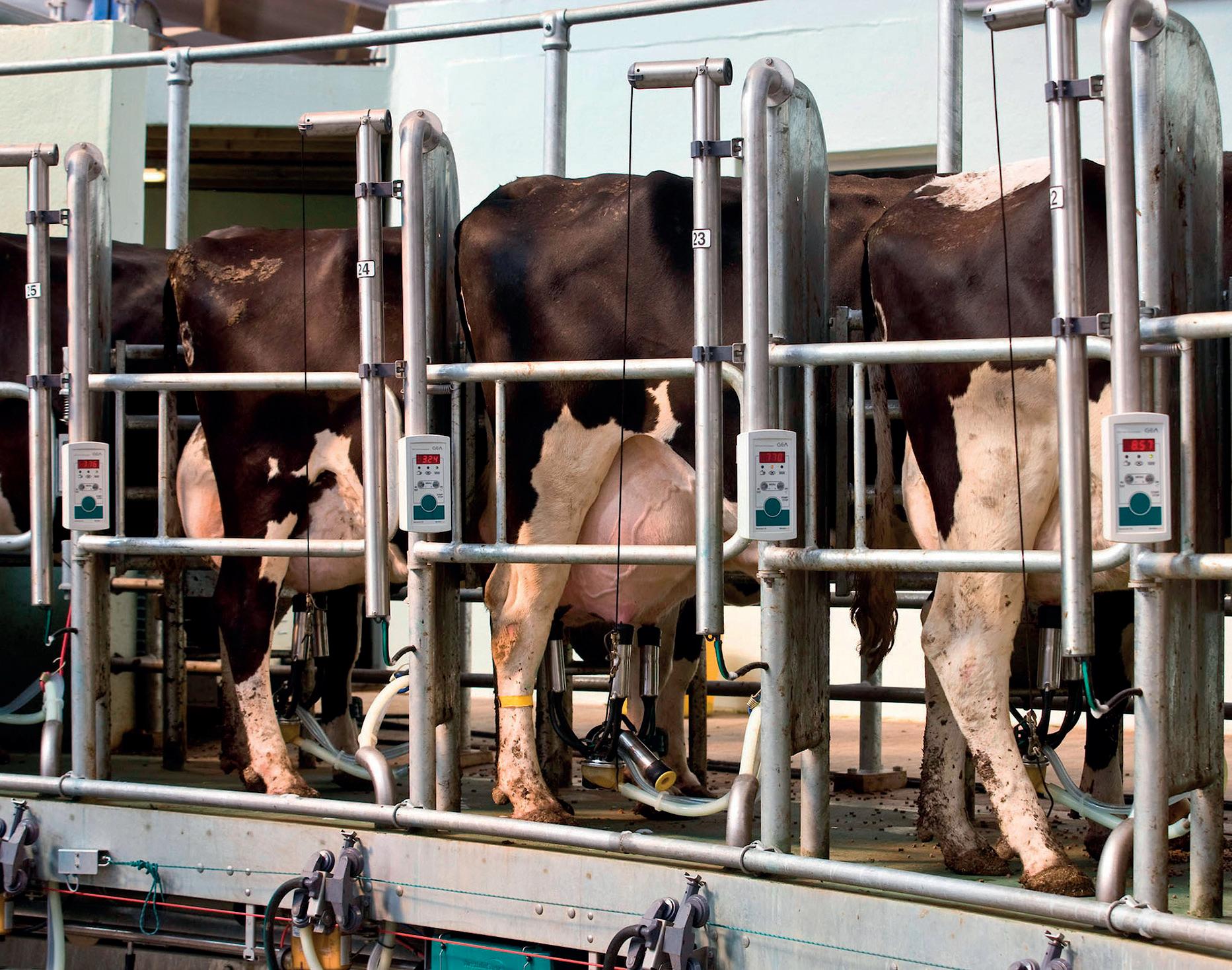

MULLER’S proposed takeover of Yew Tree Dairy is being investigated by the Competition and Markets Authority (CMA).
The authority said it was considering ‘whether the creation of that situation might be expected to result in a substantial lessening of competition within any market or markets
in the United Kingdom for goods or services’.
Muller said it had done a deal to buy the Lancashire-based dairy at the beginning of the year and said the acquisition of the company and its excellent processing capabilities and talented team was part of its ambition to grow in the UK.
Owned by the Woodcock family, Yew Tree Dairy draws milk from about 400 farmers in the North West of England and in Scotland, overlapping some of Muller’s milk field.
The company had sales of £214.5 million in the year to March 2023, but its operating profit fell by £6.3m to £5.6m.


Muller had sales of £2.332 billion in 2022 and has a farmer supply pool of 1,300. In comparison, Arla had sales of £2.5bn in the same year, while Saputo had sales of more than £500m.
The CMA has invited comment on the inquiry up until September 10, 2024.

By Cedric Porter
A SLIDE in wheat prices has been halted amid slightly more pessimistic forecasts for the global crop, with a fall in European production in particular.
Having dipped below £180/ tonne for the first time since March last week, the November 2024 wheat futures price on the London ICE exchange had crawled back to £181/t at the start of this week.
A small UK crop has been baked into the market for a while. Last week, Defra estimated that the English cereal and oilseed area would be the smallest since 1983 at 2.649 million hectares. Planting in the rest of the UK is thought to be down, although there are no official figures yet. The English wheat area alone has decreased by 11%, down to 1.402m ha.
AHDB estimates that the wheat harvest is just about complete in England and Wales, with regional

yields low at between 5.6 tonnes/ hectare and 8.3t/ha. That means a UK crop of between 10 and 11mt is likely – the smallest since 2020.
The shortage of British wheat means the UK is emerging as a major importer of milling wheat due to this year’s small and lowerquality harvest.
From early July to August 25,






the UK imported 234,000 tonnes of EU wheat, a 47% increase compared to the same period last year. This rise was despite a 20% drop in overall EU wheat shipments, which totalled 3.927mt during the first eight weeks of the season.
“Both millers and feed buyers in deficit areas have already been actively securing imported supplies to bridge the gap, which could result in wheat imports reaching more than 3mt this season,” said Simon Ingle at Frontier.
“The EU will be a major source of supply, particularly Germany for breadmaking wheat.”
The German wheat harvest is 15% down on last year at 18.03mt. The EU now expects soft wheat production for the whole of the 27-country union to be at 116.1mt,





















GOOD prospects for US crops have weighed on the market, but crops are not yet in the barn and there is still time for the weather to cause trouble.
The well-respected Pro Farmer crop tour took place last week.
It samples seven US states that are responsible for 70% of corn (grain maize) and 63% of soyabean production. It found that corn yields were up 2% on last year at 4.6 tonnes/hectare, but a little short of the 2021 record of 4.7t/ha.
Meanwhile, the survey counts the number of pods in a three ft by three ft plot. They were at 1,252 pods this year, a new record and up 6.6% on last year.
Dry weather in the US Midwest may impact on those good yields. Helen Plant, senior analyst at AHDB, said: “As at Tuesday last week, 12% of the US soyabean
Despite the tighter wheat supply across Europe and the UK, prices are still influenced by the global market. The latest average monthly export price for French Grade 1 wheat in August was €212/t (£179/t), an 11% decrease compared to the May 2024 price, and an 8.5% drop on the year before.
crop was in drought conditions, up 4 percentage points from the week before.”
She added that there are drought concerns in Brazil, too, while the Argentinian corn area may drop by 17% in 2024/25 due to pest and disease pressure, according to the Buenos Aires grain exchange.
Selling opportunities are likely to crop up over the next few months. Since its inception in July 2022 at £212/tonne, the November 2024 ICE wheat futures price has risen to £262/t in October 2022, before falling to £190/t in May 2023.
A year later, it hit £225/t, before sliding again. Meanwhile, earlier this week, a November 2025 price of £192/t could be locked in, with November 2026 wheat trading at £194/t. down 4.7mt on its previous estimate and about 10mt less than last year.


THE Government has pledged the UK’s accession to the Comprehensive and Progressive Agreement for Trans-Pacific Partnership (CPTPP) will not lead to an influx of hormone-treated, imported beef.
The statement followed news that Peru had become the sixth member of the 11-country, free trade bloc to ratify the terms of the UK’s entry, which will begin on December 15.
More than 99% of current UK goods exports to CPTPP members will be tariff-free once the deal comes into effect. The Government estimates the agreement could boost the UK economy by around £2 billion annually by 2040.
Earlier this year, tensions between the UK and Canada escalated when the then Business Secretary, Kemi Badenoch, blocked trade negotiations with the country over the potential importation of hormone-treated beef.
However, a spokesperson for the Department for Business and Trade said this week: “We have been clear that joining the CPTPP will not come at the expense of our
high standards and agri-food protections, and are joining on that basis.
“All imported food and drink products will still have to meet our requirements after we join, meaning hormone-treated beef will remain prohibited in the UK.”
A spokesperson for the British Meat Processors Association said: “For the meat industry, it certainly opens up some new opportunities, although we already have free trade agreements with many of the countries involved.
“But the main export focus will stay firmly on our nearest, biggest and most high-value market in Europe, where we can sell offal (a key component of meat exports and carcase balance) at near double the price of other markets in CPTPP countries.”
The industry body also said that while the deal will offer market opportunity, the ability to trade tariff free is a ‘two-way street’, with potentially more products coming into the UK.
“We will be monitoring how these markets open up in the coming months and years,” the spokesperson added.
EGG company Stonegate is renewing its avian influenza (AI) insurance policy for the second year.
It provides 180 days of free business interruption cover for its free-range and organic egg producers, with the option of buying further protection. Policies are provided by NFU Mutual.
Adrian Gott, chief executive of Stonegate, said: “We had 100% take-up of the policy when we launched the cover last year, which gives an idea of how successful it has been.
“We are in constant communication with our producers about how to create the best possible working environments and reducing risk is a big part of this.”







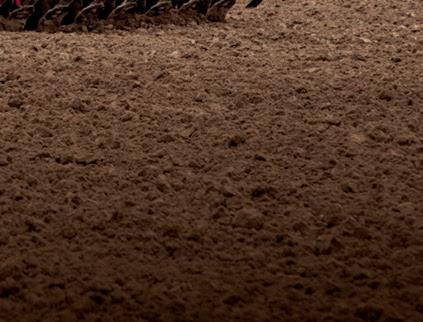
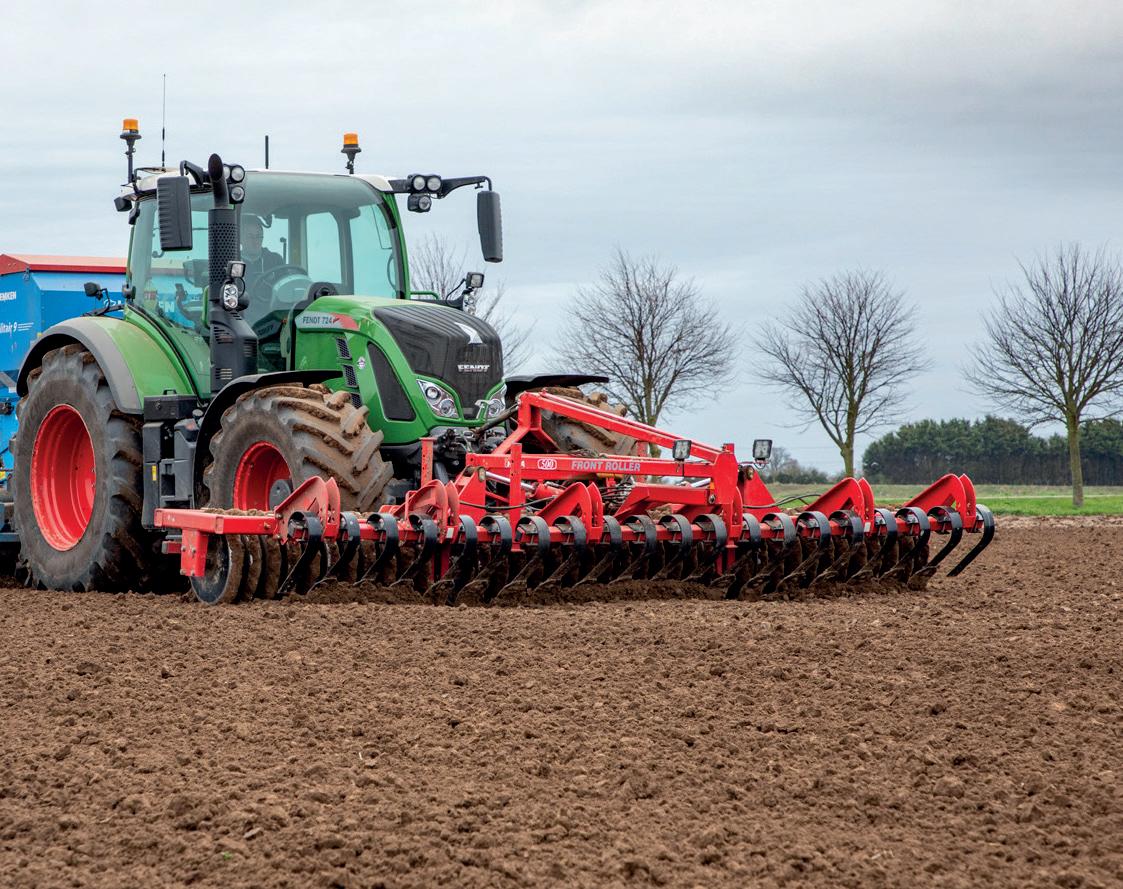
front weight that works for you
Works in a variety of soil types and conditions. Add a Shattaboard and the V-Profile front press cultivates, levels and consolidates ahead of any drill.






With succession the elephant in the room on many farms, Rachael Brown speaks to siblings Anna and Sam Hallos about how they are planning for the future.
For siblings Anna and Sam Hallos, the future succession of their tenanted upland beef and sheep farm in West Yorkshire, has been an ‘open and honest’ conversation around the farmhouse kitchen table for several years now.


Their ambition is to one day take on the shared responsibility of running Beeston Hall Farm.
Having been deeply involved in the family business from a young age, Sam and Anna, now 27 and 24, respectively, have started making decisions which will shape the farm’s future.


Their parents, Stephen and Rachel – who is the current NFU vice-president – continue to offer support and guidance.
“We have always talked – all four of us – about what the future holds for us,” Anna said.
Now, as they navigate the journey of succession, the weight of those decisions has grown.
“It has become less of Mum and Dad saying this is what we are doing,” she said, adding it was now more of a ‘four-way’ conversation, with the hope that one day in the future, responsibility will solely be handed over to her and her brother.




For Sam, who now spearheads the contracting side of the farm business, recent decisions have revolved around choosing equipment to boost productivity. For example, the investment in a new orbital wrapper, which reduces wrapping time to streamline operations and enhance efficiency.

we would not be here without the foundations Mum and Dad have laid.

While both Anna and Sam are relishing the opportunity to support the farm business in making key decisions, they share a strong admiration for what their parents have done since taking on the farm tenancy, and the changes they have made to ensure their children can now be employed by the farm and earn a wage.


Anna has already taken the lead on crucial decisions, such as which cattle and sheep to retain for future breeding and which sires should be paired with which animals.






“We are extremely grateful for what they have done to secure our future.”
Both Sam and Anna said sharing a sense of humour was key to running a family farm business, and when probed about their sibling dynamics, Anna said it worked ‘very well’.

Sam said: “What Mum and Dad have accomplished – from where the farm started to now being able to employ their own children – is a remarkable achievement.”
“If they have achieved that, then what can Anna and I achieve together?”
Anna said: “Looking at what we have ahead of us,
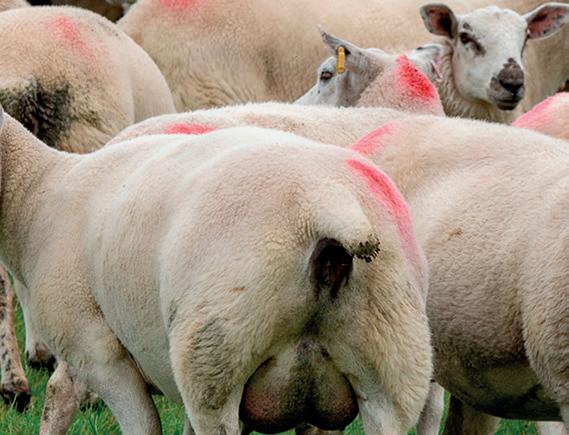

She said: “We have been very lucky; Sam is obsessed with tractors and I am obsessed with cows and sheep.
“We could sit here and say it is all sunshine and roses and we all get along, but at the end of the day we all have our moments. The key is coming out of those moments and being the bigger person.”
Sam emphasised the importance of communication in resolving issues on the farm and believes taking time to think things through prevents any ‘irrational’ decisions. He said: “There are four people involved, so when one of us proposes an idea, it takes time for the other three to mull it over.”
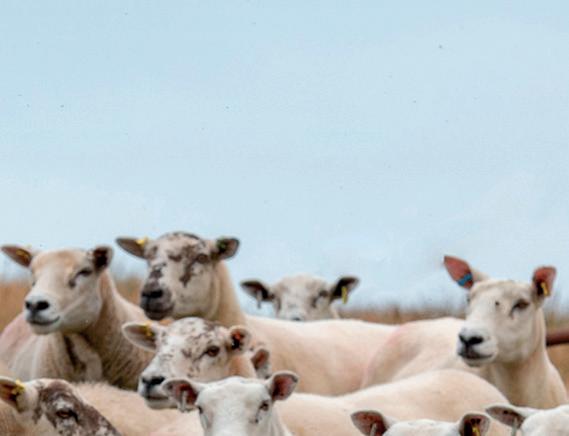
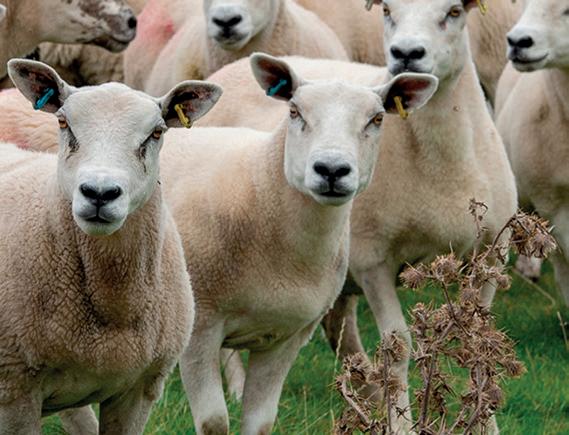
■ Location: Ripponden, West Yorkshire
■ Landlord: Yorkshire Water
■ Tenancy type: Two Agricultural Holdings Act Tenancies and two 10-year Farm Business Tenancies
■ Cattle: 200 cattle in total; Salers and Charolais cross calves
■ Sheep: 400-plus sheep in total; a mixture of Texel crosses, Lonk crosses and Blackface


Being open to compromise, learning and moving on from things which might not go to plan is also important when working as a family unit.
Both siblings also recognise the additional financial pressures of being tenant farmers but said keeping a positive relationship with their landlord, Yorkshire Water, was crucial.

Anna said: “It is important to keep the landlord in the loop of what we are doing and keeping them confident in the fact that Sam






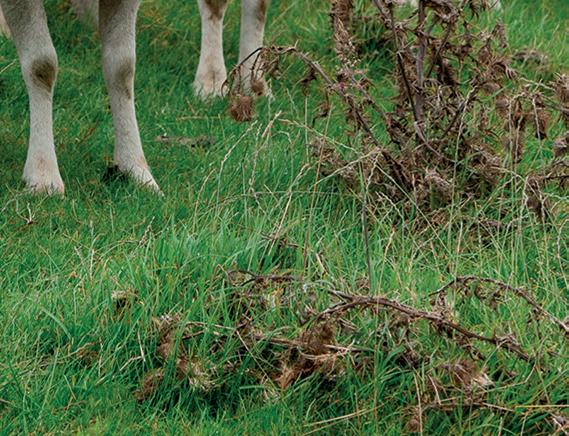
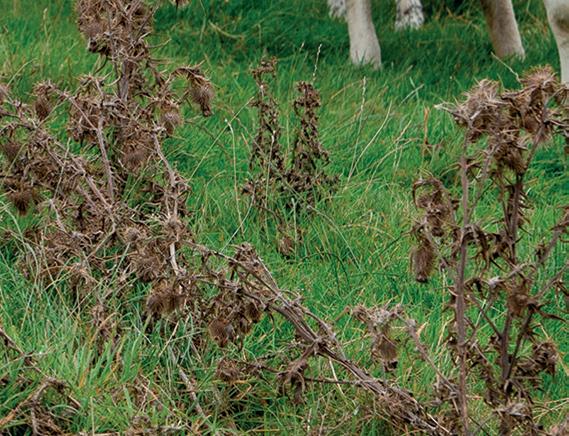




and I do want this and want to continue to invest in the farm.
“This is our home and we have always known it as our home and we want to it to remain that way.”
Sam echoed this sentiment and said the farm represents his family’s livelihood. Both he and Anna plan to stay at the farm indefinitely if given the opportunity.
He said: “That is why we need to work with the landlord, like Mum and Dad have always done, and we will continue to do so.”
Anna said that maintaining communication with the landlord does not necessarily require extensive discussions but instead was more about ensuring they are recognised and established in their presence.
“It is about saying, ‘we are here’, planting a seed, and showing that we are invested and interested.”
When it comes to the future direction of the farm, Anna said the focus was on being more productive.
She said: “It is not the case of getting bigger and bigger, it is using what we have to be productive, but showing the quality is still there.”
Sam agreed it was not all about numbers or scaling the business.
He said: “It is about making the farm both productive and manageable. As far as the contracting is concerned, it is fantastic and we keep getting busier, but again that all has to be balanced.
“There is also a huge farm here that we need to manage correctly. It is all a balancing act and not one outweighing the other. Everything needs to work together.”
Part of that balancing act is having knowledge of the financial side of the business.
Anna believes a crucial part of
As far as the contracting is concerned... we keep getting busier, but again that all has to be balanced
SAM HALLOS
their successful succession is to be fully aware of the financial figures. She understands sharing this information might be ‘scary for some parents’ at first.
She said: “But it has been so important for Sam and I to know

the numbers so we know what is actually going on and where we are at.”
Sam said: “We need to know how much things cost, how we are doing and know how to deal with the business at certain times of the year.
“There is a lot to get your head round, all sorts of different income streams, all sorts of different outgoings. Learning all of that is a huge part because, at the end of the day, it is all about running a successful business.”
When asked about advice to other families navigating succession planning, Anna said parents and children involved in the process must be open and honest. She said: “If you are going to run the family business together, you must know the finances of the farm.”
Anna said that being equal is also key, with both her and her brother paid exactly the same wage for the work they do on the farm.






The Labour Government’s plans to expand renewable energy and generation schemes could be ‘lifechanging’ for farmers, but the UK’s electricity infrastructure remains a stumbling block.
That was the warning from John Wallis, director at GSC Grays, adding grid capacity was a major question for the Government to answer.
For farmers considering using their land for wind or solar farms, understanding the available options will be crucial. Mr Wallis pointed out that even landowners not considering such schemes could face the imposition of power generation infrastructure through Compulsory Purchase Orders (CPOs).
Energy Secretary Ed Miliband has already approved three large-scale solar farms which were previously ‘stuck in planning’.
Mr Wallis expected this to trigger more projects. His company was involved in 40-50 projects in the North of England, focusing mainly on gridscale solar and battery storage, with some clients exploring wind projects.
He said: “In most cases, the farmer is not involved in running, managing or building [the projects]. They are ultimately leasing their land to a developer for a period of time and they receive an annual income from it.”
Currently, solar farm rents range between £2,100-£2,965 per hectare per year, with payments typically indexed to inflation.
He said: “These long-term, stable income opportunities are particularly appealing in an industry often characterised by volatility.
“We have seen a significant increase in solar schemes over the last five years, due to the improved financial viability of these projects.

“What has happened more recently is that the price of the equipment, such as solar panels and batteries, has come down, and, of course, the energy price has gone up.”
The question of grid capacity remained a challenge and Mr Wallis pointed out the national system was originally designed with central power stations feeding out power, rather than sporadic generation sites feeding power back into the system.
Mr Wallis said: “As a landowner you need grid connection, sufficient capacity within the grid, and planning consent. Often, we come across clients who like the idea of a renewable energy scheme, but fall short on one of those three factors.
energy system by 2030, the amount of infrastructure the Government will have to implement over the next five years is going to be vast.
“CPOs are the Government’s way of putting this infrastructure in place, sometimes without consent from the landowner.”
Mr Wallis also added that many clients are currently stuck in the ‘grid queue,’ having applied for grid connections but are unable to proceed due to capacity constraints, even with planning permissions in hand.
He added that while they were great opportunities during their operational phase, farmers should plan what happens at the end of term.

“To get anywhere near the Government’s target of creating a zero carbon
He said: “Decommissioning costs can be substantial, so it is essential to factor this into the planning process from the outset.”





nderstanding the legal considerations of renewable energy projects is vital for landowners looking to take advantage of the drive for renewables by the new Government.
Sam Mills, a chartered legal executive at Roythornes Solicitors, said the current legal frameworks may need to evolve to meet the growing demand for renewable energy.
On land use and property rights, Mr Mills said anyone seeking to host renewable energy installations would likely need to enter into land leasing agreements with renewable energy developers. He said: “It is vital these agreements are put together within the interests of landowners, while the developer retains a key interest in the feasibility of the project itself.
“These agreements will set out matters such as the lease duration, rental payments, maintenance and decommissioning requirements.
“A focus within the agreement before lease is to ensure the landowner can continue their usual practices up to the time the lease is granted and to thereafter effectively use the remainder of their property for continued agricultural purposes.
“As such, landowners should avoid short-term thinking, as such agreements can be active for many years.”
Additionally, agreements should cover access for construction, maintenance, and connection to the electricity grid.
He said: “As this activity can impact farming activities, concise legal agreements should be drafted beforehand to prevent disputes between farmers and energy developers.”
He added that renewable projects could present challenges for existing tenancies. He said: “Agreements may need to be amended for necessary installations, and the landlord and tenant should agree on both the works being carried out, as well as the subsequent split of any financial gain.”
The planning can be complex and time-consuming. Mr Mills said: “Ordinarily, such matters will be addressed by the developer and farmers will often want to provide input into any such agreement and will need appropriate provisions in place to ensure they have a fair say in the way the projects are facilitated.”
On the environment, under the Environmental Impact Assessment Regulations 2017 (EIA) require that certain projects, including large-scale renewable energy developments, must undergo an EIA to assess their environmental impact. It is important to ensure these obligations are placed onto the appropriate party.
Food production is also a key consideration, with the National Planning Policy Framework highlighting the importance of protecting agricultural land.
REGISTRATION for the Land, Leisure and Tourism Show is now open. Scan the QR code or visit farmbusinessshow.co.uk to register today.



Anyone seeking to host renewable energy installations would likely need to enter into land leasing agreements with renewable energy developers.

Mr Mills said: “Developers should assess the viability of the project in light of the land classification policies to ensure the project does not conflict with agricultural land protection policies prior to entering into an agreement with farmers.”
Attention to detail is said to be key for avoiding disputes on financial terms. He said: “This is where we
encourage farmers to enlist the help of a professional land agents who can assess things like the calculation of rent or revenue shares, payment schedules and provisions for inflation or changes in market conditions. There are also tax implications to consider too.”
Contracts should also include clear dispute resolution mechanisms, such as mediation or arbitration.


Agricultural drones have arrived.
• 50kg/80L payload
• Go where no tractor or quad can go
• Protect water logged ground. No damage to existing crops
• Whitewash or clean greenhouses or Polytunnels
• Spray Nematodes/slug pellets/ fertiliser
• Spray, cover crops
• Spray rate up to 22 L/min
• Spray width 3.5 to 9 metres
• Granular variable spread rate of up to 150kg/min
• Open fields up to 19Ha/h, orchards 2Ha/h Greenhouses/ Polytunnels 1 Ha/h





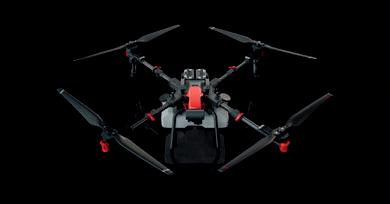
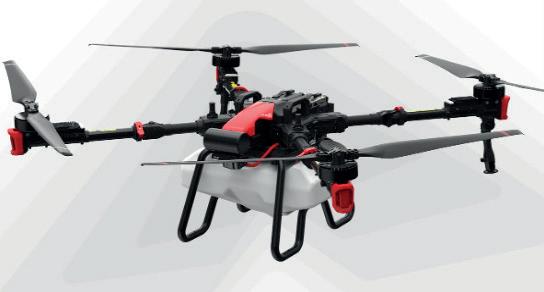

Battery storage systems are becoming more important in the UK’s energy landscape. Robinson and Hall takes a look at the opportunities.
Landowners who fall within a mile or so of a large National Grid substation or a future substation are being approached by developers offering to promote new battery schemes.
With the UK focused on renewables as it looks to reduce its reliance on fossil fuels, battery storage projects
are becoming increasingly important in the UK’s energy landscape.
These projects, which involve the installation of large-scale battery systems on land, play a crucial role in balancing electricity supplies during times of peak demand.
Battery technology continues to develop, leading to the increased efficiency of energy storage systems,


Battery storage projects are becoming increasingly important in the UK’s energy landscape.

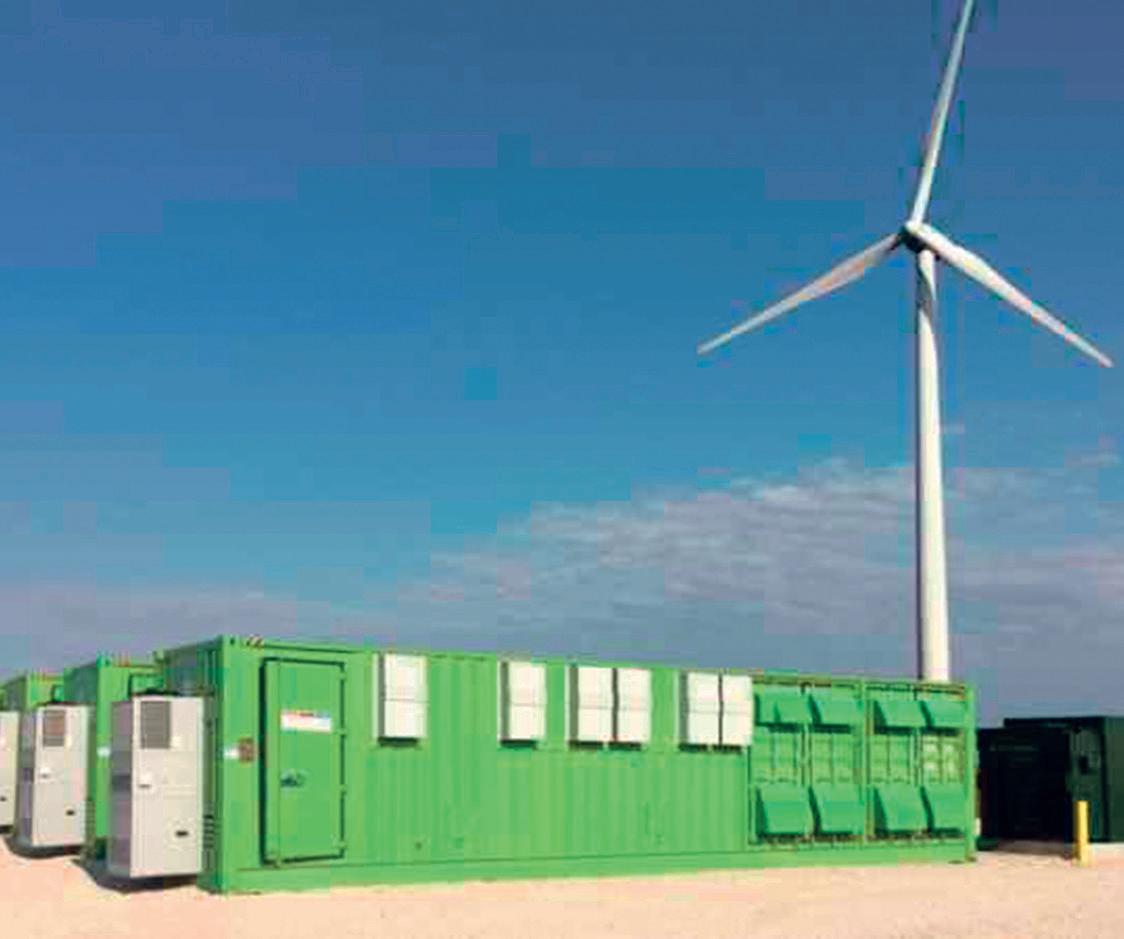
which opens opportunities for both landowners and developers.
The ability to store energy and release it when needed not only helps to balance the grid, but also allows for greater integration of renewable energy sources, therefore reducing the UK’s reliance on fossil fuels.
This is a key factor in the UK’s strategy to achieve net zero carbon emissions by 2050.
the landowner might receive for any given scheme.
The land area required for a battery storage project will vary from scheme to scheme, although batteries take up little space compared to solar and are considerably more profitable per area of land.

With over 40 years’ experience, we achieve planning consents through designing high quality solar projects that respect your land and deliver biodiversity enhancement.
Alfred Agbortoko, New Sites Manager +44 7789 901 252 | alfred.agbortoko@res-group.com res-group.com

EDF Renewables UK was set to bring more than 300MW of battery storage online, with six projects in construction set to go live in the next 12 months.
Simone Sullivan, head of solar, storage and private wire at EDF Renewables UK, said: “It would strengthen the UK’s capacity to integrate more renewables and allow the grid to be more flexible and resilient.
“Battery storage is critical to enhancing our energy security and to achieving the new Government’s 2030 targets.
“We have a strong momentum behind our projects, helping the UK to reap the benefits of cost-effective, clean renewable energy and a modern, flexible grid.”
But there were common pitfalls to avoid, with the battery sector still in its infancy, according to Robinson and Hall.
When exploring energy proposals, it is important to understand the specifics of these projects, including the process of connecting to the grid, predicted energy use, grid connection offers, heads of terms, letters of authority, grid connection queue management and land area requirements.
Understanding the grid capacity will also allow the landowner and promoter to understand the scale of any proposed scheme, which will fundamentally affect the total amount
An area of 0.4 hectares may hold a 15-30MW battery scheme. On the other hand, a solar scheme producing the same amount of power may require 61ha-plus.
A 200MW (5.2ha) battery scheme could store enough power for more than 300,000 homes.
Landowners who have previously been approached for a solar scheme should now consider whether they may have a greater appetite to explore the possibilities of batteries. Some proposals may consist of a mixture of solar panels and batteries.
The batteries can receive the electricity from the solar panels during the day and then export the electricity when there is greatest demand at a higher price per KW.
It would strengthen the UK’s capacity to integrate more renewables and allow the grid to be more flexible and resilient

Register now
REGISTRATION for the Land, Leisure and Tourism Show is now open. Scan the QR code or visit farmbusinessshow.co.uk to register today.



Editor, Farmers Guardian


It’s that time of year again when we prepare to gather to explore the future of farming and the exciting opportunities that lie ahead.
Iam looking forward to greeting you at the Farm Business Innovation Show, taking place on November 6-7, 2024, at the NEC in Birmingham. This year, the event is co-locating with the Land, Leisure and Tourism Show, making it an event not to be missed.
Powered by Farmers Guardian, the Farm Business Innovation Show is the UK’s only event dedicated to farm diversification. Over two days, you’ll discover inspiring ideas and invaluable support to help you make the most of your land. Whether you’re interested in agritourism, renewable energy, or direct sales, the range of exhibitors will be ready to discuss income-generating
opportunities that extend beyond traditional farming.
Diversification is no longer just an option; it’s a necessity in today’s economic climate. As highlighted in our recent articles, like the surge in demand for farm-based holidays thanks to the ‘Jeremy Clarkson effect,’ or the groundbreaking ‘Clarkson’s Clause’ which aims to ease the path for diversification, it’s clear that the landscape of farming is evolving.
At the show, you’ll have access to a packed theatre programme of seminars and discussions designed to equip you with practical advice and
solutions that can help secure a sustainable future for your farm. Unsure if diversification is for you? Why not network with others who have already taken the first step? Connect with industry experts, thought leaders, and fellow farmers who share your passion and ambitions.
I hope to see many familiar faces, as well as new ones, at the NEC in November, as we come together to embrace the changes in farming and explore the endless possibilities that diversification offers.
Thank you for being part of our community and enjoy the rest of the week ahead.
Diversification is no longer just an option; it’s a necessity in today’s economic climate
OLIVIA MIDGLEY
RECORD beef prices were seen at US retailers in July, but farmers were ‘more vulnerable now than ever’, according to the American Farm Bureau Federation.
The United States Department of Agriculture’s Economic Research Service reported the retail value of all fresh beef had surpassed US$8 per pound (£6.09/lb) for the first time in July, reaching US$8.15/lb (£6.20/lb).
Bernt Nelson, an economist at the federation, highlighted that recent years have seen high input costs and droughts, leading to the smallest cattle inventory in 73 years.
“Retail beef is already hitting record prices, but ranchers have not yet begun holding back females so retail beef prices are likely to climb higher,” he added.
With feed grain prices coming back about 25% in 2024, this has incentivised farmers placing cattle into feedlots, as well as keeping them on feed for longer.


“This large quantity of very heavy cattle available in the short run has resulted in a short-term reduction in price that allowed packers to secure a lot of fed cattle at a low price while selling for a high cutout value,” he said.
“Packers are gaining from high grocery store beef prices, while farmers are losing from the drop in price packers pay them.”
Mr Nelson said: “The crux of this story is the US cattle inventory has decreased to a seriously low level, but the





market is not providing incentives for farmers to grow the herd again, causing beef prices to rise to record levels.
“From a business standpoint it may not make a lot of sense to enter the cat-
tle business or expand because, while the cash price for cattle is elevated, increased costs for supplies, along with market uncertainty, have become obstacles to profitability,” he added.
By Alex Black
IRISH farmers are facing a ‘massive drop in family farm incomes’, with Irish Farmers’ Association (IFA) president Francie Gorman describing analysis from the Central Statistics Office (CSO) as the ‘starkest in over a decade’.
The analysis of farm incomes showed a reduction of nearly 50% last year when compared to 2022, putting huge pressure on farm household budgets.
Mr Gorman said: “This level of volatility is on a scale that individual farm businesses simply cannot handle. It also illustrates the cashflow problems that exist in every sector due to the unpredictability of output prices and stubbornly high input costs.”
The IFA president said this was one of the dominant themes discussed when he met with Ministers Jack Chambers and Paschal Donohoe.
“We are operating in a high-cost economy, but farmers are at the mercy of international price fluctuations. As sole traders, we cannot pass on our
costs and so we find our margins diminishing.
“The October Budget has the capacity to address some of these issues and we put them to both Ministers,” he said.
The figures for tillage and dairy showed the biggest drop last year, with cereals down 30% and dairy down 26%.
“We have put a proposal to Government for a support package for the tillage sector. Today’s analysis underlines the urgency of this. Targeted Agricultural Modernisation Scheme ceilings will have to adjust to take higher costs into account, with an additional allocation needed to ensure there is proper funding for the new slurry storage grant aid scheme proposed by the Government last week.”
The association was also holding regional meetings with major banks and credit unions to discuss finanace and cashflow, insisting the wider agri-sctor would ‘have to shoulder some of this’.
“The burden is too great for individual farmers to trade their way out of the impact of these extreme swings. We will be looking for support as bills fall due,” Mr Gorman added.
Edited by Angela Calvert – 07768 796 492 – angela.calvert@agriconnect.com
For more features, go to farmersguardian.com/farm-life



Often claimed to be at the centre of Great Britain, Brennand Farm, home to the Walker family, lies three miles from the Lancashire village of Dunsop Bridge, along a narrow track heading deep into the Trough of Bowland. Angela Calvert reports.

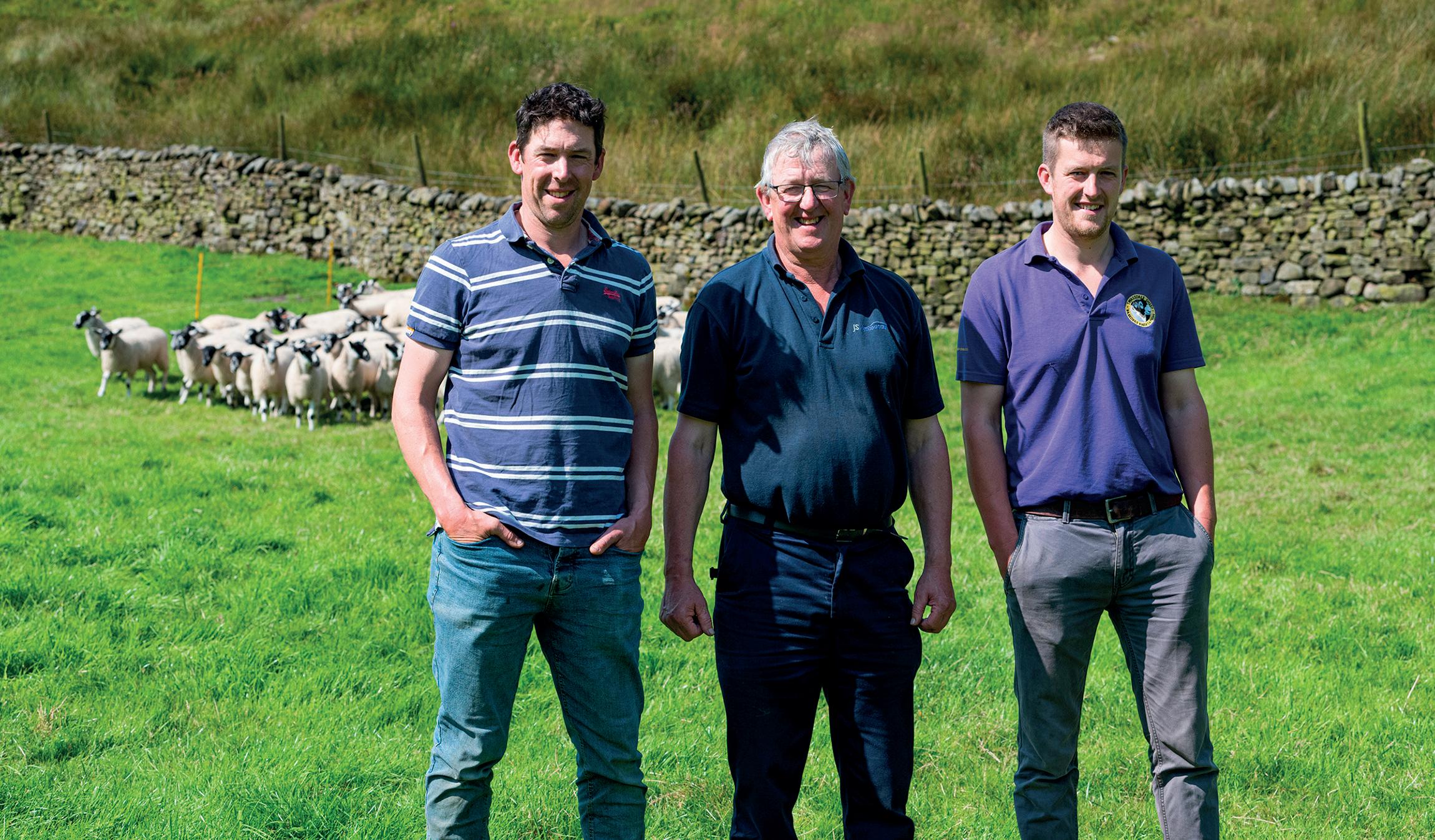

The Walkers moved to the farm where Geoff and his wife, Margaret, now farm with their sons, Rob and John and his family, in 1970.
It spans 1,214 hectares (3,000 acres) and 25 years ago they took on the neighbouring 1,214ha (3,000acre) Whitendale Farm, with both farms owned by United Utilities.
With the farm at 198 metres, (650ft) the land rises to 503m (1,650ft) at the top of the fell.
It comprises 12ha (30 acres) of meadow and 202ha (500 acres) of rough in-bye grazing, with the remainder heather moorland and permanent grass.
There are also a further 65ha (160 acres) in the valley which are
used for making big bale silage. With numbers and breeds of livestock to a certain extent determined by the topography of the land, the focus for the family is producing the best quality stock which will achieve maximum returns.
Geoff says: “The aim is to maximise the potential of every animal on the farm.”
The main sheep flock comprises 1,400 Swaledale ewes, 60% of which are kept pure to breed replacements, with the remainder put to Bluefaced Leicester rams to breed North of England Mules.
There is also a small flock of pedigree Bluefaced Leicester ewes to breed rams to use on the
Swaledales. A number of pedigree rams are also sold, with Bluefaced Leicesters topping at £12,000 at Hawes and Swaledales at £15,000 at Kirkby Stephen.
Rob says: “The Swaledale suits this farm. They do the job as efficiently as any breed.
“They lamb outside from the end of March and we have to have them below the water catchment level at lambing time.
“This is a wet farm with 100 inches of rain a year and this spring was particularly wet, but they coped well.
“They find plenty of shelter under the walls and look after their lambs.”
The Walkers are well known for the quality of their Mule gimmer lambs, selling about 450 every year.
Geoff says: “We have won at the show and sale for Mule gimmer lambs at Skipton for the past five years.
“We only recently started going to Hawes, but last year we won there as well, which was quite an achievement.”
The Mule wether lambs are wintered away on dairy farms and sold straight from grass, with Swaledale wethers also mainly sold off grass, and a few brought inside to finish.
The majority of the lambs go deadweight to Kepak which has a collection centre in Clitheroe.
It is not just their sheep which the family is known for. They have
also had great success in the show and sale ring with their cattle.
The herd currently stands at 40 cows, which includes six pedigree British Blues with the remainder Limousin and British Blue crosses.
John says: “We cannot have cattle on the fell or above the water catchment level, as part of our landlord’s agreement, which limits numbers and means we have to winter everything inside.
“This makes it quite a high-input system, which is why we have continental cattle rather than natives.
“Calving takes place from Christmas to May, but the farm has good infrastructure and the landlords are supportive, paying for a new shed to be put up for cattle housing.”
As well as selling some pedigree bulls and heifers, the aim is to produce cross-bred show calves from the commercial cows, which are usually sold at nine to 12 months old through Skipton auction mart.
They have won the Craven Champion show there on a number of occasions and have also sold at Pateley Bridge’s show potential sale for the first time this year.
Geoff says: “Our heifers in particular are in demand. We always
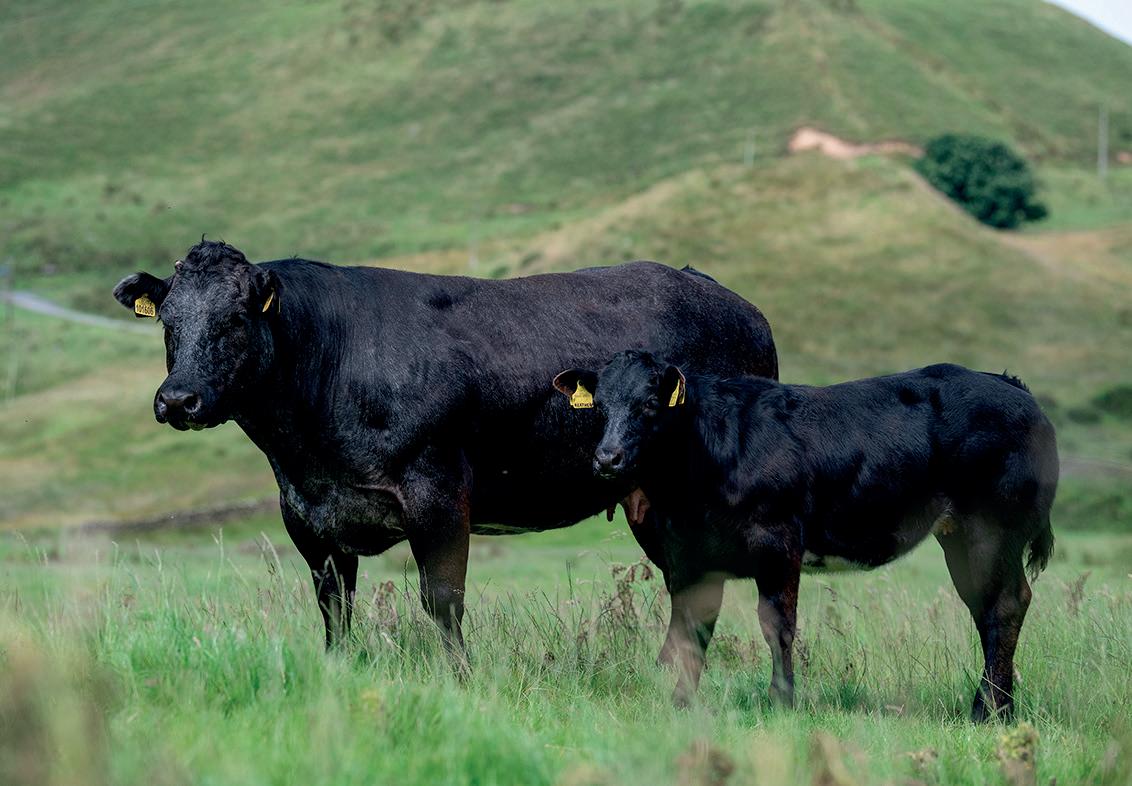
halter break at least half of them and they remember it for life, which makes them sought after as breeding cows as people know they will be easy to manage.
“The fact that we have high health status is also a good selling point.”
The Brennand pedigree British Blue herd was established about 20 years ago, with the aim being to breed their own bulls so they could maintain a closed herd.
Geoff says: “We do use AI and have bought in bulls in the earlier years, mainly from Phil Halhead, Norbreck Genetics, again to ensure we kept our high health status.
“We also flush two or three cows a year to make use of the best genetics.
“We feel the breeding on both sides, females as well as the bull, is really important in both cattle and sheep.”
The most influential bull in the
herd has been Cromwell Fendt and it was one of its sons, Brennand Panther, which achieved the family’s highest ever price of 18,000gns when it sold at Carlisle in May 2022.
Geoff says: “We have always usually sold bulls privately from home, mainly to repeat customers, but we have started taking a few to pedigree sales.
“It is a balancing act deciding whether to take them to auction in the hope of getting a higher price or maintaining that good average from home.”
The family recently hosted a British Blue Cattle Society open day which attracted a big crowd and included stockjudging and a charity auction which raised £6,000. They also auctioned the choice of four British Blue heifers, with the chosen heifer making £4,200.
Most of the moor is in the Higher Level Stewardship scheme and some of the in-bye land is now under a Sustainable Farming Incentive agreement.
Geoff says: “We can only get a tractor onto some of the lower ground, but we have done some

With the farm at 198 metres (650ft), the land rises to 503m (1,650ft) at the top of the fell.


Pedigree British Blue bulls are sold to commercial and pedigree herds.



reseeding. We have started using rotational grazing and more recently have started using electric fencing to make smaller paddocks, with the aim of producing more from forage.
“We only use a minimal amount of fertiliser as it is only allowed in certain places.
“The river runs right through the middle of the farm, so we do not spray but use a weed wiper where we can. We have also planted trees on some parts of the riverbank.”
With livestock sales such a key
■ Trading name – J.C. Walker and Sons
■ Brennand Farm and Whitendale Farm totalling 2,428 hectares (6,000 acres)
■ Both owned by United Utilities
■ The farm is ringfenced so no sheep are in contact with others on the fell
■ 1,400 Swaledale ewes
■ 30 Bluefaced Leicester ewes
■ Lambing percentage – 170% to Bluefaced Leicester, 140% off the fell
■ Three-crop Swaledale ewes are sold as drafts
■ 40 suckler cows including 6 pedigree British Blues
■ Herd has high health status –Johne’s level 1, BVD accredited, bTB4
■ All straw bought in
part of the business, marketing is important.
Rob says: “In this day and age, you have to have an online presence otherwise you miss out, as so many people do.
“We have a lot of followers on Facebook and it is good for farm-to-
farm sales as well before auction mart sales, but you have to have good photos.
“You do get quite a few timewasters and it does take up quite a bit of time to manage, but it creates a lot of interest and has definitely resulted in some new customers.”
As to the future, the family plans to continue aiming to produce the
best quality stock they can to maximise returns.
“Geoff says: “It is a slight concern that with fewer suckler cows about and some people moving to AI, there could be less demand for bulls.
“But on the other hand, there is a shortage of cattle so I think the market will remain strong, so we are optimistic for the future.”

The Walkers are well known for the quality of their Mule gimmer lambs.





This year, The British Farming Awards proudly introduced the inaugural Young British Farming Awards, sponsored by Massey Feeds and Harpers Feeds. Kate Netherwood, of Massey Feeds, said: “It has been a fantastic day and we are really proud to sponsor and support these young people going forwards.”
These awards are dedicated to celebrating the next generation of British farmers and the remarkable
XPassion, dedication and determination are used to describe our Young Farming Hero, 14-year-old Archie Steel.
Based in Eden Valley, Cumbria, Archie has a flock of 50 sheep, which he is solely responsible for, managing tupping, lambing and day-to-day care.
In addition to this, Archie supports his father with the family dairy herd of 240 Holstein Friesian cows and 140 heifers. He is responsible for the youngstock from birth, weaning and beyond, taking responsibility for vaccinations, colostrum testing and growth rate for calves.
In recent years, the farm has been hit with illness and injury, with Archie’s father off work with a knee injury, and a full-time worker off on long-term sick leave.
Archie has taken on huge responsibilities, from 5am milking
contributions they are making to the industry.
On Wednesday, August 28, 15 finalists, consisting of 12 outstanding young farmers and three exceptional Young Farmers’ Clubs, gathered at Cannon Hall Farm, home of the 2023 British Farming Awards Content Creator of the Year Rob Nicholson.
The event was hosted by Olly Harrison (Olly Blogs), with a special guest appearance by Rob.



Cannon Hall Farm
Barnsley, South Yorkshire
Wednesday, August 28, 2024
Social media influencer Olly said: “It has been great to see the enthusiasm in the room today.
“It is so important that we encourage these young people as they are the future of our industry.”
The five winners have been carefully chosen by our esteemed panel of industry professionals across the following categories: Young Farmers’ Club; Young Farming Hero; Junior Young Handler of the Year; Senior Young Handler of the Year; and Young Innovator of the Year.
This celebration not only recognises the achievements of these young trailblazers but also inspires the continued growth and innovation of the British farming industry for generations to come.
Rob said: “It has been a really uplifting event. To see so many keen and talented custodians of the future of farming is very encouraging. We have to get behind the future of the industry, and that future is here.”
to assisting vet visits and managing the day-to-day running of the farm.
Alongside milking, scraping, bedding and feeding the cow herd and flock of sheep, Archie works closely with Genus technicians to select the best bulls for the herd, while maintaining good grades at school and ensuring he never takes a day off from studying.
Archie works tirelessly on the farm before and after work, supporting his family and the farm.
He does this hard work quietly, without seeking any praise, but with a passion, determination and love for farming which is undeniable.
Archie said: “I am very proud and happy to have won. I would have been proud even if I hadn’t have won, but I hope that I can inspire others and encourage more young people to get into farming.”



XBased in West Wales, our Young Handler of the Year (Junior), Elliw Grug Davies, entered the showring at the age of four.
She has won numerous awards for her showing, including junior young handler at the Royal Welsh Show with Dorset sheep, overall champion with young handlers at Aberystwyth Show and Brecon Show, and at Beef Expo 2023, Elliw won young handlers under 14s with a homebred Limousin cross named Cowboy.
Elliw said: “I can’t believe it; I’m so happy but very shocked.”
Elliw is interested in all aspects of farming, from vaccinating to caesareans, assisting the family smallholding of 14 hectares (35 acres).
During lambing season, she moves to North Wales to help a relative

with their flock. When it comes to getting stock ready for shows and sales, Elliw enjoys helping out to ensure everything looks its best.
Halter training calves from a very young age has helped tame the herd, with constant grooming ensuring Elliw is safe in their presence.
Freelance stockperson Jennifer Hyslop has been involved in showing and preparation on the farm since Covid-19, with Elliw learning each step of the process from her.
Although she cannot compete in major shows due to her age, Elliw has showed at sales in Carlisle, successfully selling home-grown Blaencwm Sam for £32,000 in 2023. Elliw continues to learn and listen to judges’ comments and advice, and we expect to see much more from her in the future.

has been a fantastic day and we are really proud to sponsor and support these young people going forwards.”
XJennifer Hewitt, secretary of Lanark and District Young Farmers’ Club (YFC), said: “Getting to the final shortlist was a huge achievement for us, and winning is a very proud moment. We are proud to be here representing our club and Scottish YFCs.”
Based in Scotland, Lanark and District YFC is a small, but impactful organisation. With about 50 members, the club aims to support and encourage everyone who engages with it and the local community.
There were 14 members of Lanark and District Young Farmers Club at the awards presentation, and it had taken them three-and-a-half hours to get to Cannon Hall.
Recruitment to the club continues to grow, with a focus on welcoming younger members to inspire the next generation of farmers. The club provides both educational and recreational events throughout the year, offering an opportunity to learn new skills and meet lifelong friends during the process.
Annual events, such as the Tractor Road Run and Concert of the Year, give members projects to look forward to.
Charity work is a leading focus for the club, alongside raising money to continue to grow themselves.
Annually, they choose a charity to raise money for throughout the year, with the ‘My Name’5 Doddie Foundation’ being the most recent, supporting the
XOver the past three years Sebastian Carr has worked hard to successfully show his herd of pedigree British Saddleback pigs across the UK, passionately advocating for the breed at shows and through the media on BBC Countryfile and in local newspapers and radio.
He is also a British Pig Association (BPA) Junior Pig Club member and acts a junior reporter for the southern region.
Wanting to share his passion with others, he recently ran a ‘have a go’ pig agility event for members of the public at the Royal Isle of Wight Show.
The journey began when Sebastian was eight years old when his family gifted him four pigs for Christmas with the intention of rearing them for pork.
Since then, Sebastian has grown his pedigree herd, focusing

on genetics and breeding good traits into the herd.
In 2021, he was runner-up for the BPA New Pedigree Breeder of the Year Award, but in 2023, at 13 years old, he secured the title and attended the National Pig Awards in London, being the youngest ever entrant.
The pigs are reared at the family smallholding, with Sebastian taking responsibility for daily feeding and husbandry, tending to paddocks and checking pigs daily.
Owned solely by Sebastian, the herd contains five sow lines and three boar lines, including some of the rarest sow lines.
Alongside showing and breeding, he also has regular customers for the meat weaners and sells breeding stock across the UK.
Sebastian said: “I was very surprised to have won, but I was so happy to hear my name read out.”
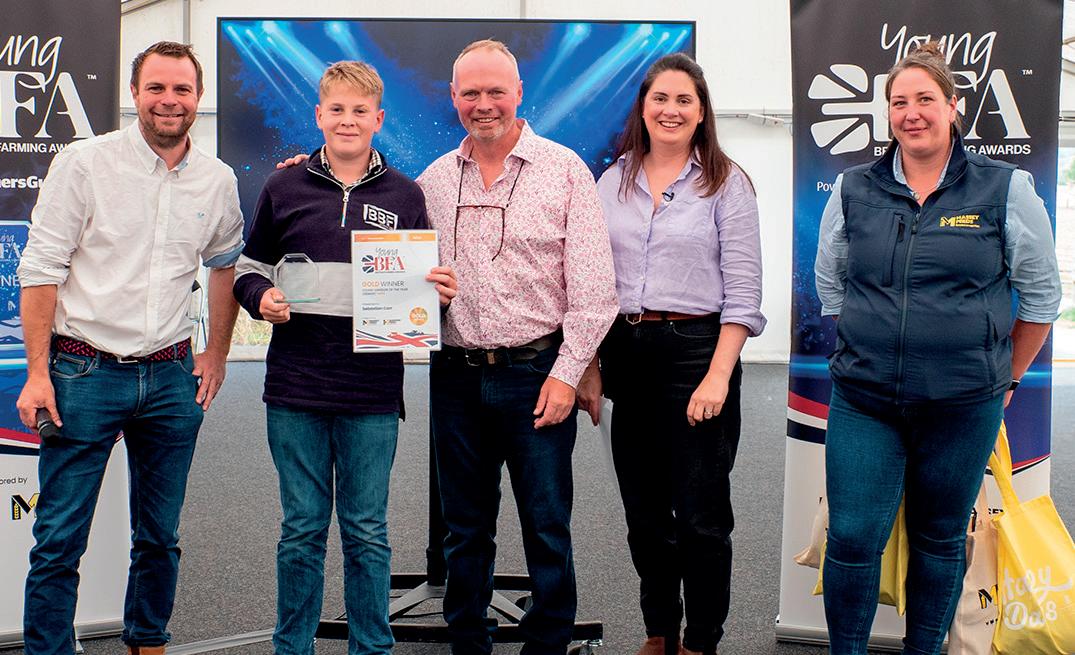

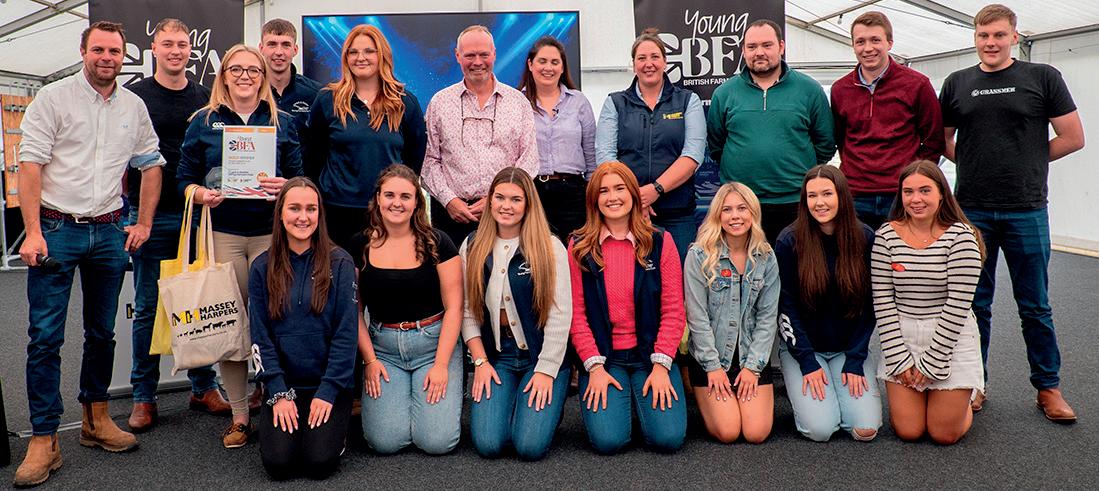
motor neurone disease community. The club made a donation of £10,000 last year, with £2,000 of their own funds being included in the final figure.
Educating the members to look after one another is important to the club, organising a mental health first aid course and subsequently allocating

members to become ‘health and well-being officers’.
The YFC has an increasing presence in the local community, helping with school sports day and attending local agricultural shows, all in the hope of welcoming future generations of Young Farmers.


XA passion for his flock of pedigree Ryeland sheep led to Mathew Price’s innovative thinking. He is currently in his fourth showing season and is dedicated to improving both himself and his flock.
Full of drive and determination, Mathew secured second place at the Kenilworth Show flock competition with four of his rams, successfully beating larger and more experienced farmers in the field.
This year, the loss of a good lamb to blowfly led to Mathew’s innovative thinking. His interest in technology and love of farming combined helped spark his imagination with an idea to develop a drone which connects to a phone via an app.
The drone would self-fill with Crovect and fly around the field, scanning sheep and lambs for blowfly and maggots using heat.
The app would recognise a patch of eggs or maggots which had hatched and, using the drone,
would apply a fan of Crovect onto the infected animal.
The drone would identify the sheep’s tag number to keep track of its progress, allowing for quicker treatment and better care for the flock while using less chemicals.
Following the application, the drone would return to its dock to charge and refill with Crovect.
Although this piece of innovative farm equipment is in its infantile stages, Mathew’s family aim to help him develop it in the future.
Until then, he will continue to be an ambassador for the industry, sharing his daily wins with classmates and teachers and driving interest for farming.
Mathew said: “I was really happy to win the award as I was up against some really tough competition. The idea for the drone came about after I had some sheep of my own with maggots and I was really annoyed about it, and that is when I thought about using a drone to help with this problem.”
Make sure to check out this week’s Next Generation feature on pages 110-111.
Edited by Jane Thynne – 07882 219 917 – jane.thynne@agriconnect.com
For more arable content, go to farmersguardian.com/arable-news-hub
● Yields look mixed as soils su er
WET weather is continuing to hamper the Scottish harvest as forecasts remain unsettled for the coming days.
Early figures posted in July by the Farm Advisory Service showed ‘modest gains’ in spot prices for Scottish grain and oilseeds compared to 2023, with wheat up £10/ tonne, feed barley up £15/t and oilseed rape up £38/t (an 11% gain). Malting barley harvest values remain very similar to this time last year at circa £225/t.
However, incessant rain across July and August has done nothing to aid growers. According to the Met Office, central and south west regions of the country received more than double the average August rainfall, and in some areas it has been the wettest period on
record – a weather station in Achnagart, Glen Shiel, West Highlands, notched up 785.44mm for the ‘summer’ months.
Tayside farmer and agronomist
Adam Christie says progress was eventually made last weekend, although it was the only ‘significant’ movement for weeks, leaving the ‘bulk of the harvest still to come in’.
“Spring barley is our major crop and there are large areas still left to harvest,” he says.
“Part of the issue is most of it is only just coming fit now. It has been such a late season. Most of the crop was not drilled until late April or even into May.
“There is a real challenge now to get even a short dry spell – some areas have seen 20mm of rain a day. I would not yet say that things cannot be salvaged, but I would say most
EX-FARM malting barley prices so far in 2024/25 are sharply lower than in the early months of last season, figures from AHDB reveal.
For the week ending August 29, the Corn Returns state premium malting barley for spot delivery averaged £176.60 per tonne. This is notably lower than the average for the last week of August 2023, which was £222.20/t.
The figures also reveal that last week’s price equated to just £26.30/t more than the spot UK average feed barley price. A year ago, the gap between spot ex-farm premium malting and feed barley was more than £60/t.
Helen Plant, senior analyst at AHDB, says: “While both winter and spring crops so far are reported to be useable within the UK, this could
PICTURE: GETTY

According to the Met Office, central and south west regions of Scotland have received more than double the average August rainfall.


growers will go now if they get their wheat [to a moisture level of] below 25%, and if the spring barley approaches 20%, combines will roll.”
Mr Christie says there have been positives in terms of yields, which he generally describes as a ‘mixed bag’.
“A lot of people have been pleasantly surprised by their wheat yields. There have been some fairly adequate wheat crops that have yielded surprisingly well,” he says.
prove a challenge for exporting. Higher nitrogen levels are required for continental malting, so the lower levels in the 2024 crop could mean more barley needs to find a home in the UK.
“This is likely contributing to ex-farm malting barley premiums over feed barley being notably lower than this time last year.”
The figures account for the fact spring barley harvest is at an earlier stage, with 32% complete by August 28, although AHDB says samples analysed so far also show a similar pattern. Spring barley samples are averaging 1.45% N, with the majority below 1.6% N despite being weighted to the south and east of England.
“But the problem is that is what the yield meter tells them when they are in crop; it does not tell them about the part that was flooded out – the headland that did not take. Whole field yields will not be startling owing to the water damage we have had.”
Yields
According to Mr Christie, spring barley yields have varied between mediocre and excellent.
He says: “We are trying to get the message to farmers that you have to put things into context. We have been wet since mid-October 2023, so it is impressive we have produced the yields we have. Given that the soil has been saturated, I am actually amazed by the resilience of these crops and what they have produced.
“We will not be dining out on this harvest – it is going to be a tough one. Yields may be down, and prices
We will not be dining out on this harvest – it is going to be a tough one
ADAM CHRISTIE
may be down, and that is without the cost of drying and planting in the first place.”
For 2025, Mr Christie says it is important growers consider all the options.
“Think really carefully about which land you plant and the varieties you choose. Do not just put seed in the ground because that is what you have got. Select your seed accordingly and you will be rewarded for it,” he says.
“The soils are my big worry. I would like to see farmers take some time to carry out some major restoration. I am not sure anyone has appreciated how much damage has been done. It has been a challenging season, but we have been here before and we will be again. But we will not let those challenges beat us.”
HALF of the fertiliser used on UK wheat crops could be removed without yield or quality penalties if a combination of nitrogen-capturing technologies is successful in trials. Defra has funded a £1 million project under the Farming Innovation Programme to investigate the potential to create a foliar photocatalyst-and-endophyte prototype that could help cereal and oilseed crops fix their own nitrogen.
The R-Leaf project, delivered through Innovate UK, aims to not only improve growers’ profit margins, but also reduce air pollution.
Project lead Crop Intellect is heading up a six-partner consortium,alongside the UK Agri-Tech Centre, Dyson Farming, Barworth Research, the Allerton Project and the University of Lincoln, aiming to deliver a novel approach to crop nutrition.
Dr Apostolos Papadopoulos, founder of Crop Intellect and R-Leaf developer and IP holder says:
“The photocatalyst is a specially processed titanium dioxide that uses daylight to capture and convert nitrogen oxides (NOx) – known air pollutants –directly into crop-usable nitrates. These small but continuous doses of nitrate add up to an average of 50kg N/ hectare during the growing season.”
Extensive independent trials are said to have demonstrated R-Leaf’s positive impact on crop productivity, with a 6% yield increase seen in cereals. Data also shows that R-Leaf can decrease the need for synthetic nitrogen fertilisers by up to 25%.
In addition to converting pollutants (NOx) into nitrates, R-Leaf also breaks down the greenhouse gas nitrous oxide.
Defra has funded a £1 million project to investigate the potential to create a foliar photocatalyst-plus-endophyte prototype that could help crops fix their own nitrogen.


R-Leaf is already being used by UK farmers, but recent experiments identified an opportunity to combine the photocatalyst technology with endophytes. This species of bacteria forms symbiotic relationships with plants. Nitrogenfixing endophytes capture atmospheric nitrogen, converting it into
ammonia for supply to the plant, in exchange for organic carbon and other nutrients.
“When we used these two technologies together in a ‘farm standard’ crop of wheat, we found what we believe to be a synergistic effect, with a 5% yield increase over and above the individual applications.
“Our estimation is that by combining R-Leaf with an appropriate endophyte, we can reduce nitrogen usage in wheat by 50%. That is potentially a £100/ha profit for a UK grower. It is this ‘dream combination’ that the consortium seeks to collaboratively research and develop over the 24-month project,” adds Dr Papadopoulos.
AS the countdown to the 2024 sugar beet harvest begins, sugar processor British Sugar has announced beet intake opening dates at its factories in Bury St Edmunds in Suffolk, Cantley and Wissington in Norfolk and Newark in Nottinghamshire.
The Bury St Edmunds and Wissington factories will be the first to open their doors, on September 16.
This season’s harvest follows one of the longest sugar beet campaigns in history, with the wet weather-stricken 2023/24 crop harvest finally completed on April 19, 2024, 228 days after it got underway.


Sugar beet factories will be opening their doors from September 16 as the 2024 harvest gets underway.

SOURCE: BRITISH
Achieving high levels of weed control in wheat is doubly important this autumn, with a large area expected to help rotations and finances recover. Farmers Guardian reports.



FARMING in Shropshire at a relatively exposed site between 150–200 metres elevation, Andrew Williamson aims to drill in September, as from his experience, it is the economic optimum with reliable establishment.
“Last year, we were delayed by wet weather in September, but we managed to drill in the second week of October and apply the pre-em. Unfortunately, Storm Babet hit not long after with over 50mm of rain falling in one day. You can imagine what that did to crops and the pre-em herbicide.”
Using a Horizon direct drill to establish crops, Mr Williamson does very little cultivation, only to incorporate manure and biosolids. The move to direct drilling was to make the farming system more resilient, but last autumn he noticed that neighbours with a plough and combi drill seemed to cope better with the wet weather.

An increased area of winter wheat plantings could put herbicide timings under pressure this autumn.
With an expected increase in the winter wheat area and relatively early drilling, the last week of September and the beginning of October will be very busy, says Bayer’s Matt Siggs.
“The sheer quantity of fieldwork will put pressure on weed control and the danger is that the herbicide timing slips,” he says.
“We recommend applying the first part of the residual programme at the true pre-em timing within 48 hours of drilling. Weed control is less reliable if there is a significant delay and you will be dealing with the consequences all the way until harvest.”
Mr Siggs recognises delayed drilling is a difficult topic and without a crystal ball there is no definitive answer, he says.
“A week’s delay still helps reduce weed levels in the crop. In dry condi-

tions especially, waiting for moisture to aid establishment and herbicide performance is worthwhile.”
Seedbed preparation is an important part of herbicide efficacy. A good-quality seedbed allows rootacting herbicides to move to the weed germination zone and take effect. Rough and cloddy surfaces tend to cause uneven spray distribution so some parts of the field will be poorly protected against weeds. In much the same way, applying herbicides too fast – more than 12kmph – or in windy conditions will have the same result.
A week’s delay still helps reduce weed levels in the crop. In dry conditions especially, waiting for moisture to aid establishment and herbicide performance is worthwhile
MATT SIGGS
“I still think direct drilling is the right approach, but coping with wet autumns is something we need to improve. Drilling spring crops was fine, and the soil structure is resilient and there has been relatively little damage to soil despite fieldwork in wet conditions.”
He points out that without cultivation, the soil surface tends to stay more moist. Typically, that would be a benefit for crop establishment and pre-em herbicide performance, but for the exceptional quantity of rain last autumn.
In cereals, Italian ryegrass is the main problem weed. He uses Liberator (diflufenican + flufenacet) + Proclus (aclonifen) pre-em and sometimes follows up in spring with a post-em on problem areas as well as hand rogueing. Until two years ago, weeds had been well under control, but wet and mild winters have undoubtedly encouraged ryegrass. Nevertheless, he prefers not to use late drilling for control because October-drilled crops are not reliable at his location.
A wider rotation with a good balance of spring crops is the main cultural weed control method in a six-year rotation, comprising two wheats, oilseed rape, oats and barley.

Zero tillage practices can enhance grass-weed seed predation, contributing to sustainable weed management.
● Trials assess influence of tillage practices
By Teresa Rush
WEED seed predation by rodents and beetles is a natural process which can contribute to weed suppression in farming systems.
Work underway at NIAB is assessing the influence of tillage practices on predation in black-grass, wild oats and meadow brome weed populations in conventional and no-till systems.
PhD researcher Jasper Kanomanyanga’s work will revisit some of the basic information available on weed lifecycles, particularly as much of this information was obtained during an era of predominantly winter cropping and intensive cultivation.
Mr Kanomanyanga has been comparing weed seed predation levels across different seasons in three longterm conventional tillage and three long-term zero tillage fields. He has completed two trials, each spanning a five-week period during autumn 2023
The findings suggest that zero tillage practices enhance weed seed predation



and spring 2024 within the same fields, to evaluate differences across fields, weeds species and seasons.
He says: “Higher predation rates were noted in zero tillage fields compared to conventionally tilled fields, probably due to their ability to harbour predators like rodents and insects. Predation levels varied significantly between different weed species and seasons.
“The findings suggest that zero tillage practices enhance weed seed predation, contributing to sustainable weed management.”
Percentage of black-grass seed lost to predation in autumn under no-till reached close to 60% in one field, while figures for wild oat and meadow brome were around 75% and 65% respectively. Under a conventional system the highest predation levels recorded were between 30% and 40%.
Weed seed predation in spring was much higher across both tillage systems, approaching 100% under a no-till practice.
Adoption of zero tillage practices may promote natural weed control through increased predation rates, says Mr Kanomanyanga.
“Understanding the influence of tillage practices on weed seed predation can inform farmers’ decisions regarding sustainable weed management strategies.
“Incorporating zero tillage methods may offer cost-effective, environmentally-friendly weed control options for regenerative agriculture. Seed predation is something we can definitely incorporate into our weed management programmes,” he adds.


Edited by Angela Calvert – 07768 796 492
For more sales content, go to farmersguardian.com/shows-sales
l Overall champion tops prices at 18,000gns
FEMALES led the trade at the Dutch Spotted Sheep Society show and sale at Carlisle when selling to 18,000gns.
This was for the winning ewe lamb and female and overall champion, Hazelberry Heaven, a Drumhirk Decider daughter out of Hazelberry Felicia from Callum Dodd, Lockerbie. The buyer was Messrs Johnston, Fivemiletown, Co Tyrone.
The first prize-winning shearling gimmer, Glan-Y-Mor Gift by Drumard Everest from the Jones family, Talsarnau, Gwynedd, sold for 4,000gns to Messrs Difford, Nelson, Mid-Glamorgan.
Second prize
Messrs Tomlinson, Ashbourne, then paid 3,500gns for the second prize shearling gimmer, Lochlad Garland, by a Hiroshima imported sire from A. and P. Parker, Lockerbie.
Rams sold to 5,000gns for the win-


ning shearling and reserve male champion, Hazelberry Gaffer, a Carlaustan Everest son consigned by Messrs
Overall and female champion, Hazelberry Heaven, from Callum Dodd, Lockerbie, which sold for 18,000gns to Messrs Johnston, Fivemiletown, Co Tyrone.
Dodds which was knocked down to Messrs Roberts, Shrewsbury. Making 4,000gns from the Jones
THE Dorper Sheep Society sale at Carlisle topped at 2,000gns for Knotlow Kevin, a shearling ram by Dell Dorpers Dice out of Knotlow Jo from J.S. and M. Hollinrake, Bux -
ton, which sold to Messrs Tester, Biddenham, Kent.
Next, at 1,200gns, from the same vendors was Knotlow Knuckleduster, a shearling ram by Dell Jugger-

Sale leader, Knotlow Kevin, from J.S. and M. Hollinrake, Buxton, which sold for 2,000gns to Messrs Tester, Biddenham, Kent.
naut which was knocked down to Messrs McAulay, Carlisle.
Females sold to 1,100gns for Knotlow Karina, a shearling gimmer, also by Juggernaut and from Messrs Hollinrake. The buyer was Messrs Nelson, Castle Douglas.
Another shearling gimmer from Messrs Hollinrake, Knotlow Koda by Knotlow Jackhammer, made 750gns to Messrs Murray, Canobie.
AVERAGES
MV-Accredited – 2 aged ewes, £315; 22 shearling gimmers, £446.25; 1 crossbred female, £262.50; 6 shearling rams, £886.25; Non-MV-accredited – 61 cross-bred shearling gimmers, £169.05. Auctioneers: Harrison and Hetherington.
CALVES from Wills Bros’ Willsbro herd, Wadebridge, topped the prices at the Select Sale at Exeter which featured youngsters from two leading Cornish herds, Willsbro and the Mitchell family’s Laram herd, as well as a small consignment from the Dulais herd of Welsh breeder Nev Roberts.
Topping the sale at 3,000gns was a four-month-old calf from the Rachel family by Siemers Pfct Hardy and bred from 15 generations of EX cows. The buyer was Robert Martin, Carlisle. Willsbro Dynasty Rae 5865 out of
an EX94 dam bought by Messrs Wills for 21,000gns at a Sterndale sale made 2,600gns to the Harris family, Winkleigh.
The Laram consignment sold to 1,900gns three times for served heifers, with two going to Blaise Tomlinson, Leicestershire, and the other to Mark Thomasson, Cheshire.
The top Dulais lot at 1,600gns was an eight-month-old calf from the Sharon family which sold to Phil Bird, Axminster,
The biggest volume buyer was Martin Evans Farming, bidding on Marteye which bought 35 head for the Priddbwll herd on the Welsh border, while Baltier Farming Co bought 11 animals to go to South West Scotland.
AVERAGES
Laram herd – 55 served heifers and calves, £1,108; Willsbro herd – 47 calves, £1,074; Dulais herd – 6 calves, £1,130.
Auctioneers: Kivells with Norton and Brooksbank.
family was the fourth prize shearling ram Glan-Y-Mor Goldstar by Glencoy Chance which sold to Robertson’s Farm Shop, Bradford.
The winning ram lamb, Glencoy Halfwit by Flash, an imported ram from Liam Campbell, Ballymena, made 3,200gns to Messrs Foster, Barnard Castle.
AVERAGES
4 aged rams, £1,089.38; 32 shearling rams, £888.56; 49 ram lambs, £784.29; 5 aged ewes, £640.50; 91 shearling gimmers, £834.35; 54 ewe lambs, £1,068.86.
Auctioneers: Harrison and Hetherington.
5,400gns
THE Hean herd of pedigree polled Hereford cattle was dispersed on-farm at Saundersfoot, Pembrokeshire, on behalf of Hean Castle Estate, topping at 5,400gns.
This was for 2017-born Hean 1 Plover 878, a granddaughter of Glenvale 1 Plover 412, one of the herd’s most influential cows, and by Studdolph Topper. It sold, with a heifer calf at foot, to Vaughan Farms, Leominster. Next, at 5,000gns, was the Solpoll 1 Superduty daughter, Hean 1 Acorn 187, with heifer calf by Hean 1 Tullis which sold to Messrs Lewis and Codd, Haverfordwest.
Making 4,400gns was Hean 1 Diadem 053, also with a heifer calf by Superduty which was knocked down to S. Chilman, Presteigne, who also paid 4,200gns for 2019born Hean 1 Plover 006.
In-calf heifers topped at 4,200gns for Hean 1 Doris by Superduty which sold to T.G. and E.I. Thorne, Milford Haven.
Stock bulls peaked at 5,000gns for the 2018-born Solpoll 1 Superduty, which went to Vaughan Farms.
AVERAGES
64 cows and calves, £2,641.41; 17 in-calf cows, £1,655 34; in-calf heifers, £1,692; 31 bulling and maiden heifers, £1,044.75; 5 stock bulls, £2,919. Auctioneers: Halls.
A TRIO of 10,000gns bids helped deliver a record ram lamb average of £1,508.17 at the Northern Irish National Texel sale at Ballymena.
The first 10,000gns bid came for the champion from the pre-sale show, Forkins Hawkeye from Alastair Gault, Newtownabbey.
This son of the 100,000gns Strathbogie Gypsy King out of a dam by Sportsmans Dare Devil has a texelplus index in the top 5% of the breed.
It sold in a five-way split to James Wilkinson, Ballygroogan, John Trimble, Curley, Adrian Liggett, Corbo, Philip Whyte, Innisrush and Stanley and Martin Warnock, Straidarran.
Next at 10,000gns was the first of two from Jonny Cubitt, Ballymena, in the form of Drumcon Hall of Fame.
Again by Gypsy King out of a Rhaeadr-bred dam by Teiglum Younggun and a maternal brother to the 160,000gns Rhaeadr First Choice, it sold to Stephen Etherson, Killans, with a half share retained.
The other at this price was Drumcon History Maker, another by Gypsy King. Out of another Rhaeadr-bred dam, this time by Garngour Envoy II, it sold to Douganhill Farms, Castle Douglas, and Nick Legge, Leominster.
Next, at 6,000gns, was the reserve overall champion from Ivanna Strawbridge, Coleraine.
This was Lynbrook Hercules, another by Strathbogie Gypsy King out of a dam by Strathbogie Dirty Dancer. It was bought by the judge, John Greene, Co Donegal.
Shearling rams peaked at 4,000gns for Artnagullion Godfather, from Brian and William McAllister, Kells.
The son of Blackadder Doddie out of a dam by Midlock Yohann sold to A. J. Robinson, Downpatrick.
At 3,600gns from Henry Gamble,



Co Down, was the first prize shearling, Springwell GI, a Ballydesland Eddie son which was bought by T. Hynes, Newry.
Leading the female trade at 7,500gns was the section champion, a Coniston Equinox daughter out of a Knap-bred dam by Sportsmans Cannon Ball, from Mark Priestley’s Seaforde flock, Downpatrick.
The buyer was Alan Blackwood, Muirkirk.
At 3,000gns from Martin McConville’s Glenhone flock, Co Down, was a Sportsmans Dare Devil daughter, which bought by W.M. Doherty, Glebe, Co Donegal.
AVERAGES
189 ram lambs, £1,509.17; 66 shearling rams, £1,399.20; 13 gimmers, £1,530.58.
Auctioneers: J.A. McClelland and Son.
THE Deerslet pedigree Holstein herd owned by the Lawson family, Carnforth, was dispersed at Carlisle, topping at 4,300gns for Deerslet Altatop Viola Red, a red and white two-year-old classified VG87, due with its second in February to Ryder Red sexed. The buyer was the Brown family, Carnforth.
Deerslet Explosion Viola VG88 sold for 4,200gns to Shaun Rennie, Ayrshire.
Deerslet Hotline Viola EX92, due with its fourth calf in March and carrying a Mystique Animation female pregnancy, sold for 3,000gns to the Cairnpat herd, Stranraer.
Also selling for 3,000gns was Deerslet Applicable Binky, due to Delta Everton sexed, which went to
the Lawrence family, Grange-overSands.
In-calf heifers topped at 2,600gns for Deerslet Top Barb Red, due to AltaKamara sexed in December, which was bought by Cote Farm Partnership, Carnforth.
Heifer calves topped at 2,200gns for Deerslet Aladdin Lucky Red, bought by the Halhead family, Cockerham.
AVERAGES
108 cows and heifers in-milk, £2,359.68 (including 50 heifer calves); 23 in-calf heifers, £1,887.71; 37 short-bred heifers, £1,209.48; 25 bulling heifers, £1,015.67; 50 heifer calves, £930.09. Auctioneers: Harrison and Hetherington.

Forkins Hawkeye, from Alastair Gault, Newtownabbey, which sold for 10,000gns to James Wilkinson, Ballygroogan, John Trimble, Curley, Adrian Liggett, Corbo, Philip Whyte, Innisrush and Stanley and Martin Warnock, Straidarran.
BONNY and Bold Flaming Glory, the winning ewe lamb and reserve overall champion, topped the Badger Face Texel Sheep Society show and sale at Carlisle at 3,000gns.
Consigned by Tara O’Brian, Co Londonderry, the daughter of the imported ram, Cleenagh Makavelli out of Cleenagh Creme de la Creme, sold to Eastbury Livestock, Blandford, Dorset.
Making 2,800gns was the fourth prize ewe lamb, Knockmult Freya, by a Duhonw ram from Russell Millen and Seamus Killen, Co Londonderry, which sold to Messrs Watson, Pennington. Knocknult Faye, by Riverside Delboy, the second prize ewe lamb from the same vendors, made 1,800gns to Messrs Burgess, New Abbey.
Also selling for 1,800gns was High Ploughlands Frankie, a ewe lamb by Woodies Del Boy from Hannah Pedley, Kirkby Stephen, which was
knocked down to Messrs Forsyth, Castle Douglas.
Rams sold to 2,500gns for Pistyll Everest, a shearling ram by Hunters Carlsberg, bred by Angharad Francis and consigned by Michael James, Builth Wells, which sold to Messrs Timm, Leeds.
Hunters Fast ‘n’ Furious, a ram lamb by Duhonw Extreme, from Stuart Hunter and W.J. and M. Hunter, Insch, made 1,800gns to Messrs Douch, Carmarthen.
The second prize ram lamb and reserve male champion, Knockmult Foden, by a Duhonw ram from Messrs Millen and Killen, sold for 1,700gns to Messrs James.
AVERAGES
12 ewe lambs, £1,365; 3 ewes, £630; 25 gimmers, £779.10; 23 lamb rams, £826.30; 15 shearlings, £812. Auctioneers: Harrison and Hetherington.
l Female section sees top price of 800gns
THE show and sale of Black Welsh Mountain Sheep at Monmouthshire Livestock Centre topped at 2,000gns for the fifth prize shearling ram from Ffion Evans, Abergavenny, which was bought by Llanover Farm Partnership, Abergavenny.
Next, at 1,850gns, was the first prize ram lamb and reserve champion from Will Workman, Brecon, which went to S.M. Forsyth, Brecon. Making 1,700gns was the second prize senior ram from the Llanover
AT the sale of breeding sheep at Bentham North of England Mule shearlings sold to £380/head for a pen from D.W. and D.M. Elliott, Mungrisedale, which went to I. Edmundson, Ulverston.
The pre-sale show was won by Robinson and Ward, Carnforth, whose pen sold for £370/head to one of the judges, Matt Harrison, Warwickshire. Trade for the better pens was £270- £300, with the best of the commercial sheep £210-£240.
The largest show of Scotch Halfbreds seen in Bentham topped at

Farm Partnership. A Fedw bred sheep, it sold to Elin Meredith, Merthyr Tydfil.
Top price in the female section of 800gns was for the second prize sin-
Fifth prize shearling ram, from Ffion Evans, Abergavenny, which sold for 2,000gns to Llanover Farm Partnership, Abergavenny.
gle ewe lamb from C. Garn, Cwmcarvan, Monmouth, which was taken by C. Morgan-Gervais, Brecon. Yearling ewes sold to 580gns for M.J. McCaull, Hereford, with the
£410 for a single black sheep from Ross Bros, Wardhead, with others to £305 and £300.
A more selective trade was seen for continental sheep, with strongest sorts regularly at £270-£300 and pure-bred types at £320-£400, with a pen of 10 from Dan Towers, Wray, to £420 topping the sale.
Cheviot Mule shearlings were up £60 on the year and averaged £244.77. Strongest pens were £250-£270, with
the first prize pen from J.W. Hall, Darnboook, selling at £275/head and a single from H. Cockburn and Partners, Kingside, at £300.
There was a little less demand for Mashams shearlings, with most of the quality sheep £180-£190. A few prize winners topped at £200 including Joe Gorst, Killington, at £255, Joan Jackson, Yealand Conyers at £235, with her champion pen and J. and C. Wright, Skipton, at £230 with their run of 145 averaging £196.
Auctioneers: Richard Turner and Sons.
THREE animals hit the top call of 1,800gns at the Welsh National Texel sale, Welshpool, with the first of these being a shearling ewe from Messrs Boden and Davies’ Sportsmans flock, Stockport.
This Haymount Fandabidozi daughter out of an Auldhouseburn-bred dam by Sportsmans A Star sold to William Ridge, Church Stretton.
Second best in the gimmers was an 1,100gns call for another from the same pen. Again by Fandabidozi and out of a dam by Garngour Craftsman, it went to J.A. Williams, Caearws.
The second 1,800gns call came for the top priced shearling ram, Corras General, from Robert and Nesta Watkins, Hereford. By Roxburgh Deadly out of a dam by Clun Captain, it had

Shearling ewe from Messrs Boden and Davies, Stockport, which sold for 1,800gns to William Ridge, Church Stretton.
been first at the Great Yorkshire Show and was the pick of W. Gravell, Machen.
Next, at 1,300gns, from the same home was Corras Galveston by Corras E Type which was bought by H. Digwood, Bridgnorth.
Leading the ram lamb trade was the third and final one at 1,800gns. This was Thornbury Heyday from Nick Legge, Herefordshire. By 42,000gns Ettrick Grey Goose out of a dam by Usk Vale Champagne Charlie, it sold to A.I. and M.D. Jones, Pembrokeshire.
At 1,600gns was Mellor Vale Hamlet by Knap Grumpy from Charlie Boden which went to G.E. Davies and Sons, Newtown.
AVERAGES
6 shearling rams, £1,141; 29 ram lambs, £826.60; 15 shearling ewes, £754.60. Auctioneers: Welshpool Livestock Sales.
second prize entry, which was bought by G. Morgan, Newport. M.D. and D.L. Evans sold the first prize winner and female champion at 540gns to Wyn Jones, Rhydyn. B. Davies and S. Harries, Carmarthen, sold the first prize ewe lamb and reserve female champion at 500gns to Messrs MorganGervais.
AVERAGES
26 flock ewes, £109.44; 42 shearling ewes, £268.25; 37 ewe lambs, £191.93; 4 older rams, £1,081.50; 20 shearling rams, £656.78; 9 ram lambs, £627.67. Auctioneers: J. Straker, Chadwick and Sons.
AFTER 28 years as Jacob sheep breeders, Sid and Sheila Moore, Newton-le-Willows, consigned the last of their Willmors flock at the Jacob Sheep Society Northern Region show and sale at Skipton.
This included the overall champion, a full mouthed 2019-born four-horn ewe bred by Ben Stanley. It made 480gns to Robert Locker, Berwickshire.
Top price of 700gns was for the second prize shearling ewe from Connor and Dalrymple’s Dunmor flock, Linlithgow. Four-horn and by Dunmor Five Star, it sold to Ian Forsyth, Strathspey.
The first prize shearling ewe from Claire Bentham’s Greenbank flock, Long Preston, was a homebred two-horn by Border War Dance which sold for 580gns to Rhys Jones, Pwllheli.
Ram lamb
Rams sold to 500gns for the first prize ram lamb from Jean Price’s Pentrenant flock, Churchstoke. This was Pentrenant Fire Pit, a four-horn by Hope Fire Blast which went to John and Rachel Knowles, Clitheroe. Ewes lambs topped at 450gns for Ewen Macmillan’s Luruha flock, Fintry, with a two-horn by Penni Bach Celt, which sold to Sontley Jacobs, Wrexham.
AVERAGES
Shearling ewes, £252; ewe lambs, £229; ewes, £182; shearling rams, £245; rams, £270.
Auctioneers: CCM.











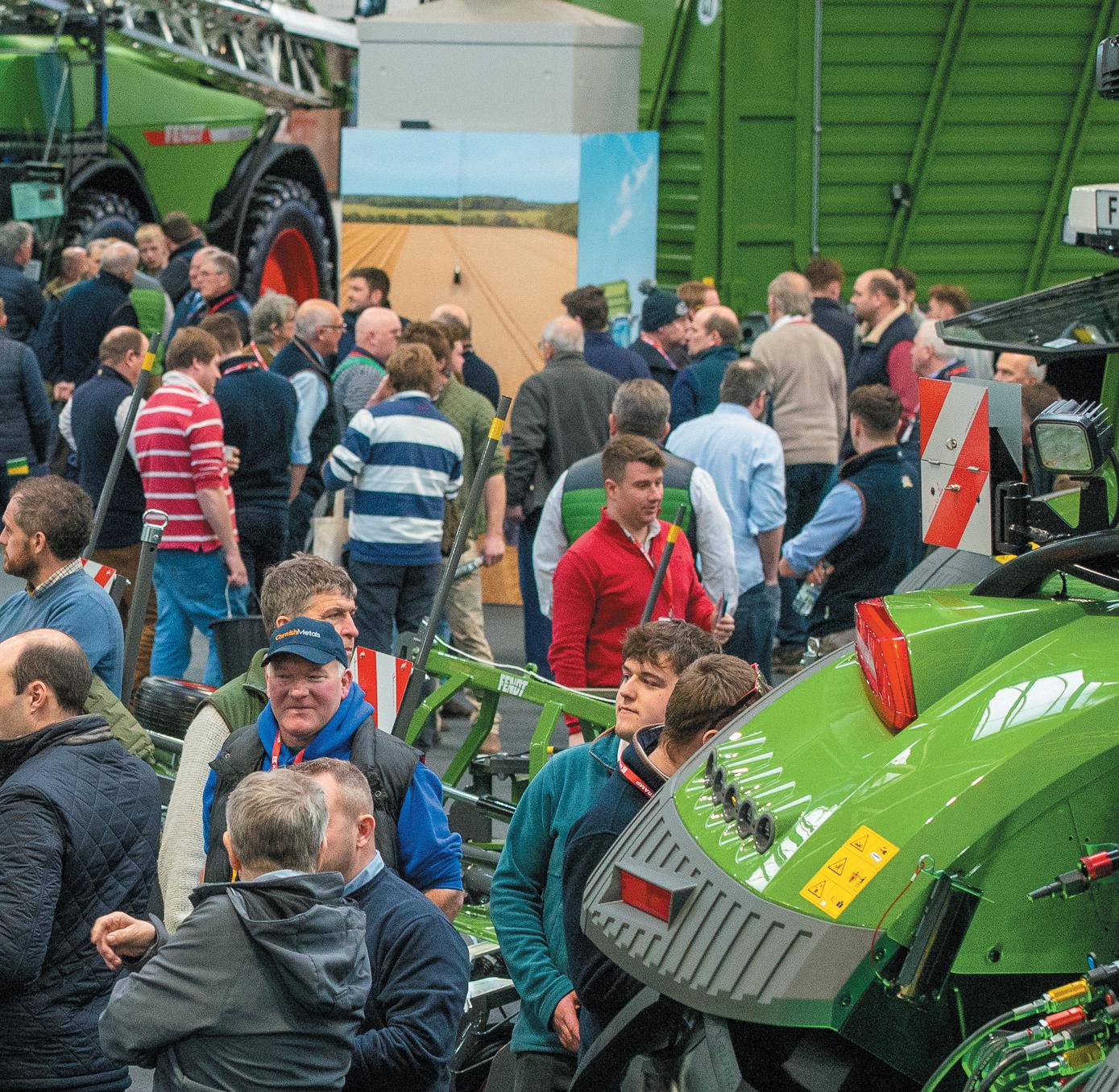



- 16 January









40,000+ 650+
87% 88% of exhibitors were satisfied with the event of exhibition space is booked exhibited at LAMMA 24 attended LAMMA 24 To apply








Sale leader Lurg Kim, a ewe lamb from Miller Farms, Inverurie, which sold for 6,000gns to Messrs Christie, Inverurie.

Kingledores Journee, a shearling gimmer from Richard Wood, Biggar, which sold for 5,500gns to Messrs Buckle, Kirkby Stephen.
Kindledores Godzilla consigned by Grant Maxwell, Melrose, which sold in a two-way split to Miller Farms and Messrs Wood.
LURG Kim, a ewe lamb from Miller Farms, Inverurie, topped the Beltex Beauties sale at Carlisle at 6,000gns. By Pager Jackpot out of Buckles Gem, its full brother was male champion at the Scottish National Show this year. It sold to Messrs Christie, Inverurie, with the vendor retaining a half share.
Next, at 5,500gns, was Kingledores Journee, a shearling gimmer by Curwen Hill George from Richard Wood, Biggar. It sold to Messrs Buckle, Kirkby Stephen, who then took 5,000gns for Buckles Jenifer, a Gyffin Dexter daughter which went to Messrs Van Greffen, Carlton-in-Cleveland.
Also selling for 5,000gns was Faughhill J-Lo, a shearling gimmer by
Matt’s Jelly Beans, a Muirton High and Mighty daughter from Matt Burleigh, Enniskillen, also sold for 5,000gns. The buyer was Lipley Beltex, Market Drayton.
AVERAGES
Artnagullion flock – 7 gimmers, £1,320; Buckles flock – 3 gimmers, £2,625; Callacrag flock – 3 gimmers, £1,505; Faughhill flock – 1 gimmer, £5,250; Kinglesdore flock – 8 gimmers, £2,113.12; Lakeview flock – 8 gimmers, £925.31; Logie Durno flock – 4 gimmers, £1,207.50; 3 ewe lambs, £3,430; Lurg flock – 6 gimmers,

Sale leader, a ram lamb from Frances Barbour, Sanquhar, which sold for 1,500gns to Messrs Yeo, Braunton, Devon.
NEWARK Adonis, a ram lamb from Frances Barbour, Sanquhar, topped the British Berrichon Sheep Society sale at Carlisle at 1,500gns. The son of Newark West Point out of Newark Wilma, sold to Messrs Yeo, Braunton, Devon. Next, at 1,400gns, was Janos Ash, a ram lamb by a home-bred ram from B. Evans, Trefeglwys, which was knocked down to Messrs Watson, Kirkcudbright.
Jointly topping the shearling rams at 1,100gns was Newark Zafar, also by West Point, from the Barbours, which went home with Messrs Davenport, Sandbach.
At the same money was Glynock Ziatan, a shearling ram by Janos
Uncle David from A. Bowen, St Clears, which sold to Messrs Curry, Morpeth. Females peaked at 600gns for Janos Ace of Spaces, a ewe lamb from Messrs Evans, which was sold as part of his flock dispersal. The buyer was Messrs Rees, Ammanford, who also paid 500gns for Janos Amber, another ewe lamb from the flock. Also making 500gns was a Janos shearling ewe by a Marshland ram which went to Messrs Bury, Lancashire.
AVERAGES
12 shearling rams, £745; 12 lamb rams, £661.50; 1 gimmer, £525; 7 ewe lambs, £457.50.
Auctioneers: Harrison and Hetherington.
£1,512.75; Morton’s flock – 3 gimmers, £733.33; Pentland flock – 3 gimmers, £1,540; Woodies flock – 8 gimmers,
£1,260; Woodwick flock – 11 gimmers, £1,227.59.
Auctioneers: Harrison and Hetherington.
ADAM and Ailsha Kirkbride, Cumberland flock, Bassenthwaite, took the supreme and reserve championship, with the title winner going on to make a sale-topping 5,200gns, at the Northern Stars show and sale of Valais Blacknose sheep on behalf of the Northern Club at Skipton.
The sale leader was their first prize shearling ewe, Cumberland Kimbo, a daughter of Snowdonia Goliath, bred out of the Blackertor Fandango ewe, Blackertor Firefly. The buyer was an online bidder from the Welsh Borders.
The reserve overall championship went to the Kirkbrides’ first prize ram lamb, Cumberland Lorton, a son of Shoemakers Victor, out of another Fandango ewe, Blackertor Freya, which joined Spongo Bank Valais Blacknose, Sanquhar, for a sectiontopping 1,500gns.
Leading price in the ewe lamb section and second top overall at 3,100gns was the show class runner up from Tom Blackwood, Stewarton. His Ayrshire Lena by Kineff Jacobsen sold to Chris and Victoria Dixon, Egremont. Winning ewe lamb
The winning ewe lamb from the same home, Ayrshire Lily, made 950gns, bettered at 1,500gns by the third prize winner, Ayrshire Luby, with both going to Miles Morgan, Chepstow. Tom Blackwood also stood runner up to the show champion in the shearling ewe class with Ayrshire Kimi by Gemstones Goliath, which made 2,000gns to the Dixons.
AVERAGES
Shearling ewes, £1,023; ewe lambs, £829. Auctioneers: CCM.
THE Ryeland Flock Book Society sale at Carlisle peaked at 880gns for the reserve champion Coloured Ryeland female, a ewe lamb from D. Mitchell’s Wellhill flock, New Cumnock. By Bryn Caffo Celt out of a home-bred ewe, it sold for 880gns to N. Webb, Ludlow.
The female champion was a shearling ewe by Ryeside Coloured Brigadier from Katie and Mark AtkinsonShaw’s Coxwold flock, Thirsk, which made 700gns to K. Harrison, Wigton.
Also making 700gns was the third prize shearling ewe from L. Griffiths, Southwaite, which sold to G. and T. Blezzard, Lancaster.
The top-priced Coloured Ryeland male was Coxwold D’Artagnan from the Atkinson-Shaws. By Sproxton Zodiac, it sold for 650gns to S. Porter, Barton.
The top-priced Ryeland at 800gns
was a ewe lamb by Dolwen Buccaneer from E. and J. Henderson’s Landriggs flock, Kinross, which went to the Bryn Caffo flock of A. and E. Parry, Gaerwen.
The female champion was Archer Divina, a shearling ewe by Teejay Bond, from Simon Archer, Hexham, which sold to G. Scott, Dalry, for 650gns.
The top-priced Ryeland ram was the male champion, Street Head Danny Boy by Grassknop Captain from C. and J. Brownrigg, Wigton, which sold for 650gns to G. Reid, Brechin.
AVERAGES: Ryeland – 44 shearling ewes, £315.24; 8 ewe lambs, £320.25; 6 shearling rams, £385; 6 ram lambs, £281.75; Coloured Ryeland – 21 shearling ewes, £409.50; 1 ewe lamb, £315; 4 shearling rams, £459.38; 5 ram lambs, £489.30. Auctioneers: Harrison and Hetherington.
Visit the UK’s most comprehensive auction listings at auctionfinder.co.uk
● Shearling gimmer sells to 4,000gns
THE Blue Texel Sheep Society’s Northern Supreme show and sale at Carlisle topped at 8,000gns twice.
The first at this money was Derg Jackal, the second prize winning ram lamb by Beili Blues Hulk out of an imported ewe from S. Allen and A. Shortt, Castlederg, Northern Ireland.
It sold in a three-way split to Bimbister Partnership, Sandwick, Orkney, Messrs Sylvester, Eday, Orkney, and Messrs Wattie, Alford, Aberdeenshire.
The other to sell for 8,000gns was Jems Jackpot, a ram lamb by Caryl’s Blues Hulk out of Nantyderri Going For Gold, from Jennifer Duncan, Aberdeen, which was knocked down to Messrs Williams, Lampeter.
Next at 6,500gns was Hodges Highlander, a shearling ram by Joe’s Alvin, from J. and D. Hodge, Auchinleck, which sold to the partnership of Messrs Howell, Llangadog, and Messrs Jones, Pencader.
The Page Farm Partnership, Ripon, then paid 6,000gns for Ettrick Handyman, a shearling ram by Saltire Blues Ferocious, consigned by David and Clare Gray, Selkirk.
Also making 6,000gns was the ram lamb, Mullygarrow Jack The Lad, a son of Sams Houdini, from Rachel Almond, Enniskillen, which
THE dispersal at Exeter of the Ardingly herd of 400 pedigree Holsteins on behalf of D. Goodwin and Sons, West Sussex, saw one of the dearest trades for a long time with 20 cows selling for more than £3,000.
Top price was 3,300gns for Ardingly Jimi Sophie, a fresh second calver by Peak Altajimi.
At 3,200gns was the third calver Ardingly Risen Tessa 2 by G-Deruyter Altarisen. Also at 3,200gns was Ardingly Danyl Geri, a fresh second calver by Peak Altadanyl.
Dry cows topped at 2,050gns twice for second calvers due in October.
In-calf heifers due in October and November topped at 1,950gns with others to 1,850gns six times.
AVERAGES
338 in-milk cows and heifers including all faults, £2,031; 17 dry cows, £1,578; 34 in-calf heifers, £1,726.
Auctioneers: Kivells.

was bought by Messrs Hoggard, Nottingham.
Females sold to 4,000gns for Matt’s Halo, a shearling gimmer by Mullygarrow Grey Goose, from Matt Burleigh, Enniskillen, which went home with Messrs Scott, Orkney.
Making 3,000gns was Beilli Blues High Hopes, a shearling gimmer by Ettrick Firefly, which is a full sister to 20,00gns Beilli Blues Hulk, from D.L. and B.W.H. Jones, Pencader, which sold to Messrs Baird, Tetbury.
Also selling for 3,000gns was the female champion, the winning ewe lamb and reserve overall champion, Ettrick Jade, a Show Winners Grand Slam daughter from Messrs Gray, which was a winner at the Great Yorkshire Show.
The buyer was Messrs Jessop and Sons, Coalville.
AVERAGES
2 aged rams, £2,388.75; 76 shearling rams, £1,247.29; 76 ram lambs, £1,474.14; 6 ewes, £630; 146 gimmers, £811.74; 22 ewe lambs, £858.14.
Auctioneers: Harrison and Hetherington.


Derg Jackal, from S. Allen and A. Shortt, Castlederg, which sold for 8,000gns to Bimbister Partnership, Sandwick, Orkney, Messrs Sylvester, Eday, Orkney, and Messrs Wattie, Alford, Aberdeenshire.
Jems Jackpot, from Jennifer Duncan, Aberdeen, which sold for 8,000gns to Messrs Williams, Lampeter.
THE show and sale of North of England Mule shearlings at J36 saw the first prize pen from Robinson and Ward, Carnforth, sell for £325/head.
The best bred Mule shearlings were £270-£280.
Masham shearlings sold to £240 twice for J. M. Woof, New Hutton, and D. E. and J. Waine, Longsleddale.
Cheviot Mule shearlings sold to £270 for J.S. and K.M. Wilson and Son, Kendal.
TRADE was up on the year in the Beltex Society’s Welsh premier sale at Welshpool where prices peaked at 3,000gns.
Sale leader was Teg King Pin, a ram lamb from Tegwyn Jones, Felingwm, Carmarthen. By Gyffin Dexter and out of Sinclair’s Fantasia, it sold to W.G. Ingram, Aberdeen.
A Gyffin-bred ram from Edward Cyril Lloyd Lewis, Conwy, jointly led
Single Suffolk shearlings sold £420 for M. and J. Greenwood, Middleton, with the first prize pen of Texels selling to £320 for J.R. and L.A. Capstick, Killington.
North Country Mule ewes sold to £255 for one-crop ewes from A.R. Edmondson, Ulverston.
Two-crop Mules were £220-£240 with older ewes selling to £205 for four-crop ewes.
One-crop Cheviot Mules sold to £190 for J. and M. Wilson, Selside,
with two- and three-crop ewes selling to £180 for M. Robinson, Kendal. Suffolk cross ewes sold to £170 for one-crop ewes from T.A. and J.A. Dixon, Yoad Pot. Texel cross ewes sold to £240 three times.
AVERAGES
Mule shearlings, £245; continental shearlings, £261; Mule ewes, £195; Suffolk cross ewes, £242; Cheviot Mule ewes, £177; Texel cross ewes, £201. Auctioneers: North West Auctions.
the shearling prices at 2,200gns when Gyffin Jimbo by Clary Dumfries sold to R. and B. James, Fishguard.
At the same price, Glantre Jethro by Lurg Gullit, from M. and H. Owens, Llandysul, sold to R.M. Cornforth, Tadcaster.
At 2,000gns, E.H. Pennie, Llandysul, bought Glantre Jaws, a Hackney
Gossip son from the same home for 2,000gns.
T. Jones, Nantgaredig, went to 2,000gns for Smart Ass Jack Flash by Ainstable Factotum from D.E. Owen, Conwy. Messrs Owen also topped the shearling ewes at 1,100gns with Smart Ass Jelly Baby by Clary Dumfries, which sold to J. Bell, Carluke. Auctioneers: Welshpool Livestock Sales.





XBarnes Contracting is a familyrun business led by brothers Richard, Bobby and Michael Barnes, alongside two other directors.
With a strong foundation in Devon’s agricultural community, the company focuses on four key sectors: agricultural contracting, crop spraying, agricultural mechanics and steel frame building.
Their deep understanding of farmers’ needs allows them to provide tailored services which enhance productivity.
The Barnes brothers have concentrated their efforts on servicing local dairy farmers, offering silage, slurry, tub grinding and animal feed solutions. By utilising advanced technology, such as a strip till rotavator maize drill, they aim to improve efficiency while minimising the negative impact on soil health.
Their innovative approach has positioned them as leaders in the area, providing services which are both effective and environmentally responsible.
Incorporating the AgDrive software programme has further streamlined operations, enabling the contracting team to register jobs and timesheets in real time, reducing errors and improving accuracy.
The team is young, ambitious and eager to contribute, bringing fresh ideas and a strong work ethic to the business.
As the agricultural industry evolves, the Barnes brothers are committed to staying ahead of the curve, recognising the growing importance of drone technology and variable rate fertiliser applications.
By investing in innovative solutions, they aim to enhance their services while positively impacting the environment.
The Barnes brothers’ dedication to quality, customer satisfaction and continuous improvement has solidified their reputation as a trusted partner for farmers in Devon, ensuring the success of their family business for generations to come.






XNigel Harper founded N.D. Harper 14 years ago, transforming a small contracting business into one of Cheshire’s leading agricultural contractors.
With roots in potato farming, he began with three silage trailers, a maize drill and a buckrake. Today, his operation boasts a fleet of 16 Case tractors, two JCB shovels, two foragers and two combine harvesters, employing 34 dedicated staff members and serving 75 customers within a 10-mile radius.
Nigel specialises in providing a comprehensive range of services tailored to farms of all sizes, from 12-hectare (30-acre) operations to large dairy farms milking 2,500 cows.
His offerings include silaging, cultivation, muck and slurry handling, spraying and harvesting. By developing a skilled team with specialist offerings, such as a unique engine-driven slurry pumping system, he enhances customer profitability and operational efficiency.
Passionate about machinery and dairy farming, Nigel has
consistently invested in modern technology.
This year, he introduced the AgDrive app to streamline planning and tracking, allowing team members to access essential job details and customer information on the go.
His commitment to innovation extends to partnerships with local manufacturers, developing advanced slurry application systems which reduce labour and fuel costs while doubling output.
Nigel’s dedication to customer relationships is evident, as many clients have been with him for over a decade.
In response to the challenges posed by low milk prices and rising costs, he collaborates with farmers to create flexible payment plans.
His proactive communication ensures customers feel supported and valued. As N.D. Harper continues to grow, Nigel remains focused on delivering an exceptional service while maintaining a sustainable and profitable business model.
To celebrate with the finalists at the British Farming Awards, go to britishfarmingawards.co.uk to buy your tickets
XAt the forefront of agricultural contracting in Lincolnshire, J.S.E. Systems specialises in the application of recycled nutritional and conditioning products.
Operating from Grantham, Nik Johnson leads a dedicated team of 13 full-time staff and expands to 20-25 seasonal workers during peak seasons. The company has evolved over its 45-year history, adapting to industry demands and introducing innovative products and systems.
J.S.E. Systems has made significant strides over the years in fertiliser spreading services, starting with ash-based recycled products back in the 1990s.
By developing specialised application systems, the company has positioned itself as a leader in this niche market.
With a focus on sustainability, J.S.E. has seen its biosolids department grow over the past two decades, applying about 450,000-500,000 tonnes of organic materials to land annually.
For the full shortlist, scan the QR code or go to agrc.im/finalists-2024
Innovation is the cornerstone of J.S.E. Systems’ success. The company employs satellite technologies across its fleet to enhance accuracy and efficiency in fertiliser application.
The introduction of a web-based app has improved health and safety communication and operational record-keeping, enabling real-time access to essential information for all team members.
Nik believes that successful contracting relies on effective communication, collaboration and the continuity of service delivery.
By building close relationships with clients and understanding their evolving needs, J.S.E. Systems has built a reputation for reliability and quality.
As the agricultural industry faces new challenges, Nik is confident that J.S.E. Systems will continue to adapt, innovate and thrive, providing essential services to farms across the UK.


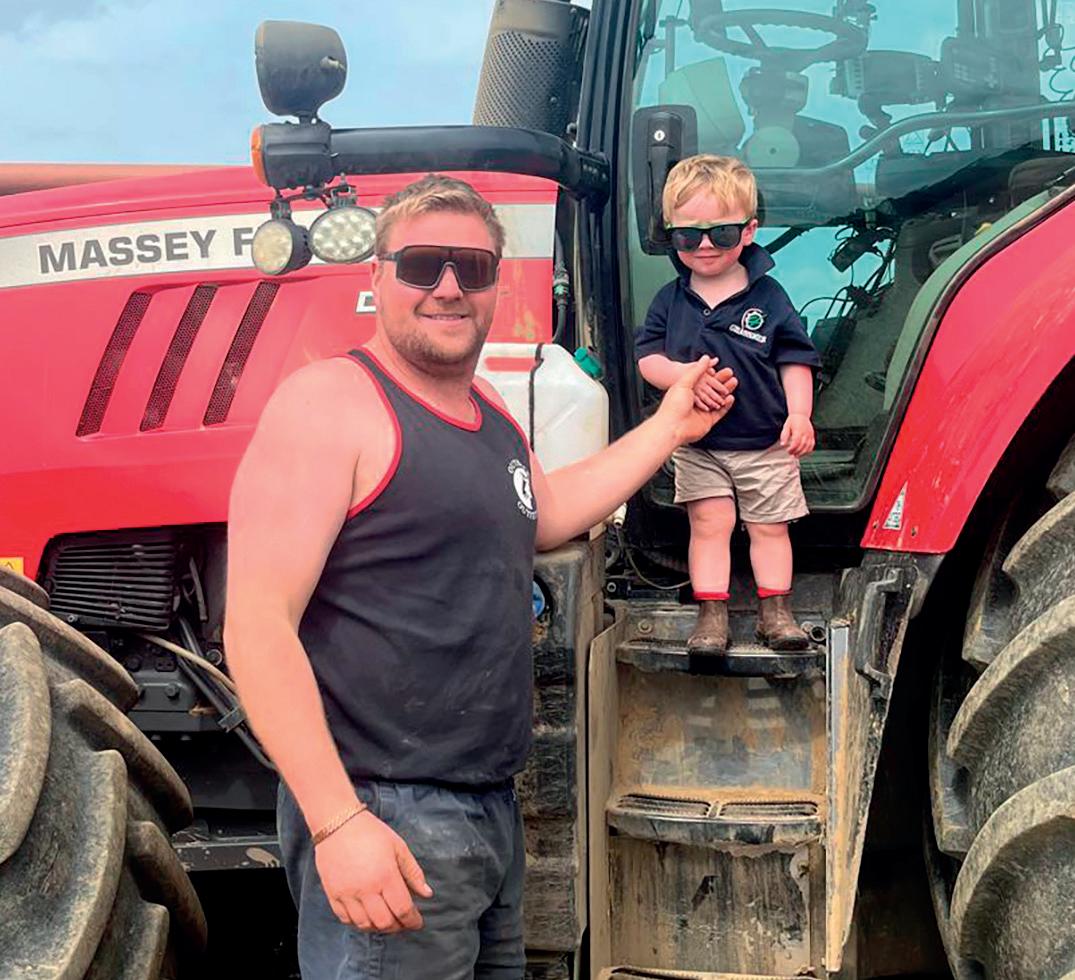
XFounded by Will Odam’s parents, Philip Odam Agricultural Services has been serving Gloucestershire’s farming community for years.
Will has now taken over the reins, overseeing a team of five full-time staff and three seasonal employees, while managing daily operations and customer relations, with his parents Phil and Sue still active within the business.
With a comprehensive range of agricultural contracting services, the business caters to beef, dairy and arable farmers, ensuring their needs are met efficiently.
The company’s diverse offerings include arable contracting, clamp silage, baling, mowing and muck spreading, complemented by the management of about 405 hectares (1,000 acres) of rented land.
Will emphasises the importance of investing in modern machinery, operating a large fleet, including 400hp tractors and a Lexion 600 combine.
By providing high-capacity equipment, the business can serve larger scale farmers and adapt to changing agricultural demands.



Will’s vision for Philip Odam Agricultural Services focuses on growth and innovation.
The introduction of slurry spreading services allowed the company to respond to increasing local demand for efficient manure handling.
With investments in advanced technologies, such as the AgDrive app, the business can accurately record work undertaken and improve operational efficiency.
Recognising the competitive nature of the contracting market, Will prioritises customer satisfaction through open communication and reliable services.
He believes that building strong relationships with clients is essential for long-term success.
As a second-generation contractor, Will remains committed to adapting and expanding the business, ensuring Philip Odam Agricultural Services remains a trusted partner for farmers in the region, no matter how the agricultural landscape changes.






















































To celebrate Farmers Guardian’s 180th anniversary we have added some exciting benefits to our membership packages to give you even more content, networking opportunities and access to future farming insights.
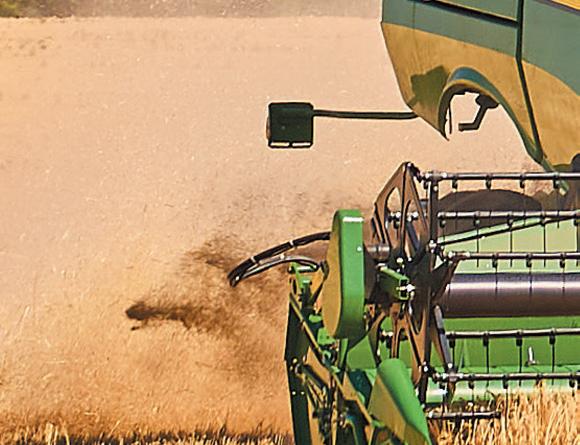
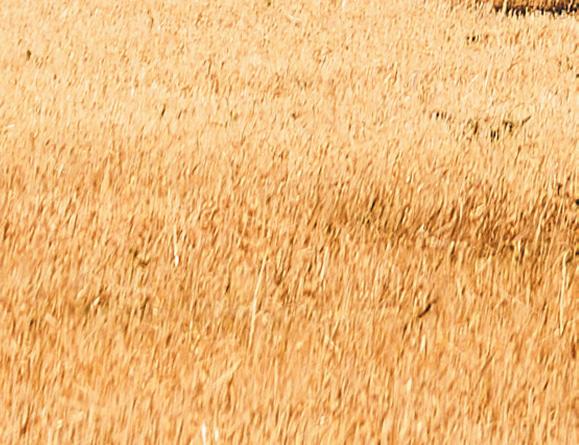



Become a £15.75 per month member for


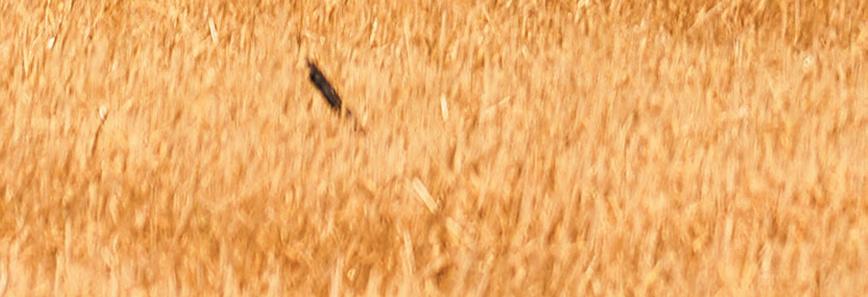















• Early Digital Access - No more waiting for the post! Get the latest issue a day early via our app.
• Exclusive Reports - Immediate access to three FREE in-depth reports on Diversification, Climate Friendly Farming, and Grants. Plus, future reports.
• Expert Online Events - Join live webinars and roundtables with top industry experts and fellow members, exploring the latest farming trends.
• Premium Networking - Connect with other farmers and professionals at Agriconnect events



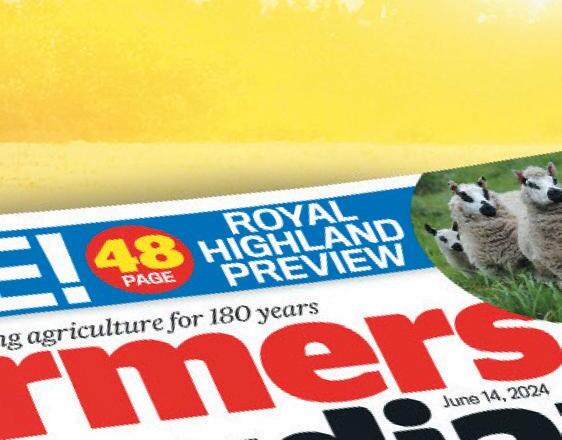





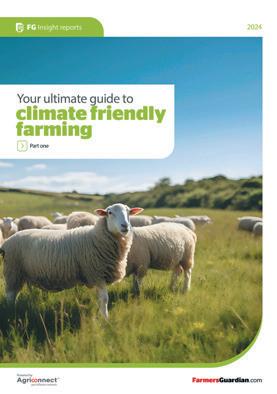


like LAMMA, Farm Business Innovation Show, Low Carbon Agriculture Show, and CropTec.
• Editor’s Weekly Digest - Receive a Sunday morning update from Editor Olivia Midgley with insights and highlights from the week.
• Stay Connected at Events - Meet and network with Farmers Guardian at key national events like The Royal Highland Show, The Great Yorkshire Show and more.



























Market Results

Forthcoming Dairy Sale




Dairies to £3500, Cull Cows 207p/kg - £1345.50, Pigs 220p/kg - £191.40, Calves Char Bull to £435, Lambs 341p/kg - £132.99, Ewes £197
TUESDAY 17TH SEPTMBER 2024
Leek Smithfield • Barnfields • Leek • Staffordshire • ST13 5PY • www.leekmarket.co.uk
Sale of the Entire Milking Herd of 200 Cows & Heifers all having calved in the last 6 weeks, Cubicles & Herringbone, Bulk Sample 4.20%F 3.74%P cc103 on behalf of D R Wrench, Brookside Farm, Marton, Macclesfield, Cheshire. Further details next week
TUESDAY 24TH SEPTMBER 2024
Sale of the Entire Milking Herd of 145 Cows & Heifers In-milk & In-Calf on behalf of R & H Bates & Sons, Cocksmoss Farm, Marton, Macclesfield, Cheshire. Store Cattle Sales
400 STORE CATTLE
SATURDAY 14TH SEPTEMBER 2024 – Entries Invited
Store Sheep Sales
Sale of 6015 Store Lambs & Breeding Sheep Comp 4278 Store Lambs, 280 Ewe Lambs, 1218 Shearling & 239 Ewes Incl Show of Shearlings Ewes
THIS SATURDAY 7TH SEPTEMBER 2024
Fat/Barrens: Graham Watkins 07976 370894
Dairies: Meg Elliott 07967 007049 Stores: Mark Elliott 07973 673092 Sheep: Robert Watkins 07929 946652 Visit us at www.leekauctions.co.uk




THURSDAY 19TH SEPTEMBER RETIREMENT SALE ON BEHALF OF E GOODCHILD & SON STANDALLS
HP17 8SL SALE TO COMMENCE AT 10AM, VIEWING FROM 8AM. CATALOGUES AVAILABLE ONLINE, PICTURES OF LARGER LOTS AVAILABLE ON REQUEST NEW HOLLAND T6.145 C/W LOADER (2018), NEW HOLLAND T7.235 (2013), NEW HOLLAND TM155 (2007), NEW HOLLAND CSX 7080 COMBINE (2007), JCB 531-70 LOADALL, LAND ROVER DEFENDER 90 (2004), MASSEY FERGUSON 6480 DYNA6, ETC... (ALL NEW HOLLAND TRACTORS HAVE LOW HOURS) **ALL PROSPECTIVE BUYERS MUST REGISTER BEFORE THE SALE**

MONDAY 9th SEPTEMBER 2024
37th ANNUAL SALE OF - 292 TEXEL SHEEP
On behalf of the Ruthin Texel Club
1 Ewe Lamb @ 10.30am followed by 26 Shearling Ewes, 4 Aged Rams
129 Shearling Rams and 132 Ram Lambs
At The Vale of Clwyd Livestock Centre, Parc Glasdir, Ruthin, LL15 1PB
Sale @ 10.30am *** *** *** *** ***
FRIDAY 13th SEPTEMBER 202
Sale @ 12noon
27th ANNUAL SALE OF - 41 DUTCH TEXELS
On behalf of the Dutch Texel Group
At the Vale of Clwyd Livestock Centre, Parc Glasdir, Ruthin, LL15 1PB ALSO SAME DAY
8th ANNUAL SALE OF – 94 CHARMOISE SHEEP
(20 Females & 74 Rams)
On behalf of the Charmoise Hill Sheep Society
At the Vale of Clwyd Livestock Centre, Parc Glasdir, Ruthin, LL15 1PB
Show @ 10.30am - Sale @ approx 1pm following Dutch Texel Sale *** *** *** *** ***
SATURDAY 14th SEPTEMBER 2024
Sale @ 11am prompt
39th ANNUAL SALE OF – 4,098 WELSH MULES
(1,216 Yearling Ewes & 2,882 Ewe Lambs)

Friday 13th September at 9am
Hexham
Sale of 1500 Cast Ewes & 5000 Store Lambs
There will be NO sale of Store Cattle
Kelso
At 10am Sale of 551 Rams & Ram Lambs
Wednesday 18th September at 10am
Prize Show & Sale of 4000 Mule, Texel, Suffolk & Other Gimmers
Thursday 19th September at 2pm
‘Hexham’ Prize Show & Sale of Mule Ewe Lambs. Prize Show & Sale of Cheviot Mule Ewe Lambs
Friday 20th September at 9am
Sale of 1500 Cast Sheep & 6000 Store Lambs

At the Vale of Clwyd Livestock Centre, Parc Glasdir, Ruthin LL15 1PB
Held In Conjunction with Jones Peckover *** *** *** *** ***
Visit us @ www.ruthinfarmers.co.uk for much more weekly entries and the on line Catalogues of Sheep Breed Sales or contact the Auctioneers on 01824 705000 for a copy by post

Sale of 500 Store Cattle & Suckled Calves
Sale of Breeding Cattle
To include dispersal sale on behalf of Messrs Dodd & Wise, Sillywrea, 14 Beef Shorthorn Cows with spring born calves, 4 Beef Shorthorn heifers and 1 Pedigree Beef Shorthorn Bull (4 year old)
Monday 23rd September
Builth Wells NSA Ram Sale


58 Cattle: Highland (2), Longhorn, 12), Dexter (42 – judging 9.30am)

Tel: 01228 406200
Border & Lakeland Autumn Bull Sale 39 HOLSTEIN FRIESIAN BULLS
Monday 9th September
Show 10.30am Sale 12.00noon
The largest show and sale of pedigree Holstein Friesian bulls in the UK
The sale comprises 22 Holstein and 17 British Friesian
Prefixes: Annandale, Boclair, Gerrard, Nerewater, Northshields, Warnelview, Whinnow, Winnoch, Winton, Wormanby,
Show and sale of 94 PEDIGREE DUTCH TEXEL
Monday 9th September
Show 11.30am Sale 1.00pm
Comprising 14 shearling gimmers, 9 flock ewes Rams -1 aged, 66 shearling, 4 lambs
Main September sale of 600 CONTINENTAL CROSS STORE CATTLE
Wednesday 11th September - 10.00am
Special prize for the highest priced pen of 4 or more WEANERS & YOUNG BULLS – 12.00noon YOUNG CALVES – 10.00am
Carlisle & Lazonby combined Prize show and sale of 1800 MULE GIMMER SHEARLINGS
Thursday 12th September
NORBROOK KELSO RAM SALES
Friday 13th September 10.00am
Harrison and Hetherington are privileged to be offering 1532 Rams in 7 rings
Ring 1: 70 Border Leicester; 28 Blue Texel; 15 Berrichon; 16 Hampshire Down; 22 Lleyn Ring 2: 4 Dutch Texel 266 Beltex; Ring 3: 181 Crosses; Ring 8: 279 Suffolk; Ring 14: 435 Suffolk; Ring 16: 27 North Country Cheviot; 63 non MV Crosses Ring 19: 126 non MV Texel
Prize show and sale of CONTINENTAL CROSS SUCKLED CALVES
Wednesday 18th September
Entries close Monday 9th September
Wednesday 18th September
Show 10.00am Sale 11.00am
Follow us on Facebook to view sale lots prior to sale 262 JERSEYS SELL IN THE JERSEY JEWELS SALE
30 Cows/Heifers In Milk - 74 In-Calf Heifers –112 Bulling Heifers – 46 Heifer Calves
This is the FIRST Jersey Jewels Sale to be staged at Borderway and features 262 Jersey cattle consigned by several of the leading Jersey herds in the UK. The pedigrees, production & potential in this sale is phenomenal and highlights the incredible efficiencies the Jersey cow has to offer.
30 JERSEY MILKERS sell from the LOGAN, KERRICKS, MOORHOUSE & POTSTOWN herds. 75 JERSEY IN CALF HEIFERS sell, including 24 from the KINGSBECK herd due from Sep-Nov; 13 from the LONGING herd due Dec-March; 20 from the KERRICKS herd due Feb-March. 11 from the NEITHER KEIR herd due Oct-Dec; 4 from the MOORHOUSE herd due soon. 112 JERSEY BULLING HEIFERS sell all over 12 months old and ready to breed. 40 are from the KERRICKS herd all born August 2023; 33 from the CALLYMAINS herd, plus several other choice consignment. 46 JERSEY HEIFER CALVES sell all born in February & March 2024. Consigned by the KIRVINNE herd. Please order your catalogue today.
Latter Fair
Show and sale of MULE GIMMER LAMBS
Also other breeds of ewe lambs
EURO CONTINENTAL CROSS EWE LAMBS
Thursday 19th September
Entries close Monday 9th September
Latter Fair RAM SALE
Thursday 19th September
Entries close Monday 9th September
RARE & MINORITY BREEDS
Saturday 21st September
Ring 1: 11am Sale of Piglets, Donkeys and Goats
Ring 2: 10.00am Sale of Cattle, followed by Jacob & Kerryhill Sheep
Ring 3: 10.30am Sale of All Other Breeds of Sheep, followed by the National Shetland Show and Sale
Ring 4: 10.00am Sale of Poultry & Waterfowl
Ring 5: 10.00am Sale of Poultry & Waterfowl
601 Sheep: Bader Face Welsh Mountain (41), Border Leicester (3), Castlemilk Moorit (8), Cotswold (2), Greyfaced Dartmoor (6), Hampshire Down (5), Herdwick (5), Jacob (36), Kerryhill (180), Manx Laughton (7), Racka (15), Ryeland (3), Shetland (252), (Soay (1), Valais Blacknose (2), Wensleydale (16), Oxford Down (9). Continued...
Visit www.harrisonandhetherington.co.uk
4 Donkeys. 7 Piglets, 140 Goats: Anglo Nubian (2), Boer (16), Golden Guernsey (4), Pygmy Goats (110) 873 Poultry: Poultry (599), Waterfowl (264), Caged Birds (10)
COLLECTIVE SALE OF SMALL TOOLS
Within Borderway Mart
Thursday 26th September
Entries close Wednesday 18th September
KIRKBY STEPHEN
Tel: 01768 371385
Prize show and sale of 8,160 NEMSA GIMMER LAMBS Friday 13th September – 9.45am show Thursday evening 12th September – 6.00pm
Prize show and sale of
CONTINENTAL CROSS STORE CATTLE
Also Cast/Feeding cows & OTM cattle
Monday 16th September
Entries close 10am Monday 9th September
Saturday 21st September
Sale of Mule and Cont x ewes and shearlings and Cont x gimmer lambs
To include a dispersal sale of 150 Texel & Beltex cross breeding sheep (further details to follow)
Annual show and sale of TEXEL & CONTINENTAL RAMS
Also other breed rams
Entries close 10am Thursday 12th September
LAZONBY MART
Tel: 01768 898313
Alston Moor sale of MULE GIMMER LAMBS
Wednesday 25th September
Show for NEMSA members Tues evening 24th Sept Entries close 10am Wednesday 11th September
Tel: 01576 202332
312 NORTH COUNTRY
CHEVIOT “PARK” RAMS
718 NORTH COUNTRY CHEVIOT “PARK” FEMALES
Wednesday 18th September
Ram Show 8.30am - Ram Sale – 12.00noon
Female Sale – 9.30am
SOUTH COUNTRY CHEVIOT RAMS
Monday 14th October
On behalf of Cheviot Sheep Society
Ballot drawn Tuesday 17th September
Entries close Friday 13th September
Tel: 01833 640281
Prize show and sale of 1500 NEMSA GIMMER LAMBS
Wednesday 18th September
Show 10.00am Sale 11.00am
Prize show and sale of SWALEDALE GIMMER LAMBS
Friday 20th September
Entries close 10am Wednesday 11th September
ON FARM SALE OF FARM MACHINERY, IMPLEMENTS & SMALL TOOLS
Friday 20th September
At Midtown Farm, New Abbey
On behalf of Messrs Bunting
Sale includes NH Handler TH5.26 (70 plate), NH T6 155 (23 plate); Redrock 1600 3yo, Keenan 585 10yo, International tractor 585, C Force 520S 4wd Quad, Kubuta 2122R 42” cut 2yo, Ford Ranger 3.2 49,282 miles (17 plate), Ifor Williams 14ft trailer 3yo, Storth Slurry whisk, Quantity of sheep equipment, calf creeps, troughs, trailers, loader attachments
Full list available on the website - Inputs welcome
TRACTORS & IMPLEMENTS
Thursday 26th September
To be included in the Small Tools sale within Borderway Mart
On behalf of the late Malcolm Watt
FARM MACHINERY, IMPLEMENTS & SMALL TOOLS
Saturday 26th October
Tat Robberby Farm, Penrith on behalf of Messrs Horn


PLEASE SCAN TO VIEW OUR ONLINE CATALOGUES






Friday 13th September 10am
AMBLESIDE FAIR - Show & Sale of Mule, Masham, Rough Fell Mule & Cheviot Mule Gimmer Lambs SHOW EVENING 5.30pm
Evening show of NEMSA Mule Gimmer Lambs To include ‘Stars in Your Eyes’

Saturday 14th September 10am ANNUAL SALE OF 6500 NORTH OF ENGLAND MULE GIMMER LAMBS

Wednesday 18th September
SHOW & SALE OF 1000 GIMMER LAMBS
Plus Second Sale of 500 Breeding Ewes & Rams
Saturday 5th October HIIL FAIR DAY
Sale of all classes of Breeding Ewes, Gimmer Shearlings, Breeding Rams & Gimmer Lambs. Plus special sale of Store Lambs Catalogue Entries by Friday 27th September
Monday 28th October - CLAIMING DATE
Dairy Dispersal Sale on behalf of DJ A & L Sutcliffe, Throstle Nest Farm, Winmarleigh
Tuesday 10th September
10.30am ALL CLASSES OF PIGS 1pm PRIME LAMBS & CAST SHEEP
Thursday 12th September 10.30am Fortnightly Sale of 5000 STORE LAMBS
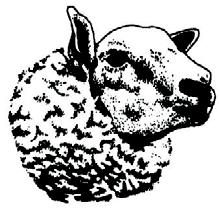
Thursday 19th September 10am 150 REARING CALVES & WEANLINGS 10:30am 100 CAST/OTM CATTLE 11:15am 600 STIRKS & STORE CATTLE To include Continental Prize Show & Sale
Saturday 21st September - PEDIGREE SHEEP DAY
Society Sales on Behalf of Northern Beltex Club, Blue Texel, Badger Face & Dutch Spotted. Plus Second Sale of 5000 Breeding Sheep
Friday 27th September – DRAFT EWE DAY
Great Annual Show & Sale of 6,000 Hill Bred Draft Ewes, Gimmer Shearlings & Gimmer Lambs
To Include the Rough Fell Sheep Breeders Association Annual Prize Show & Sale of Rough Fells Catalogue Entries by Monday 9th September
Monday 7th October
Show & Sale of Registered & Unregistered Bluefaced Leicester Rams & Females Catalogue Entries by Monday 9th September


Telephone: 01756 792375 www.ccmauctions.com
Auctioneers: Jeremy Eaton - 07747 780481 Ted Ogden - 07855 958211 Kyle Hawksworth - 07538 539077
Saturday 7th September
Sale of 300 PEDIGREE BELTEX
RAMS & FEMALES
Show – Friday 6th September 4.00pm

Females Sale - Friday 6th September 6.30pm
Rams Sale – Saturday 7th September 10.00am
15 PEDIGREE BADGER FACE TEXEL SHEEP

Show 9.30am Sale 11.00am
91 PEDIGREE BLUE TEXEL SHEEP
Show 10.00am Sale 11.30am
30 DALES BLUES & SPOTTIES
Sale approx. 1.00pm
Monday 9th September
REARING CALVES - Sale 10.30am
Entries & Enquiries to Kyle
PRIME, CAST & FEEDING CATTLE

Sale 11.30am (TB exempt section available) PRIME LAMBS - Sale 12.30pm followed by CAST EWES, RAMS & GOATS
Tuesday 10th September

Opening Show & Sale of 4,471 NEMSA MULE GIMMER LAMBS Show 8.15am Sale 10.00am
Wednesday 11th September
80 FEEDING BULLS Sale 10.00am followed by 20 BEEF FEEDING COWS & 400 STORE BULLOCKS & HEIFERS
Annual Production Sale of 35 Late Autumn born Continental cross bulls from J Crust, Betterbread Represents an outstanding opportunity to renew pens with premium quality cattle, bred for growth and shape. The cattle will be offered in good sized lots where practical for ease. (TB4, Bovalto Respi 3 and Bovilis IBR marker live and Bravoxin 10, Primary courses completed by Mid-July, giving good cover until the New Year). Removed to Skipton.
Inc First Autumn Sale of Native Sired Cattle
Wednesday 18th September
Sale of STORE LAMBS & FEEDING EWES
2nd Sale of Drawn Suffolk & Cont Gimmers Prize Show & Sale of Swaledale, Dalesbred, Lonk, Gritstone & Cheviot Wether Lambs (Entries close Monday 9th September)
Thursday 19th & Friday 20th September
427 PEDIGREE TEXEL RAMS & FEMALES
On behalf of the Northern Area Texel Sheep Breeders Club Members

Thursday - Show 2.00pm, Sale of 130 Females at 6.00pm
Friday – Sale of 297 Rams at 10.30am
Saturday 21st September
Sale of STIRKS, WEANED/SUCKLED CALVES, BREEDING & CULL GOATS & SHEEP
(Entries close Monday 16th September)
Dairy Cattle
Monday 9th September
SHOW & SALE OF 10-12 DAIRY CATTLE Sale 12noon
Monday 14th October
SHOW & SALE OF DAIRY CATTLE
Inc AUTUMN JERSEY & COLOURED BREEDS
Entries & Enquiries to Sarah 07710 795585
Breeding Sheep Sales
Tuesday 17th September
Sale of al Classes of BREEDING SHEEP + 2nd Show & Sale of SHEARLING GIMMERS
(Entries close Monday 9th September)
Tuesday 24th September
2nd Show & Sale of NEMSA MULE GIMMER LAMBS

(Entries close Wednesday 11th September)
Tuesday 1st October
Fortnightly Sale of BREEDING EWES & SHEARLINGS
Special Pennines Sale of CHEVIOT, LONK, GRITSTONE & WHITE FACED WOODLAND EWES & SHEARLINGS
(Entries close Monday 23rd September)
Saturday 5th October
Annual Show & Sale of SWALEDALE EWES & SHEARLINGS
(Entries close Monday 23rd September)
Pedigree Sheep Sales
Tuesday 1st October Evening
Annual Show & Sale of BLUE FACED LEICESTER SHEEP
(Entries close Tuesday 10th September)
Thursday 3rd October
REGISTERED LLEYN BREEDING SHEEP
Entries to the Society
Friday 4th October
Annual MULTI BREED RAM SALE
(Entries close Friday 20th September) Farm Sales
Saturday 28th September
Complete on farm dispersal of Tractors, Machinery & Equipment on behalf of DG Boothman – Halton East
Details on www.ccmauctions.com
Thursday 10th October – Claiming Date Farm Sale on behalf of W, J & E Harker & Son, Patley Bridge – Listing Available Online Border Fine Arts & Collectables
Saturday 14th December

Tuesday 10th September at 10.30am
Fortnightly Sale Of 8500 STORE LAMBS inc. 1250 Drawn Gimmer Lambs Texel x, Suffolk x etc.
Wednesday 11th September
10.30am SEMEX DAIRY DAY
Show & Sale of Newly Calved Dairy Cattle 11am 100-150 Rearing Calves 2.30pm 2500 Cast Ewes followed by 3000 Spring Lambs
Friday 13th & Saturday 14th September

Two Day Show & Sale of 15,769 GIMMER LAMBS

Friday 13th September at 1pm 1592 Masham followed by 930 Dales Mule 2120 CHEVIOT MULE
Saturday 14th September at 9.30am 11,127 NORTH OF ENGLAND MULE
Tuesday 17th September
40-50 Feeding & Cast Cows & OTM Cattle 1000 Farmers Stirks, Young Stores & Feeding Bulls
Friday 20th/ Saturday 21st September
TWO DAY RAM SALE
Friday- Texel, Beltex, Suffolk, X Bred & Others
Saturday- Blue Faced Leicester & Teeswater
Wednesday 25th September
DISPERSAL SALE OF 100 PEDIGREE & CROSS BRED JERSEYS On behalf of JA Jenkinson & Son, Fordsyke Farm To be held at Bentham Auction in conjunction with Kivells Contact Mark 07773371774 or Will 07590876849
Friday 27th/ Saturday 28th September
Two Day Show & Sale
Friday- Breeding Ewes & Gimmer Shearlings Saturday- Gimmer Lambs

WARREN PARK FARM ALDERHOLT, HAMPSHIRE SP6 3DE
Tuesday 10th September 2024

At 10.30am prompt with Deadstock ahead of the Dairy Cattle The Dispersal Sale of the Predominately Summer/ Autumn Calving NMR Herd of
Comp: 147 Dairy Cows & Heifers Inmilk &/or Incalf; 26 Calved Heifers; 4 Incalf Heifers; 33 Maiden Heifers & 28 Heifer Calves


Bakewell Market Results - Monday 2nd September
841 Cattle & 1,845 Sheep - Full report available on our website Store Cattle Special Entries for Monday 9th September Simmental Pedigree or Pedigree Notified Cattle To include: 5 Cows & Calves, 3 i/c Cows, 1 i/c Heifer, 1 Bulling Heifer, 2 Maiden Heifers & 3 Bulls
All F/A, Elite Health, Free of BVD, IBR & Lepto, Johnes Risk Lvl 1, TB Checs Accred **********************
SEDGEMOOR AUCTION CENTRE 01278 410250 | livestock@gth.net, NORTH PETHERTON, SOMERSET, TA6 6DF
✰ NMR HERD AV: 9852 KGS. 4.05%BF 3.29%P SCC=156
✰ RAPID EXIT Parlour; CUBICLE Housed
✰ CLOSED HERD FOR 46 YEARS
✰ YOUNG COWS: 119 1st – 3rd Lactation
✰ PREDOMINATELY SUMMER/ AUTUMN CALVING
✰ SERVICES TO: Aberdeen Angus and Holstein Together with John Deere Tractor, Loadall, Forklift, Dairy Equipment, Farm Machinery & Effects (87) JD 2850 4WD TRACTOR; (05) JD 3420 LOADALL; Datsun QF20 Fork
Lift TRUCK; Shelbourne Reynolds 120 Cubicle BEDDER; (11) Redrock Aligator SHEAR GRAB; (05) Kuhn B1210 Fert SPINNER; Approx. 240 Railway SLEEPERS; 248 Cow Manager TAGS; Surge Rapid Exit 20/20 MILKING PARLOUR; Mueller 10,000 Litre BULK TANK; Kingston PLATE COOLER; etc.
For W P F Alderholt Ltd (ceasing dairy production)
A 10% plus VAT Buyers Premium is charged on all deadstock lots, subject to a cap of £250 plus VAT per lot. Buyers not known to the Auctioneers are required to provide photographic ID to obtain a buyers number. Payment by cash and debit card only. ** Live bidding on MartEye, please register in advance at gth.marteye.ie **
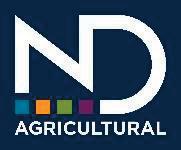
CARMARTHEN & NEWCASTLE EMLYN MARTS 2024
Livestock Markets
Livestock Markets
▪ Bridgnorth, Carmarthen & Newcastle Emlyn
▪ Bridgnorth, Carmarthen & Newcastle Emlyn
▪ Private & deadweight sales
▪ Private & deadweight sales
▪ Primestock & store markets
▪ Primestock & store markets
Bridgnorth:
Bridgnorth:
Weekly primestock sales and fortnightly store sales
Carmarthen:
Weekly primestock sales and fortnightly store sales
Carmarthen:
T HURSDAY LUNCHTIME WEEKLY SHEEP SALE

50R Profi Twin Axle Forage Wagon
Ifor Transport Trailer, Livestock Trailer Farm Trailers & Machinery
Range of Livestock Equipment Hay & Workshop Items & Sundries

Weekly dairy, calves & weanlings sales; weekly barren cows, store cattle and all classes of sheep; monthly weaned calves, suckler cows and breeding bulls; monthly orange TB restricted cattle sale; monthly Holstein South Wales show & sale
Newcastle Emlyn:
Weekly dairy, calves & weanlings sales; weekly barren cows, store cattle and all classes of sheep; monthly weaned calves, suckler cows and breeding bulls; monthly orange TB restricted cattle sale; monthly Holstein South Wales show & sale

Weekly calves, weanlings, cull cows & sheep; fortnightly store cattle sales
Newcastle Emlyn: Weekly calves, weanlings, cull cows & sheep; fortnightly store cattle sales
Rural Professionals
▪ Specialising in property sales, lettings & management; dispute resolution & planning; environment al schemes & grants; valuations
Rural Professionals
Auctioneers & Valuers
▪ Specialising in property sales, lettings & management; dispute resolution & planning; environment al schemes & grants; valuations
▪ Growing crops & fodder; rural land & property, farm dispersal; machinery sales; annual valuations
Auctioneers & Valuers
All dates for markets are on the Nock Deighton Agricultural website
▪ Growing crops & fodder; rural land & property, farm dispersal; machinery sales; annual valuations
Bridgnorth Market Contacts: Martin Clack 07977 0675198, Ollie Clack 07891 343673 or Mark Burgoyne 07831 192603
Welsh Mart Contacts: Llŷr Jones 07812 934964 or Paul Taylor 07815 509504. Bidding available on “Marteye” in Welsh marts
All dates for markets are on the Nock Deighton Agricultural web

Bridgnorth Market Contacts: Martin Clack 07977 0675198, Ollie Clack 07891 343673 or Mark Burgoyne 07831 192603 Welsh Mart Contacts: Llŷr Jones 07812 934964 or Paul Taylor 07815 509504. Bidding available on “Marteye” in Welsh marts nockdeightonagricultural.co.uk
LIVESTOCK CENTRE, NANT Y CI, CARMARTHEN, SA33 5DR 01 267 493200
Entries/Enquiries, contact Ivor Lowe: on 07977 449126 or Peter Oven on 07973 982443 www.bagshaws.com




Tuesday 10th September at 10.30am
120 Store Cattle. 9,000 Store Lambs
First Sale of Cheviot and Blackface Lambs
Tuesday 17th September at 10am
Show & Sale of 3,000 North of England & Scotch Mule Ewe Lambs
Sponsored by Tynedale Farm Services
2,000 N. of E. & Scotch Mule Shearlings
2,000 Cheviot Mule Ewe Lambs
750 Continental & Other Breed Ewe Lambs
750 Greyface, Continental & Other Breed Ewes & Shearlings
Evening Multi-Breed Ram Sale at 5pm DUMFRIES MART Tel (01387) 279495
Saturday 14th September at 11am Nithsdale Show & Sale
1,500 Scotch Mule Ewe Lambs
250 Texel x, Cheviot Mule & Half-Bred Ewe Lambs
250 Scotch Mule, Texel & Other Shearling Gimmers
Main Sale of 450 Blackface Ewe Lambs
750 Store Lambs. Feeding Ewes

Monday 9th September
9.30am Prime Bulls, Clean Cattle and Cast Cows. Special Section for TB Area 1 Cattle.
Monday 9th September
11am- Sale of 425 Feeding Bulls & Store Cattle of all classes
Breeding Sheep Tuesday 10th September Breeding Sheep
Show 8.30am; Sale 10am
The Great Annual Prize Show and Sale of 5,896 Breeding Sheep
Comprising of 2,430 Mule Gimmer Shearlings; 1,710 Mule 2 Shears; 711 Suffolk X & Texel Shearlings; 1,045 Continental & Mule Ewes 3 Shear and Above
Wednesday 11th September
8am Cast Ewes & Rams followed at 10.30am with Prime Lambs (Ballot 10.30am)
Friday 13th September
10am – Sale of 250 Rearing Calves and Weaned Stirks
Rams Tuesday 17th September Rams
Show 8.30am; Sale 10am
Annual Prize Show and Sale of 669 Suffolk, Texel, Beltex, Charollais & Continental Breeding Rams
Comprising of 140 Suffolk Shearlings; 456 Texel, Beltex, Charollais & Continental Shearlings; 73 Ram Lambs
Tuesday 24th September
Prize Show & Sale of 10,000 North of England Mule Gimmer Lambs Show open to all vendors NEMSA rosette for the highest placed NEMSA member including the Prize Show and Sale of Cheviot Mule Gimmer Lambs
Entries close noon Thursday 12th September
Sunday 6th October
Show & Sale of Crossing Bluefaced Leicester Rams & Females Entries Close Noon Monday 23rd September




Monday 9th September Usual Sale of Fatstock
Monthly Prime Lamb Show Sponsored by Lishman Fabrications

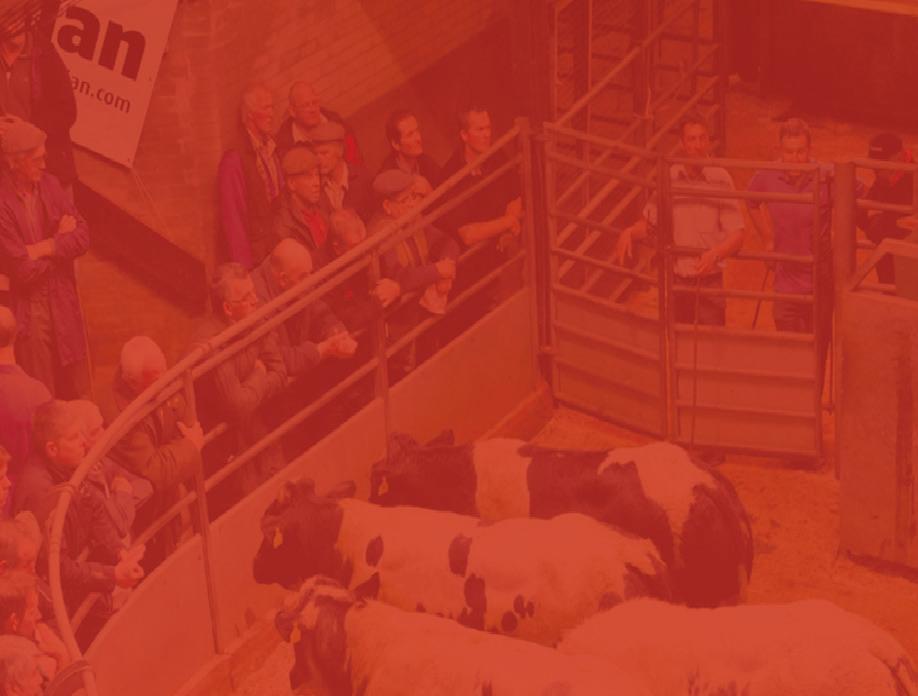
WEDNESDAY 11TH SEPTEMBER
Dedicated Slaughter Market
350 Prime Cattle 520 Prime Sheep 175 Prime Pigs Pigs 9am Sheep 9.45am Cattle 11am
SATURDAY 14TH SEPTEMBER
**Please Note Change of Sale Times**
Special Sale of STORE & BREEDING SHEEP
Inc.Shearlings, Ewes, Gimmer lambs & Rams
To Commence at 11.30am
Inc 60 Tex X Store Lambs, Swallow Together with sale of Store & Breeding Cattle at 10.30am
Contact Office for Details
Inc 5 Sim Bulls, 10/12mths, WJ Hollingworth Store & Breeding Pigs at 9am Entries Welcome
MART OFFICE: 01757 703347
RICHARD HAIGH: 07768 594535
MART OFFICE: 01757 703347
www.selbymart.co.uk
RICHARD HAIGH 07768 594535 www.selbymart.co.uk
Tuesday 10th September
Tup Tup Chalice Sale of 350 Tups
MV and Non MV sections Show at 3.30pm and sale at 5pm Catalogue available on the website
Cattle/OTM, Store & Breeding Stock
All
of Prime Cattle & Sheep
Contact for details Rebecca Wilson 07593 975163 (Machinery) Scott Ferrie 07557 260653 (Auctioneer) John Wharton 07912
(Fieldsperson)

Sale of 150 Cattle Sale at 10am
SALE OF 1400 NEMSA MULE GIMMER LAMBS
(also 120 Masham Gimmer Lambs) Sale at 12 noon
For catalogues for all the above sales visit our website
www.barnardcastleauctionmart.co.uk Tel Libby Bell Auctioneer on 07818435728


ON BEHALF OF S & R HANDLEY
FOR SALE BY PUBLIC AUCTION IN MOLD AUCTION MART
FRIDAY 13TH SEPTEMBER AT 11.30AM
(IN THE STORE CATTLE RING)
28 acres of growing Maize (variety Yukon) in 2 convenient lots of 14 acres
On a cropping licence
Situated in and around Kinnerton, Nr Chester
Further details available from Auctioneers james@jbradburneprice.com Kinnerton
What3words ///baseballs.worms.chainsaw & ///regret.priced.nerve
ON BEHALF OF MAELOG JERSEYS LTD. FOR SALE PRIVATELY
Approx 50 Jersey Cows (Dispersal of entire herd)
Various ages and stages of lactation (all year round calving)
Predominantly Pedigree All carrying Danish genetics. Low Risk TB area. Never had TB
Further details james@jbradburneprice.com
DISPERSAL SALES
WEDNESDAY 18TH SEPTEMBER AT 4.00 P.M.
ABERKINSEY FARM
DYSERTH, LL18 6BP
On behalf of Gwilym Howatson who is relinquishing his tenancy.
A large range of farm machinery and equipment and also 14 acres of Growing Maize
To include:- JD 680 Sq Baler, JD 359 Conventional Baler, Overrun 5f Rev Plough, Carter Mini Digger (270 hrs) 16ft Folding Roll, Kuhn Power Harrow, Subsoilers, Cultivators and Discs, Optico 6m Harrow and Seeder, 3 & 4 row Standen Root Harvester, Root Cleaner, Kuhn Fertilizer Spreader, Bale Spikes and Handlers, Large collection of livestock equipment to include feeders, pens, troughs, hay racks, snacker and internal complete set of sheep penning between the walk through troughs etc.
SATURDAY 5TH OCTOBER AT 10.30 A.M.
PLAS YN PANT
LLANARMON YN IAL
NR MOLD, CH7 4TD
On behalf of J.E. & H.M. Dodd who are retiring from farming. An interesting collection of farm machinery and equipment together with 180 bales of round bale silage. To include:- New Holland LX465 skid steer, Pottinger nova disc 265 mower, Big Bear quad bike, diesel dumper, Ifor Williams livestock trailer with sheep decks, hay bob, swath turner, single rotor grass rake, Frazer 5.5m3 muck spreader, 1100 gl vacuum tanker, 14t log splitter, Vicon fertilizer spreader, trailers, 6 & 8ft flat rolls, bale spikes, cattle and sheep silage feeders, footbaths. Various hand tools, gates, timber etc and a range of collectables to include anvil, wooder cartwheel, cooking range, wooden wheel barrow etc. Included with permission Pottinger forage wagon Twose buck rake, Opico seed harrows, Ifor Williams cattle trailer. 2019 John Deere 865 gator.
Entries invited further details and catalogues etc from the office
Photos to follow on Facebook

EXETER
FRIDAY 13TH SEPTEMBER – 11AM
SALE OF 200 DAIRY CATTLE
Inc the Autumn Gold Sale of Pedigree Jerseys
The Sale comprises
D Dispersal of 50 Holstein Friesian & Crossbred Cows & Heifers on behalf of N Goldsworthy, Truro
D 50 Pedigree Holstein & Jersey Cows & Youngstock from the Cuckoowell & Justafew Herds on behalf of Phillips Partnership, Cornwall
D 30 Ped Jersey Heifers from the Brastead herd of Messrs Edgar & Son, Kent
D Fresh Pedigree Jersey Heifers from Whitenhill
D 30 Pedigree Jersey & Guernsey Youngstock from A Tilley, Wiltshire
D 12 Pedigree Ayrshire bulling heifers from Wroughton
D 13 Friesian & Crossbred Freshly Calved Cows
D 5 Pure Normande Heifers from P Hawkins, Worcester
TUESDAY 17TH SEPTEMBER – 11AM EXETER LIVESTOCK CENTRE, EXETER, DEVON EX2 8FD
DISPERSAL SALE OF
280 NMR RECORDED HOLSTEIN FRIESIANS
On behalf of R.G.Nash & Sons
Brighthams Farm, Horsham, West Sussex
The Sale comprises:
260 In Milk and/or In Calf Cows & Heifers & 18 In Calf Heifers
D Herd Average 10,818Kgs 4.02%BF 3.35%P cc173
D All year-round calving to Sexed Holstein or Beef
D Cubicle Housed, Herringbone Parlour milked (2 x daily)
D Lepto, BVD & IBR vaccinated and Johnes Monitored
WEDNESDAY 25TH SEPTEMBER – 11AM BENTHAM AUCTION MART, NR LANCASTER LA2 7HF
DISPERSAL SALE OF
110 PEDIGREE & CROSSBRED JERSEYS
On behalf of JA Jenkinson, Fordsyke Farm, Carlisle
The Sale comprises: 63 Jersey & 27 Crossbred Jersey Cows & Heifers and 20 In Calf & Served Heifers
Sale in conjunction with Richard Turner & Son
Call Mark Davis 07773371774 or Will Alexander 07590876849
ONLINE BIDDING AVAILABLE FOR ALL DAIRY SALES VIA

For further information onj the above
please contact: Mark Davis 07773371774 or Catalogues from 01392 251261

A complete former dairy farm dispersal sale on behalf of John & Janet Glover.
To be held at Misterton Fields Farm, Misterton, Lutterworth, Leicestershire, LE17 4LQ.
To include: Manitou MLT629 Telehandler, Claas Arion 620 4WD Tractor, John Deere 1640 Tractor, Malone hydraulic mounted log splitter, Teagle Tomahawk 8080 bale shredder. Together with: Bailey 12 tonne bale trailer, Shelbourne Parmiter grass harrows, AS Marston GVT-1100 slurry tanker, IAE 2.8m portable foot trimming cattle crush.

Tuesday 10th September 10am
1500 Prime Lambs & 500 Cast Ewes & Rams Friday 13th September 10am
Sale of 3000 Store Lambs Mon & Tues 16th & 17th September 9am
Annual Two-Day Show & Sale of 22,500 Mule Gimmer Lambs on behalf of NEMSA Judging 8am, Sale 9am. Sponsored by Eden Farm Supplies, Farmers Guardian, Carrs Billington, Phillip Holden (Rural) Ltd, Shearwell Data & Ash Tree Insurance. New Sales FixtureThursday 26th September 5pm
10.30am
11.00am
9.30am
12.30pm STORE LAMBS entries by Tuesday 10th 12noon

Wednesday18th September On Farm production Sale of 300 Forage Breed
Female ewes & Gimmer Lambs on behalf of the Hartley Family, Roughlee including 30 Performance recorded Rams from Innovis.
Thursday 19th September
10.30am PRIME & CULL CATTLE
10.30am REARING CALVES
11.00am SEMEX UK & WE JAMESON FEEDS Dairy Show & Sale
Saturday 21st September
9.30am Weekly Cast Sheep followed by Prime Lambs
10.00am Fortnightly Beef Breeding Cattle & Store Cattle Inc Dispersal of the ‘Elm’ pedigree herd of Longhorn Cattle
SEASONAL SHOW AND SALES
Sat 28 Sept – 2nd MULE & CONT GIMMER LAMBS Sat 5 Oct – 1st SUCKLED CALF SHOW & SALE
Sat 12 Oct- OCTOBER BREEDING FAIR OF SHEEP Sat 2 Nov – 2nd
Plus: Grassland & arable machinery, Livestock and general farm machinery, Livestock equipment, Agricultural requisites. Also included: The sale of six General Purpose Farm Buildings extending to 1,925m2 including fixtures and fittings.
To be sold by auction on the premises on Saturday 14th September 2024 at 10am.
Collective machinery sale on behalf of Mr A Baughan & others.
Oak Farm, Upper Boddington, Nr Daventry, Northamptonshire, NN11 6DW. ENTRIES ARE INVITED IN THE FOLLOWING CATEGORIES:
Tractors, telehandlers, diggers, trailers, vehicles, arable, grassland and livestock machinery. Together with: Excavators, dump trucks, mini diggers, telehandler and loader attachments, bowsers, generators & agricultural requisites.
Plus: Livestock equipment, workshop equipment, agricultural equipment and rural bygones.
For an entry form or more information please contact Gilly on 07921 511852.
To be sold by auction on the premises on Saturday 21st September 2024 at 10.30am.




Show & Sale of Terminal Sire Breeding Rams & Leicester Rams
Section for MV Accredited Rams, Catalogue close Tues 10th Sept Monday 30th September 9am
12,000 Mule, Cheviot Mule & Cont x Gimmer Lambs & Shearlings. Cat closes Tue 17th Sept. Thursday 3rd October 9am
Annual Show & Sale of Bluefaced Leicester crossing Rams & Females
On behalf of the Bluefaced Leicester Sheep Association.
Monday 7th October
Show & Sale of Swaledale Breeding Ewes & Gimmer Shearlings.
Sale includes Uncrossed & Crossed ewes. Catalogue closes Tues 24th September Ian Atkinson 07957 256337 Kenton Foster 07711 469280.








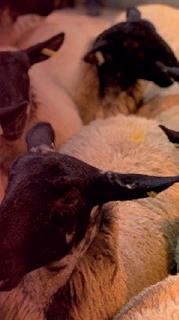





JD 2720R (64); JD 6175R (42088hrs; 15); MF 5455
34 LOADERS: JCB 536-60 Ag (08); JCB 526-56 Agri (09); Mani-120LS; Manitou MLT 735 Turbo; Merlo 23.6EV (3325hrs); NH LB110 backhoe (54); JCB 8014 & 8008; Thwaites 6T dumper (12); Terex 9T dumper; Ausa 1.75T self load 18 Honda Pioneer (21); 2 JCB Workmax 800; Polaris Ranger 20 Defender 90 TDS (07); DAF LF45 horse box (07); 2 Cit42 GRAIN TRAILERS: Bailey 16T Root 2 (22); Baidump; A & H 14T & 8T 29 STOCK TRAILERS: IW TA510 triaxle & 62 Easterby 32ft bale; 33ft triaxle low load; Redrock tri-
13 MANURE SPREADERS: West16
Opico Vari discs 3m & 4m; KV Qualidisc 3000; Kong front 104 CULTIVATORS: Pottinger 3m p/h as
front press; Gt. Plains 3.3m culti press (14); Simba Solo 380 ST; Watkins Tri-till Pro 3m; KV CLD 4.8m; Sumo 3m Multi-press (22); Simba 4.2m Flatliner; Heva Disc Roller; Lemken Dolomit 9/300 (14); 2 Spaldings Flat lift; Kong. Vibroflex 4m 25 PLOUGHS: Kuhn MM121 6F; KV 21 DRILLS: Kuhn Combiliner LC3000
24 SPRAYERS: Case 24m (6017hrs; 02); Frazier 3D 64 HAY TIME: Claas Rollant 255; Batwing ; Pottinger 382 rake; Claas Volto 420 & 770; McHale 991 BE wrapper 35 ROOT CROP: Mediema 160/70 elevator; Tong Caretaker beet harv. 143 HEDGERES, BUCKETS: Bamford Kestrel Evo 5m (17); 6; Twose 520; McConnel 4330 (19) 445 STOCK REQUISITES: Kuhn
tub mix; Shelbourne Powermix Pro (06); Murska 350 mill; McHale per 810 SPARES & WHEELS: 195 GROUNDCARE: Ransome HR6010 -120 (23); JD 455 diesel; Ransome ZT220
190 GARDEN, ORNAMENTAL: 620 PLANT & WORKSHOP:
620 BUILDING MATERIALS: Portal




MURTON, YORK, YO19 5GF Tel: 01904 489731 or online at www.ylc.co.uk


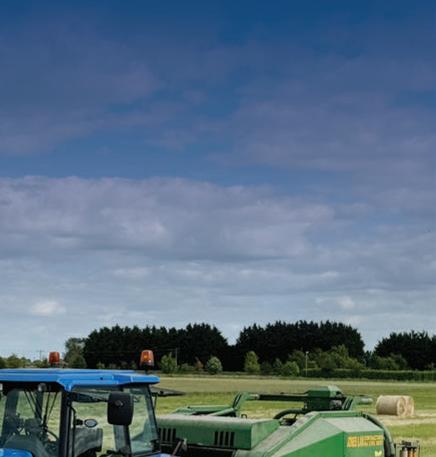

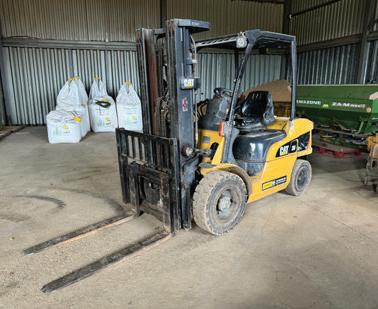





FARM DISPERSAL SALE
10.30AM - SATURDAY 14TH SEPTEMBER 2024
MILL BANK FARM, GOOSTREY, CHESHIRE, CW4 8PW



2017 MF 5609 Dyna4 (3031hrs), 2016 MF5610 Dyna4 (4428hrs) with MX T410 Loader, MF135, 2012 HI SPEC 2000 Tanker, 2009 STORTH SM200 Slurry Stirrer, 2017 MF DM246 Disc Mower, TWOSE 9Ft Roller, HAYMAKER HM300, KUHN GA402 Tedder, KEENAN Klassik 100 Feeder, IFOR WILLIAMS TA510G-12 Stock Trailer, 2,500Ltr TITAN Bunded Tank, 3 M&K Feed Bunkers, 10 Quad Bales Barley Straw, Livestock Sundries, Farm Tools, Furniture & Effects (10.30am). Catalogues on Website. Sale Day No. 07719 527238. For MJ & J Rhodes (Relinquishing Tenancy).

We take a farmer-centric approach to media. Our job is to help farmers run their farms more efficiently and make better purchasing decisions

On instructions from Peter Crosswell Agricultural Ltd due to retirement
MAJOR AUCTION SALE OF 3NO. CLAAS LEXION 8800TT COMBINE HARVESTERS, 9NO. JOHN DEERE AND NEW HOLLAND TRACTORS, IMPLEMENTS AND MACHINERY
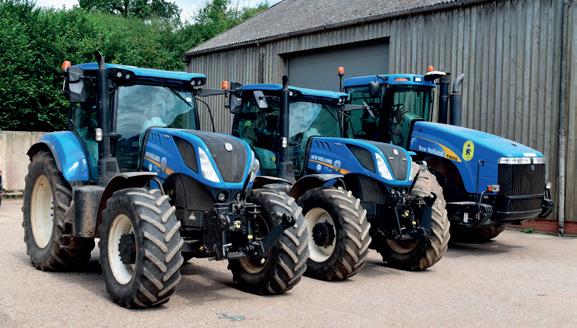
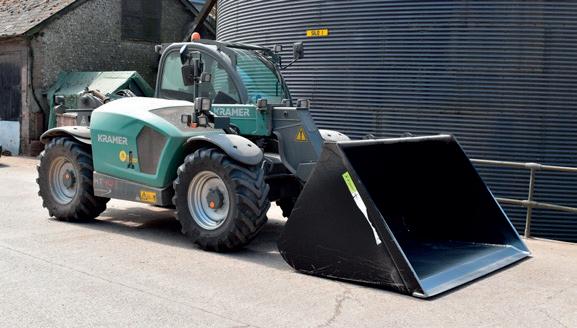

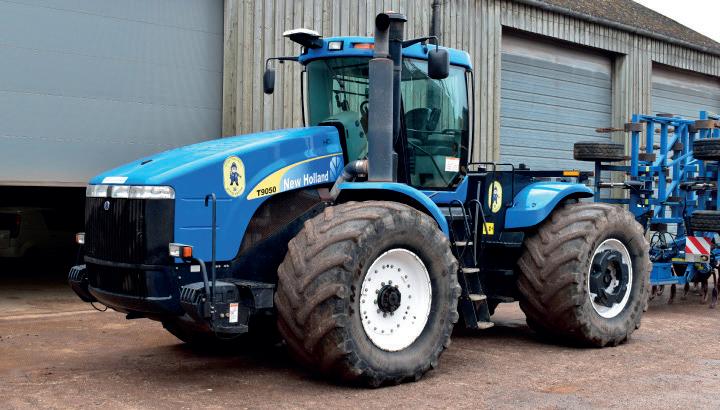

To include: Combine Harvesters: 2023 Claas Lexion 8800 TerraTrac (2), 2022 Claas Lexion 8800 TerraTrac all with 1230 Vario 40ft cut headers, Shelbourne Reynolds RSD24 headers (2), Tractors: John Deere; 2022 6250R, 2021 6250R (2), 2019 6250R, 2020 6155R, New Holland; 2020 T7.230 (3), 2009 T9050 Plant: 2018 Hitachi Zaxis 48U excavator, 2021 Kramer KT306, 2004 Terex 860 back hoe loader, Machinery: 2021/19/18 Horsch Sprinter 6ST drill 6m (3), 2022 Maschio power harrow 5m, ‘22/’18/‘09 Chafer Sentry 30m trailed sprayer (3), 2020 Dalbo PowerRolls 1230 rolls 12.3m (2), 2022 Amazone ZA-TS 4200 fert. spreader, 2009 Köckerling Exaktgrubber Vario cultivator 7.5m, 2004 Kockerling precision cultivator, 2014 Kverneland Optima V6row maize drill, Väderstad Carrier 1225 and 820 cultivators, Trailers: 2022 Bailey 16t trailer, 2012 Warwick 16t (2), 2007 Warwick 16t (2), Warwick 10t and 12t, 2014 Rosewell 10m flat Vehicles: 2021 Land Rover Defender 110, 2016 Isuzu D-Max, 2014 Toyota Hilux, 2013 Land Rover Freelander, 2012 Mitsubishi Shogun, 2004 Ford Fiesta van, 2004 Kawasaki Mule 3010, Also: Starfire SF6000 receiver (5), spares, workshop equipment, wheels and tyres.
WEDNESDAY 18TH SEPTEMBER 2024 AT 9.30AM
On instructions from Dalham Estates Ltd due to retirement
MAJOR AUCTION SALE OF 8NO. AGRICULTURAL TRACTORS, 2NO. COMBINE HARVESTERS, SELF-PROPELLED SPRAYER, LOADERS, VEHICLES, IMPLEMENTS AND MACHINERY


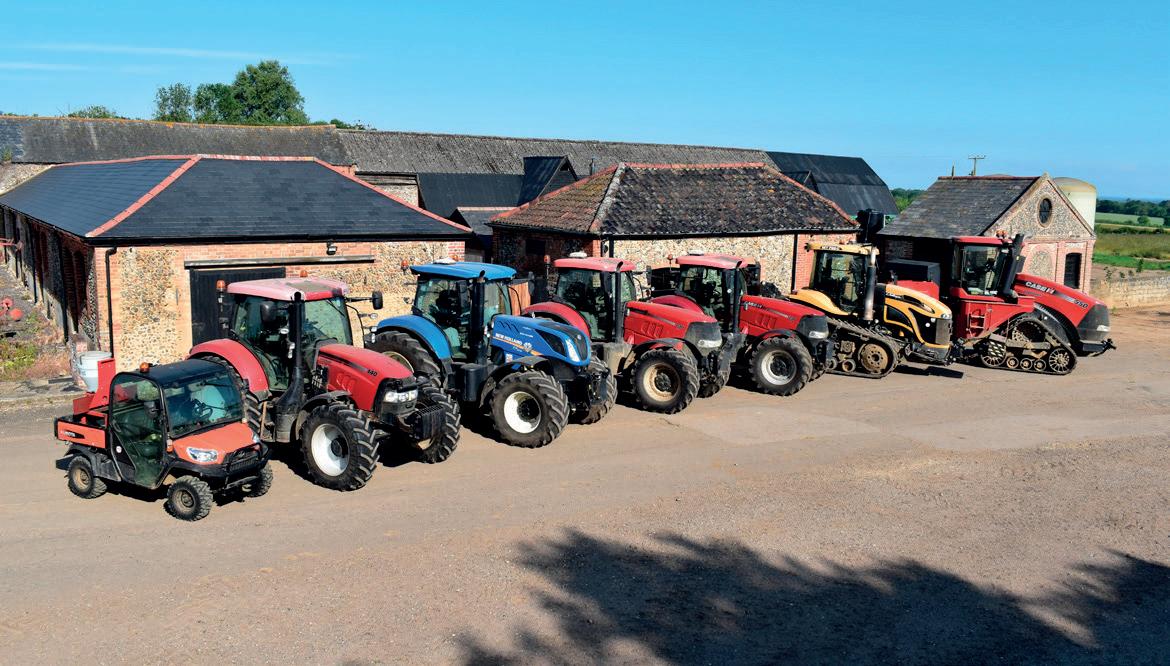


Tractors; 2013 Case IH STX550 Quadtrac, 2011 CAT Challenger MT765C, 2019 JCB 4220 Fastrac, 2019 New Holland T7.270 AutoCommand, 2014 Case IH 230 Puma CVX (2), 2013 Case IH 230 Puma CVX, 2012 Case IH 140 Maxxum Combine Harvesters; 2018 New Holland CR9.90 Revelation, 2013 New Holland CR9080: Self-Propelled Sprayer; 2016 Amazone Pantera 4502: Loaders; 2018 JCB 531-70 AgriPro, 1998 JCB 3CX Sitemaster: Machinery; Vaderstad RDA800S drill 8m, Horsch Leeb 8GS trailed sprayer, Amazone ZG-TS 7501 Profis Pro trailed fertiliser spreader, Vaderstad Rexius Twin 820, Vaderstad TopDown 700 & 400 (2), Brock Campaign 900S drill 9m, Brock SUB-V 600 cultivator 6m, Dalbo PowerRoll rolls 18.3m, Kverneland Monopil 18row precision drill, Lemken Korund cultivator 9m, Spearhead Excel 686VFR headgecutter, Kverneland LD85 6furrow reversible plough (2), Simba Great Plains CultiPress 6.6m, HM 18tonne trailer (4), Herbst 24ft low loader: Also; attachments, spares, wheels and tyres
WEDNESDAY 25TH SEPTEMBER 2024 AT 9.30AM
Property | Land | Fine Art | Farm Machinery
AUCTION SALE OF 25NO. VINTAGE AND CLASSIC TRACTORS, VEHICLES, PLANT NEW AND USED IMPLEMENTS AND MACHINERY, IFOR WILLIAMS TRAILERS AND SPARES
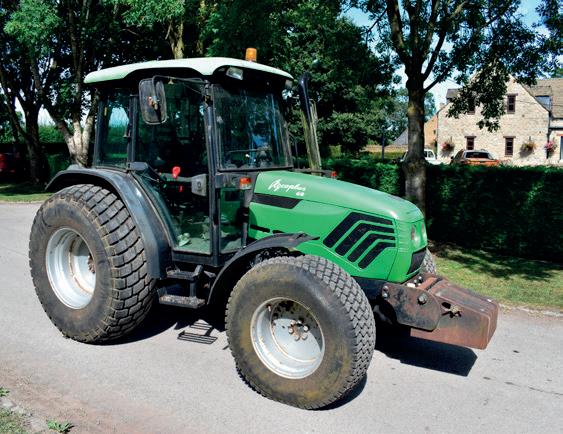

To include: Tractors: Massey Ferguson 35, 35X, 135 (2), 148, 65 MK.II (2), 65, 690, 550, Ferguson TEF-20, Doe Triple D, Fordson E27N P6, Super Dexta, Diesel Major, John Deere: 3040, 2650, Deutz: DX630, Agroplus 60, Zetor: 5245, David Brown: Cropmaster, Fowler VFA, International 434, Massey-Harris: Pony. Plant: Excavators: 2019 Kubota U10-3, 2021 Sunward SWE08B, Kubota KX61-2X, 2019 Takeuchi TB216, 2015 Kubota U55-4, JCB 3CIII, Hitachi 13tonne. Telescopic Loaders: 2001 JCB 535-95, 1988 JCB 520 Farm Special, 1997 JCB 526S, 2004 JCB 520-50. Dumpers: 2015 Thwaites 3tonne swivel tip, Thwaites 4000 front front tip. Also: Ifor Williams trailers, lawnmowers, bygones, wheels and tyres, large qty of tractor spares, excavators and loader buckets, implements and machinery
Sales and valuations undertaken nationwide Catalogues available from the auctioneers two weeks prior
On instructions from Six Mile Bottom Farms LLP due to a change in farming policy
AUCTION SALE OF AGRICULTURAL TRACTORS, COMBINE HARVESTER, TELESCOPIC LODAER, IMPLEMENTS AND MACHINERY


To include: Tractors: 2020 Valtra S394 (1,962hrs), 2021 Massey Ferguson 8S.205, 1988 John Deere 2850, 1982 John Deere 2140, Ford 5000. Combine Harvester: 2019 CR9.90 35ft Smart Trax. Loaders: 1996 JCB 530-70, 1987 JCB 3CX Sitemaster 4x4. Machinery: 2012 Pottinger Terrasem C6 6m drill, 2018 Kuhn Performer 4000 4m mintill cultivator, 2023 Amazone ZA-TS 4200 Profi-Hydro fert. spreader, 2014 Chafer Sentry 5000 30m sprayer, 2017 Warwick WB14FM 14tonne trailer, Claydon Hybrid 4m drill, Simba Unipress 5.5m, Lemken Juwel 8 7f rev. plough, 2014 Claydon Straw Harrow 7.5m, Cousins Contour 12.8m rolls, 2004 Spearhead Excel 605 hegecutter, Stanhay Rallye 592 12row drill. Also: AS Marston trailers, Gull trailers, power harrows, cultivators, front weights, workshop equipment, wheels and tyres
WEDNESDAY 23RD OCTOBER 2024 AT 10.00AM
Sales and valuations undertaken nationwide Catalogues available from the auctioneers two weeks prior
TIMED ONLINE AUCTION OF AGRICULTURAL TRACTORS, COMBINE HARVESTER, TELESCOPIC LOADER, IMPLEMENTS AND MACHINERY


To include: Tractors: 2022 Case IH 175 Puma CVX, 2018 Case IH 185 Puma CVX. Combine Harvester: 2009 Case IH 9120 Axial Flow. Loaders & Plant: 2021 Merlo TF33.9 Turbo Farmer, 2011 Merlo T34.7 Plus, 2007 Kubota KX161-3. Machinery: 2022 Covenbrook Triton 3m drill, 2020 Weaving GD6000T 6m drill, 2019 Weaving LD4000, cultivator with Opico Variocast Air 8, 2008 Bailey 14tonne trailer, 2011 Kuhn Axis 40.1w fert. spreader, Maidwell Moler, Alpego TriLat TL33 220 flail mower, 1999 Cousins Sidewinder 24ft rolls, 2022 Weaving Stubble Rake 7m, Spalding 5leg subsoiler, Kongskilde Vibroflex, Kuhn HR 4502 power harrow, Polaris Sportsman 570 ATV etc
COMMENCES: WEDNESDAY 11TH SEPTEMBER 2024 AT 9.00AM
FINISHES: THURSDAY 19TH SEPTEMBER 2024 AT 10.00AM
VIEWING DAY: THURSDAY 12TH SEPTEMBER 2024 FROM 10AM - 4PM

Buyers from over 50 countries 30,000 registered bidders worldwide
Up to 500 tractors for sale every month
1,500 lots of agricultural and horticultural machinery














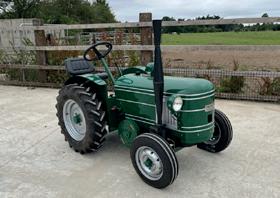




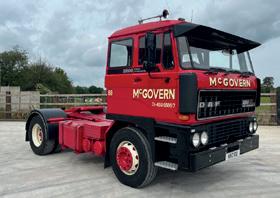
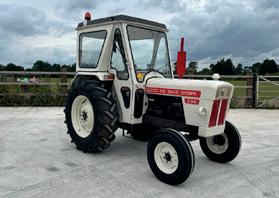

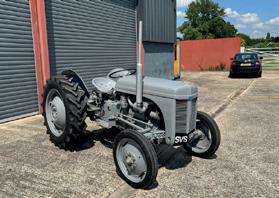
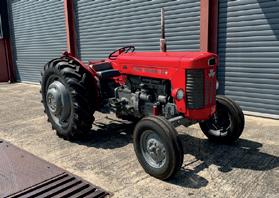
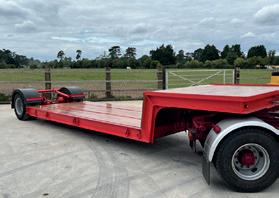






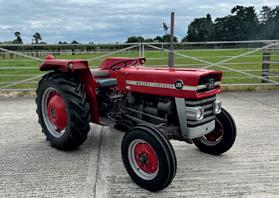



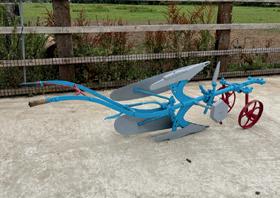

























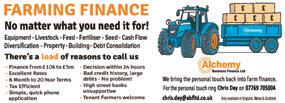

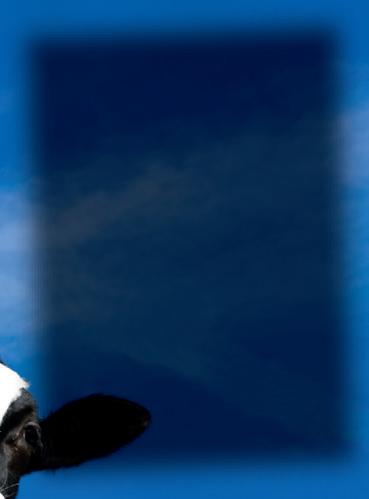



















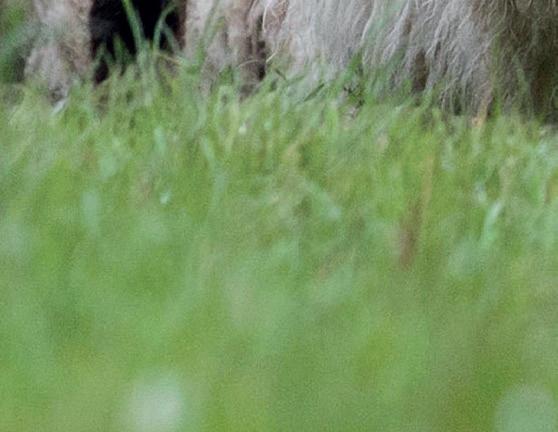



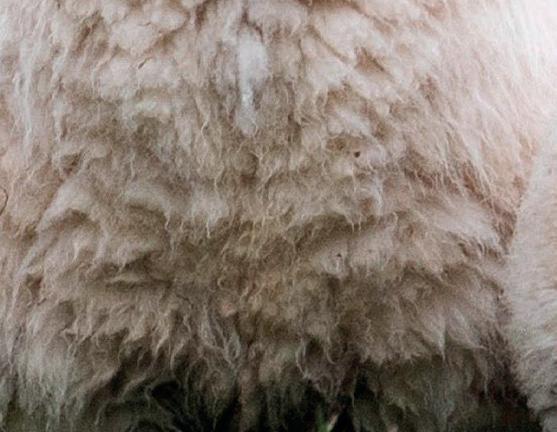













The breed helping to tackle climate change; Climate change is adapted and mitigated by lowering co2, less methane.
THE BRAMAIN FLOCK IS THE LARGEST FLOCK, 300+ EWES IS SIGNET RECORDED AND IS CONSISTENTLY USING NEW BLOOD LINES DIRECT FROM FRANCE
Has a good selection of sheep for sale at Ruthin 13th September Welshpool 26th September
Also always available on farm Shearling Ewes, Ewe Lambs, Ram Lambs & In Lamb Breeding Ewes
For more information
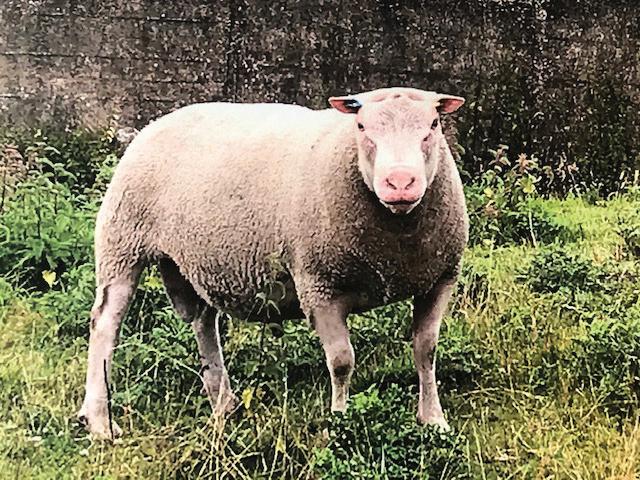
please contact: David Eglin, Bramcote Mains, Bulkington CV12 9JX Web link to sale brochure: bramcotemain.wordpress.com/2022/8/ email: bramcotemains@outlook.com












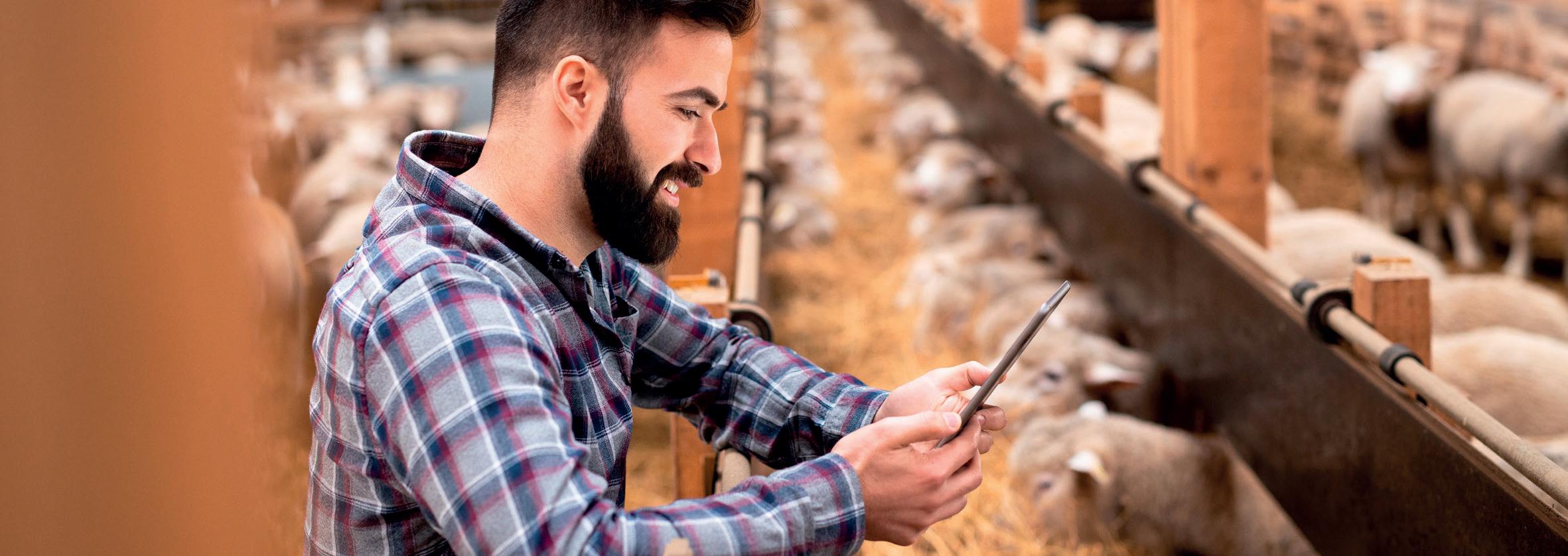






Job Description
Sales Consultant required for a market-leading supplier of software to the UK rural business community. Founded in 1987, the Company delivers software products and services across the UK to a growing, loyal client base of farms, estates, land agents and property companies.
We are currently looking for an additional member to join our sales team to provide sales to existing and new clients covering Northumberland, Durham, Yorkshire and surrounding areas. The candidate, ideally, will emanate from a sales background with a good knowledge of the farming sector.
Essential Skills:
- Educated to a degree level or qualified by experience
- Good farming knowledge/background
- IT literate with an interest in IT/software
- The ability to work on own initiative based from home within the designated region
The role encompasses building relationships with both existing and new customers as well as making yourself invaluable within a small team. This is a growing company with an excellent reputation for staff retention and offering excellent prospects.
If you also have a good knowledge of accounting then we are always on the lookout for talented people to expand our sales, training and support teams. Please get in touch and send your C.V to Apryl.jones@landmarksystems.co.uk
We currently have a wide range of positions available nationwide to include:-
• Herdsperson, Leicestershire/Nottinghamshire, 250 cows
• TMR Feeder Operator, Scottish Borders
• Head Herdsperson, North Norfolk, 340 cows Relief Herdspersons Nationwide LKL provides the perfect solution for finding the very best herd carers and managers. Visit our website for a full list of our current vacancies.
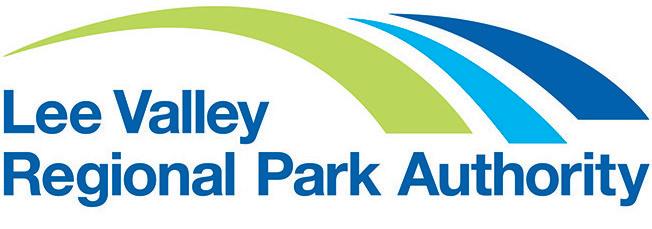
LOCATION: ESSEX | CLOSING DATE: 20TH SEP 2024
Farm Manager -
Holyfield Hall Farm (Holyfield Hall, Waltham Abbey, Essex)
£44,576 - £52,685pa, depending on experience, full time - hours as required including weekends, bank holidays and unsociable hours.
The Lee Valley Regional Park Authority was established to develop and regenerate an area of some 10,000 acres stretching 25 miles from London’s Docklands to Ware in Hertfordshire providing unique opportunities for leisure, recreation and nature conservation.
A key part of the Authority’s landholding is a highly mechanised 600acres arable and beef suckler herd farm enrolled in stewardship agreements and provides cattle from the herd for the Authority’s conservation grazing.
The Authority’s main objective is to actively manage Holyfield Hall Farm as a commercial farm but also to improve its landscape quality, biodiversity and recreational opportunities. This is principally through an extensive Countryside Stewardship Scheme. A recent change in direction saw the Farm revert from a dairy herd to a beef suckler herd so this is a perfect opportunity to take the reins in the infancy of this new working model.
The Authority is seeking to recruit an experienced and skilled person to take on this challenging, ‘hands-on’ role; combining the need to exploit the farm on a commercial basis, whilst ensuring that the objectives of the farm wildlife and environmental plan are achieved. Successful applicants will be required to obtain a Disclosure Certificate from the Disclosure Barring Service, for which assistance will be given.
Closing date: 20th September
Interviews will take place W/C 7th October
For more information on any of these vacancies or to see all our current roles, please go to: JobsInAgriculture.com
Marketing
Membership
Sales
Event Business Development Manager
Business Development Executive
Agriconnect is the largest multi-platform agricultural information business in the UK. Our brands reach deeply into all the major agricultural sectorsarable, dairy, livestock, agricultural machinery, finance, and equipment.
We offer an excellent package including:
• 25 days holiday increasing to 27 after two years
• Hybrid Working (minimum 2 days in the office each week)
• Flexible working hours available
• An extra day off on your birthday
• Matched pension contribution up to 6%
• Employee assistance programme
• Long service awards and employee of the month
• Employee discount scheme
• Employee referral scheme
• Exceptional career progression. We are ever-evolving, if you work hard and do well - with our help and support there are no limits to your speed of progress
For more details on any of our vacanies, or to apply, please scan the QR code or call on 01772 799500.





We operate an established anaerobic digester facility, CO2 capture and large-scale arable farm near Rugby. We seek an assistant manager to join our continuously growing team; the successful candidate will work directly alongside, and report to, our experienced AD manager who will offer insight, experience and on job training into the biogas industry. Responsibilities will include, but not limited to:
• Directly oversee and manage the safe and efficient operation of the AD plant
• Conduct daily plant inspections, operational adjustments, maintaining accurate records of plant data where required
• Testing of substrates on site
• Monitoring of the plant via SCADA computer system
• Responding to plant alarms
• On call duties on a rota basis, responding to breakdown / maintenance requirements and assisting maintenance teams as needed.
• Ensure compliance with environmental permits and report any incidents to the Manager.
• Lead by example in promoting teamwork, assisting colleagues, and fostering positive relations with other members of staff
• Optimise plant operations, including maximizing biogas yields, CO2 and electricity production Candidates will require the following:
• Hold a valid UK driving licence
• A basic knowledge/understanding of health & safety
• Detail-oriented, excellent verbal and written communication skills
• Reliable and trustworthy
• Be self-motivated, with the ability to work both unsupervised and as part of a team
• A strong ‘agricultural’ work ethic
• Experience in operating front-end loaders/shovels is beneficial, though onsite certification will be provided if required.
• Farming experience is preferred
Wages are negotiable dependant upon experience, and accommodation may be available, for the right candidate.
To apply please email your CV to admin@brinkowbiogas.co.uk



Position available to join our Agricultural Spray Team based in West Lancashire
Position available to join our Agricultural Spray Team based in West Lancashire
Procam/County Crops provides a high standard of application of agrochemical and liquid fertiliser, operating modern 24m and 36m self-propelled sprayers across a range of crops in the arable, grassland and vegetable sectors. Hardworking and self-motivated individual required.
Relevant qualifications (PA1/PA2) preferred, but training will be given to the right applicant.
Procam/County Crops provides a high standard of application of agrochemical and liquid fertiliser, operating modern 24m and 36m self-propelled sprayers across a range of crops in the arable, grassland and vegetable sectors. Hardworking and self-motivated individual required.
To register your interest, please forward your CV to lesleyhalton@procam.co.uk
Relevant qualifications (PA1/PA2) preferred, but training will be given to the right applicant.
To register your interest, please forward your CV to lesleyhalton@procam.co.uk





98th PLOUGHING & HEDGE

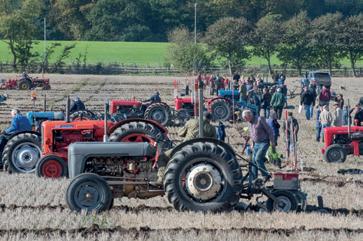



• Borehole Drilling
• Treatment & Filtration
• Water testing 01625 878411 www.blairdrilling.co.uk
Of Cow Hill, Grimsargh
Died peacefully, fortified by rites of the Holy Church on Sunday 1st September, aged 98 years.
Beloved husband and now re-united with Betty, loving dad of Colin, Andrew, Teresa, John and Esther and a dearly loved father-in-law and grandad.
The funeral Mass and interment will take place at Our Lady & St. Michael's Church, Alston Lane on Monday 16th September at 10.30am.


Family flowers only please, donations if so desired to 'Alston Lane Church' or 'R.A.B.I'.
All enquiries to William Houghton Funeral Directors, Chapel Hill, Longridge. Tel 01772 782291




Carmarthen SA33 5DR 22nd October 2024
One day event showcase dairy animals from across Wales and the Border the show features small and large business promoting all aspects of the Welsh Dairy industry with top class dairy stock on show. For further information contact 01267 232141 or email: enquiries@unitedcounties.co.uk Tickets available online www.unitedcounties.co.uk Entry £15
FARMING MATCHMAKER How lovely would it be to have someone special at your side joining you in your rural life? Wishing you could find a companion who shares your Christian faith? There’s no need to trawl the internet anymore. Let ‘Friends1st’ introduce you to everyone on their books and be delighted by the charming members you’ll connect with. Call us today on 0121 405 0941to speak to our friendly team and let us introduce you to other members. www. friends1st.co.uk/christian-farmers-dating
• BOREHOLE DRILLING FOR DOMESTIC AND COMMERCIAL PURPOSES
• WORK CARRIED OUT TO A VERY HIGH STANDARD
• WATER SYSTEMS INSTALLED
• BOREHOLE PUMPING INSTALLATIONS
• 24HR BREAKDOWN SERVICE
• FREE QUOTATIONS AND SITE VISITS THE POTTERIES GARAGE
SMALLBROOK LANE, LEIGH, WIGAN, LANCS, WN7 5PZ. TEL: 01942 871900. FAX: 01942 896843. Out of office: 01942 893660 Visit our Website www.waterwellengineers.co.uk Email: sally@waterwellengineers.co.uk







Complete with Honda engine and Electric motor. This unit is ready for work and can be delivered anywhere in the UK.
Livestock Supplies LTD
Ashley: 07831 887531, Office: 01829 260328, Will: 07769 974476 www.livestocksupplies.co.uk





Calf Hutches. Complete with fencing. A large selection of all animal and calf feeding equipment and all other associated products also available. Massive saving on list price Livestock Supplies Ltd.
Ashley: 07831 887531 Office: 01829 260328 www.livestocksupplies.co.uk

and South Wales- John Wood 07980 655637


SAVERNAKE
40 Outdoor reared, grass fed, pedigree and commercial Suffolk shearling rams for sale
Vigorous modern type, with some New Zealand genetics, selected for low birth weight, high growth and muscling, and balanced terminal and maternal characteristics. MV accredited. Shearling ewes also available.

Miles Wise, North Yorkshire T: 07890 135183 | E: info@suffolkrams.co.uk
BELTEX x TEXEL, BELTEX x CHAROLLAIS & CHARMOISE x BELTEX shearling rams.
Carefully bred for over 20 years, over 40 available, grass produced, no corn. The rams need to be seen.
Heptavac P. No silly price.
Please contact Phillip Langton: 07815 123783 - Derbys


Beltex X Texel X Charollais
Shearling Rams
Excellent conformation, tight skins, ready for work. Heptavac P. Naturally Reared, no corn
Contact Mr Brocklehurst on 07764 196462 or 01260 223338
SUFLEX SHEARLING RAMS
(Pedigree Blue Faced Leicester ram crossed with a Pedigree Suffolk ewe) Resulting in Outstanding Hybrid Vigour, Growth & Performance Suffolk Ram Lambs & Shearlings
A weekly selection of freshly calved & in-calf dairy cattle sourced from the UK. All guaranteed and delivered anywhere in the UK Finance can be arranged. Livestock Supplies
Ashley: 07831 887531, Office: 01829 260328, Will: 07769 974476 www.livestocksupplies.co.uk

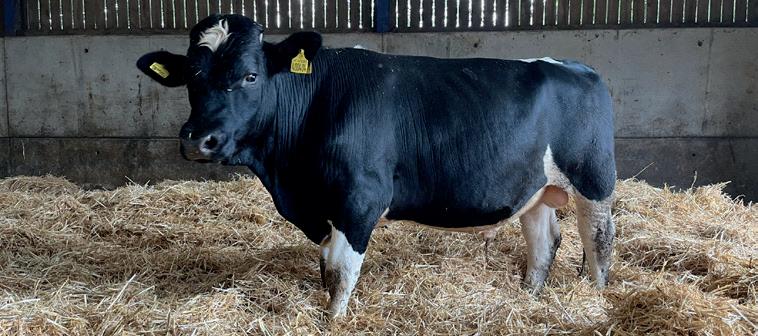
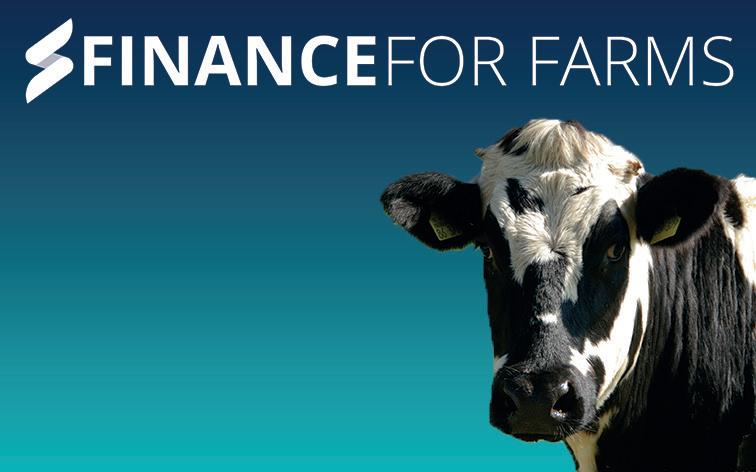




Well bred, Halter trained Bulls 18 months - 2 years. Vaccinated for BVD + IBR, TB 4 Area


Available in suitable batches delivered to most parts of the country Continental Bull and Heifer calves 3-5 weeks old available now.
Quality store cattle sourced directly from Welsh/Shropshire Borders Farms, delivered to your farm. Delivery Nationwide.
Livestock Supplies Ltd
www.livestocksupplies.co.uk
173689 John – 07885 739120 17-22 months. Some Semen tested. TB4 area. Younger bulls also available Five Red and Black Limousin stock bulls
Edward: 07770 457453 N. Yorkshire (P)






















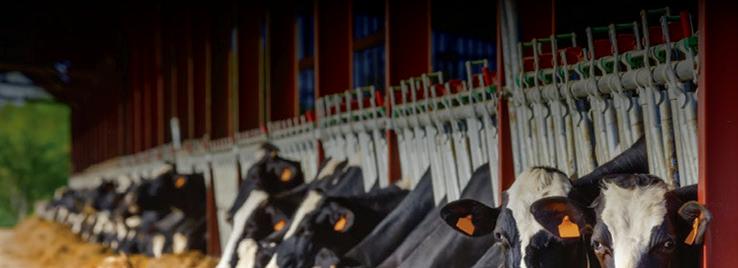
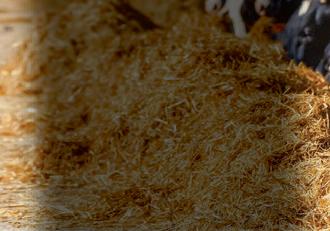



9 months- 2 years old. Health status TB4. Further details contact David 07971 719728



















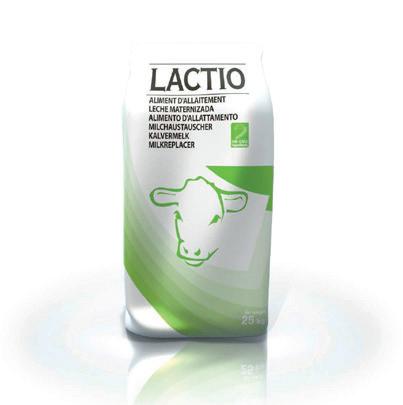



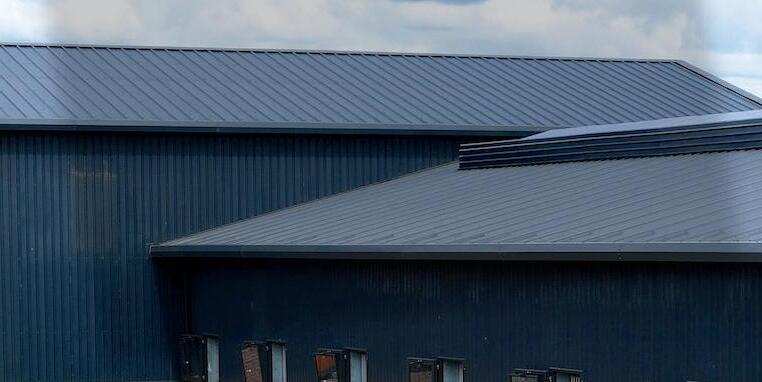


FARM FEEDS BURNLEY
www.sunshinefarmfeeds.co.uk
Nick Wilkinson Mobile 07952 078732
Growth Promoter Licks
Fertility Licks
Easy Calving Licks
Wormer Licks
Coccidiosis Licks
Orf & Ring Worm Licks
Staggers Licks
Pneumonia Licks
Easy Lamber Licks
Nationwide Delivery any Quantity
Design your own Licks or bagged minerals to your own farm and requirements
Store Open at Gisburn Auction Mart on Thursday & Saturday Quality Pays Everytime
We do same day delivery
We will respond to your enquiries the same day!
We deliver to every area twice a week.
ROUND STRAW BALES FOR SALE EX FARM
Tel: 01226 790245 or 07848 440225
Peniston (P)
Caution.
Hay & Straw for Sale in all types of Bales. Good quality. Reasonable prices.
TEL: (01625) 531629 OR (01625) 522249
LOWER YOUR VET BILLS WITH WASHED SILICA SAND CUBICLE BEDDING
* Helps to eradicate mastitis problems and lowers your milk count
* Equestrian sand also available Tel 07730 897138 / 01484 603130



Be careful anytime you are asked for personal information. If someone asks, don’t provide the information requested without confirming that they are legitimate.
Farmers Guardian only ever ask for your banking information if you are purchasing a product from us and will always call from 01772 799 500 or 01772 799 400.
























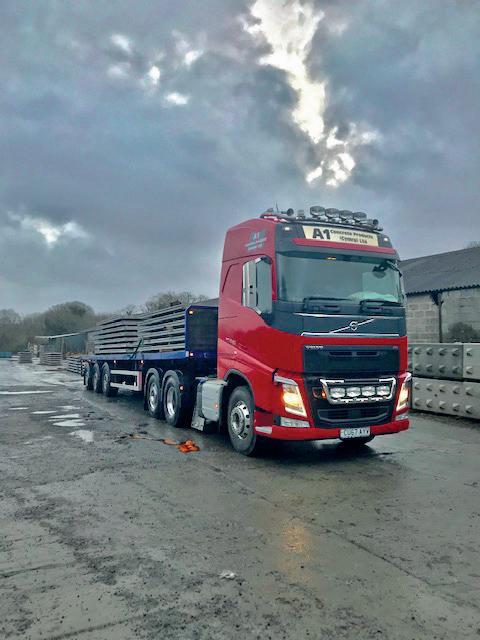



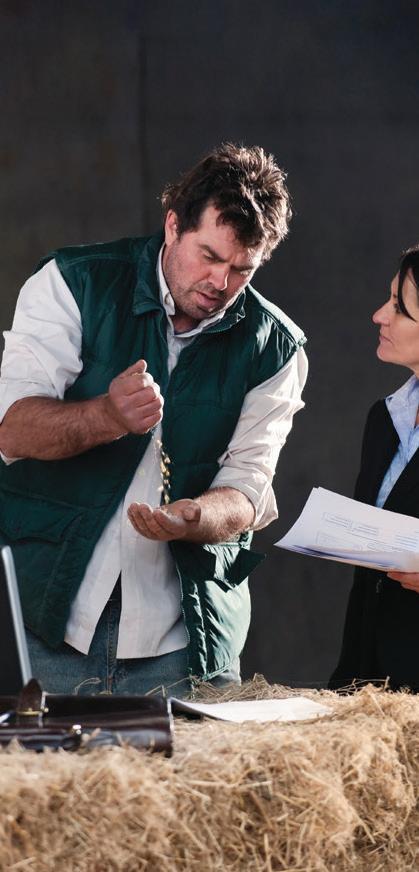












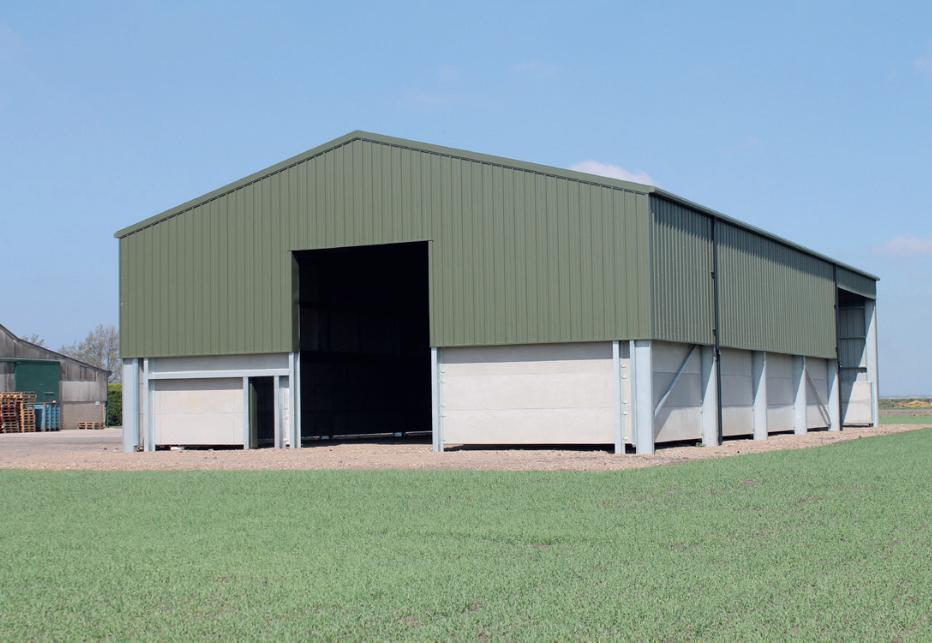











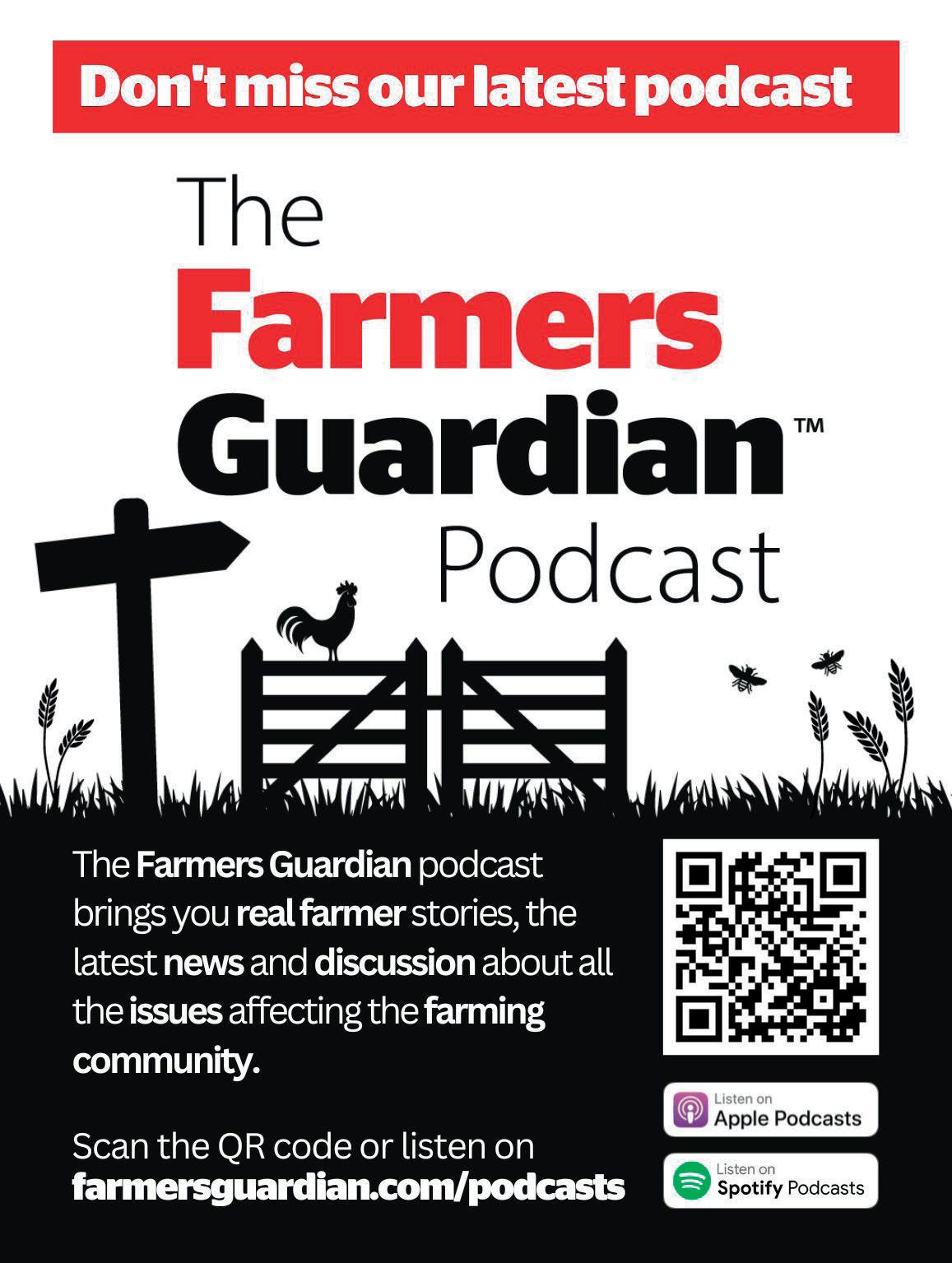













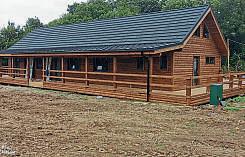












Since the General Election in July, much has been spoken and written about the new Labour Government and, in particular, its proposed changes to planning policy.
As expected, it was very quick off the mark with the proposed new National Planning Policy Framework (NPPF), which was released for consultation at the end of July with responses due by the end of September.
But what do these proposed changes actually mean for farmers and landowners?
For the vast majority, the changes are likely to be minimal. However, those with land which fits certain criteria can expect to see an increase in interest from development promoters and developers.
The Labour Government has made it clear it wishes to meet its commitment of 1.5 million new homes and this has certainly been acknowledged and addressed within the NPPF document.
One of the key changes relates to the term ‘grey belt’. This is land located within the green belt which has been formerly developed or has limited environmental contributions.
While grey belt development is likely to be easier for developers to gain a consent, it will not be without its hurdles.
There are three ‘golden rules’ which will need to be adhered to: delivering 50% affordable homes, increased access to green spaces; and ensuring the necessary infrastructure to support homes (for example, schools and doctors).
Another aspect of the NPPF revolves around climate change and the natural environment.
The removal of the consideration of agricultural land used for food production, particularly for larger renewable projects, could make a wider range of land more



appealing for such projects due to the simplified approach being put forward. In essence this means that the quality of the land is likely to no longer be a factor in planning decisions.
An impact which will hopefully be felt by all is the anticipated recruitment of 300 additional planning officers.
This should speed up the process and ensure any queries are responded to efficiently and decisions made promptly. I can hear the sighs of relief from every agent and planning consultant throughout the country.
The NPPF changes are, on the whole, making positive steps to help those seeking development, with Deputy Prime Minister Angela Rayner stating it ‘marks a significant step to getting Britain building again’.
For landowners affected or approached by a third-party developer, I would strongly recommend seeking professional advice, particularly when considering housing and renewables.
Having a strong team of trusted advisers (accountants, solicitors and agents) to ensure that your interests are best protected is imperative.
Dan Bowden is a partner at Barbers Rural. Call 01630 692 500, or email
d.bowden@barbers-rural.co.uk


Sites of 1- 1000 acres required for residential development.
If you think that your land has potential for development, or you have been approached by a developer, then you will need expert advice that is not available at traditional sources.
Michael Rutherford is a specialist agent acting and negotiating for landowners. Contact me for a confidential and expert consultation at no cost.
All areas of the UK covered.









Farmers Guardian, Fginsight.com and fgbuyandsell.com (hereinafter referred to as ‘Farmers Guardian) may contain advertisements, links to other Internet websites or online and mobile services provided by independent third parties, including websites and telephone contacts of our advertisers and sponsors (what we call “Third Party Sites”), either directly or indirectly.
It is your decision whether you purchase or use any third party products or services made available on or via Third Party Sites and you should read below carefully. Our Privacy Policy does not apply to Third Party Sites. In no circumstances do we accept responsibility for your use of Third Party Sites or in respect of any Third Party products. By Third Party Sites we mean websites, online or mobile services provided by third parties, including websites of advertisers and sponsors that may appear in Farmers Guardian. By Third Party Products we mean products or services provided by third parties.
Farmers Guardian contains advertising and sponsorship. Advertisers and sponsors are responsible for ensuring that material submitted for inclusion on Farmers Guardian complies with international and national law. Farmers Guardian (nor its websites) is not responsible for any error or inaccuracy in advertising or sponsorship material.
Any agreements, transactions or other arrangements made between you and any third party named in, on (or linked to from) in Farmers Guardian and its websites are at your own responsibility and entered into at your own risk.
Farmers Guardian promises to develop and operate with reasonable skill and care and will use reasonable efforts to promptly remedy any faults of which it is aware.
Farmers Guardian does not provide any other promises or warranties about its products and services.
Farmers Guardian is provided on an “as is” and “as available” basis. This means that Farmers Guardian does not make any promises in respect of Farmers Guardian or the services and functions available on or through Farmers Guardian, Fginsight.com and fgbuyandsell.com or of the quality, completeness or accuracy of the information published on or linked to from Farmers Guardian, Fginsight.com and fgbuyandsell.com other than as expressly stated above.
The above disclaimers apply equally to your use of Farmers Guardian, Fginsight.com and fgbuyandsell.com without limiting the above; Farmers Guardian and its websites are not liable for matters beyond its reasonable control. Farmers Guardian does not control third party communications networks (including your internet service provider), the internet, acts of god or the acts of third parties.
Farmers Guardian liability will not be limited in the case of death or personal injury directly caused by Farmers Guardian negligence in those countries where it is unlawful for Farmers Guardian to seek to exclude such liability.
Any individual, who is in doubt about entering into a loan agreement, should seek professional advice or consult an authorised person who can assist in relation to entering into a credit agreement. Before acting on any information you should consider the appropriateness of the information having regard to these matters, any relevant offer document and in particular, you should seek independent financial advice.

All loans, loan participations and financial products or instrument transactions involve risks, which include (among others) the risk of adverse or unanticipated market, financial or political developments and, in international transactions, currency risk. Lending against non-traditional physical collateral exposes investors to specific risks such as the potential for fraud, theft, damage and illiquidity















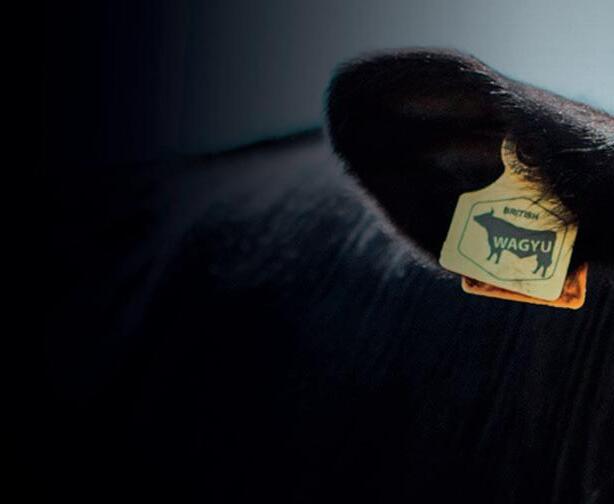















































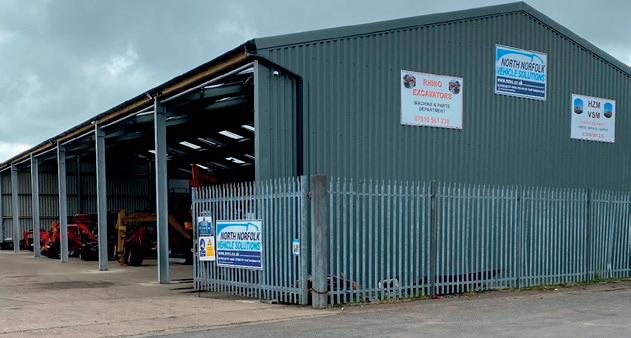






1.6 Ton, £21995+vat 2.5 Ton, 2 speed, £28000+vat
2.5 Ton, 4 speed, Cummins engine









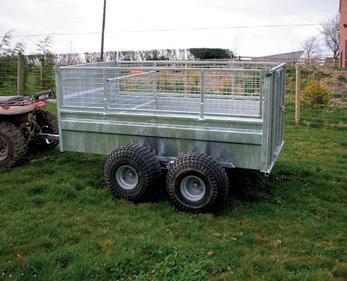

Wales ATV Centre Limited Foel, Peniel, Denbigh, Denbighshire LL16 4TE
Telephone: 01745 550541 Mobile: 07801 047 683
2013 Kawasaki 4010 diesel mule choice of 4 2019 Kawasaki mule pro dx choice of 2 c/w HALF CAB
2011 Kawasaki KVF 650 choice of 2 2014 Kawasaki KVF 650 brute force IRS choice of 3 Logic 570 multi feeder c/w counter fenders and mudguards









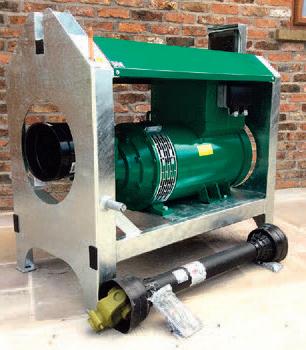

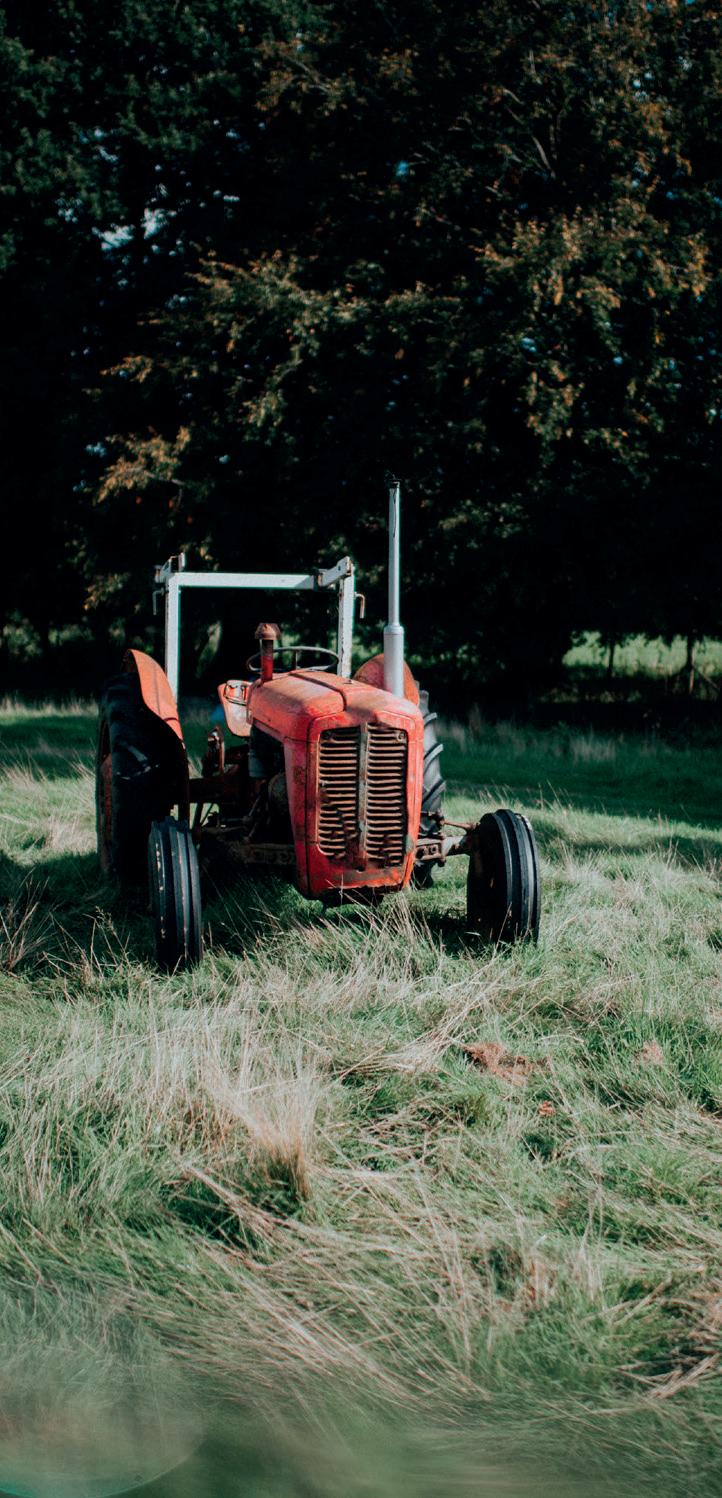

















































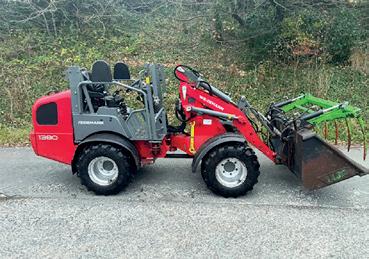

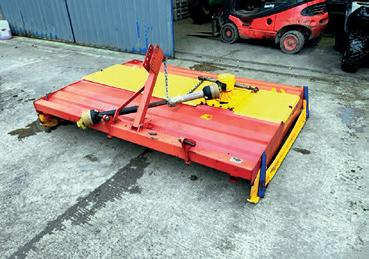
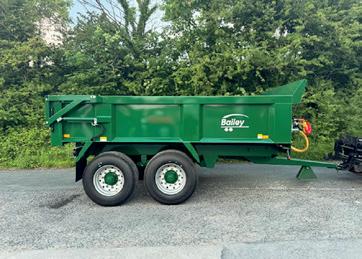


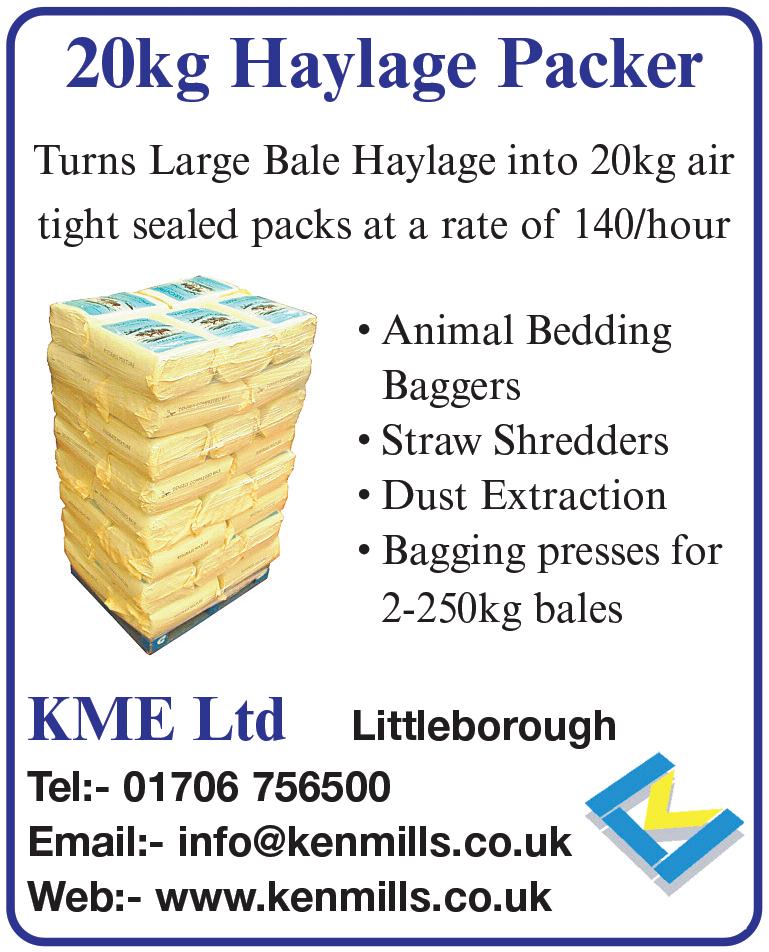

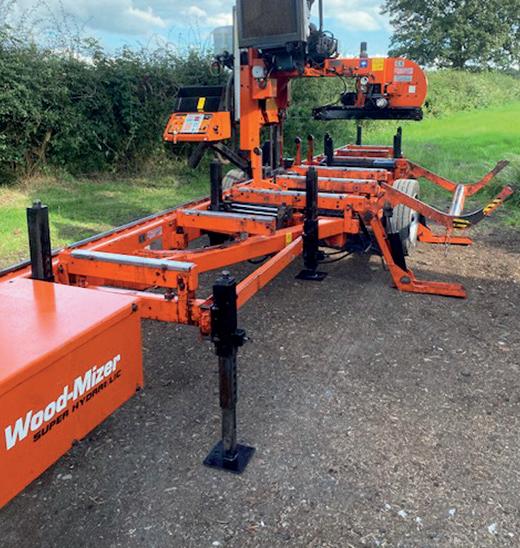






















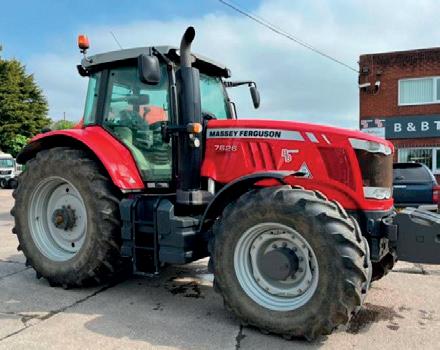


2009 JOHN DEERE 6230
3763 HOURS, 40K POWERQUAD,
3 X MANUAL SPOOLS, 540/540E/1000 PTO SPEED, AIR SEAT, PASSENGER SEAT, AIR CON. 340/85R24 X 420/85R34 CONTINENTAL
£28,500
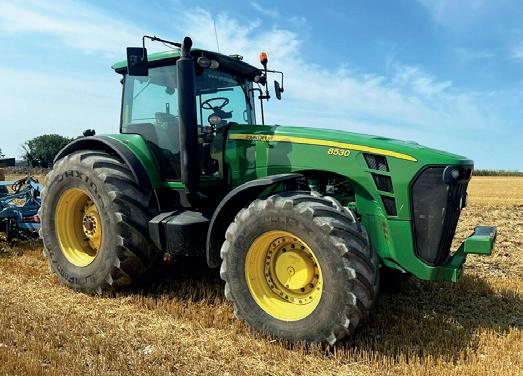
2008 JOHN DEERE 8530
9200 HOURS, 40K AUTOPOWER, ILS, ISOBUS READY, GREEN STAR READY, 4 X ELECTRIC SPOOLS, TELESCOPIC PICKUP HITCH,






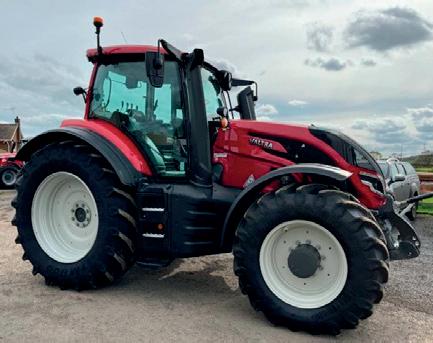



















2003 LEMKEN 6 METRE HYD FOLDING STUBBLE CULTIVATOR
C/W DOUBLE CRUMBLER ROLLER, 6X PAIRS OF LEVELLING DISKS, 12X TINES, 550/60-22.5 WHEELS AND TYRES, NICE ORIGINAL MACHINE
£7,950














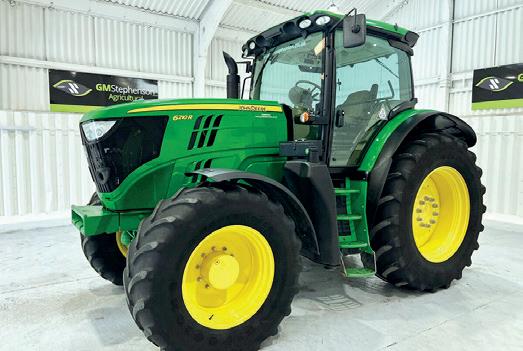
2012 JOHN DEERE 6210R ONLY 2806 HOURS!!, 40K AUTOQUAD TRANSMISSION, TLS & CAB SUSPENSION, 3 X MANUAL SPOOLS, AIR SEAT, AIR CON, 540/65R30 X 620/70R42 FIRESTONE
£63,500


2008 NEW HOLLAND T7030 5237 HOURS, 50K POWERSHIFT, AIR BRAKES, FRONT & CAB SUSPENSION, 4 X MANUAL SPOOLS, 540E/1000 PTO SPEED, AIR SEAT, AIR CON. 540/65R30 X 650/65R42 £41,500

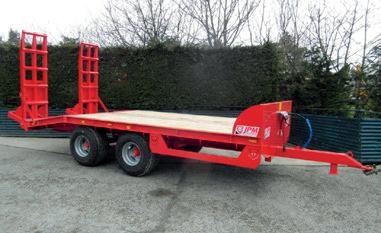







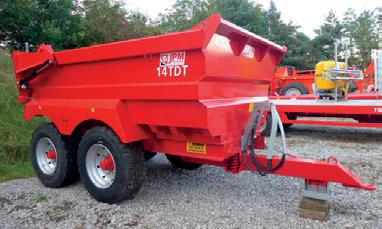





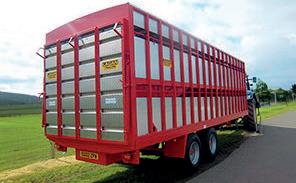

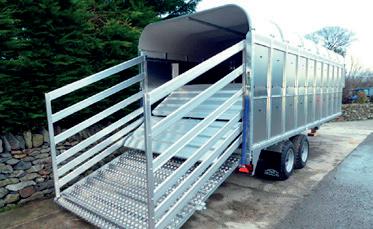


Bateman RB35 Self Propelled Sprayer

John Deere 8370RT 2019, 5090 hours, AutoPowr 50kph, Cab Suspension, 30’’ Tracks, Wide Wheel Drive, £130,000 +VAT

John Deere 195 2022, AutoQuad 50kph, F/Links + PTO


John Deere 150 + 643R Loader 1050 hours, Command Pro 50kph, PowerGard

John Deere T670i 2018, ProDrive 40kph, 630X Header, Tracks, 4WD, £240,000 +VAT Massey Ferguson 8S.225 2021, 3830 hours, Dyna7, Front + Cab, Suspension, F/Links + PTO, Guidance, £POA

Deere 6135R 2021, AutoPowr 50kph, F/Links + PTO, 710/600’s,

John Deere 6R 140 2022, 1780 hours, AutoQuad 50kph,


John Deere 6155R, 2021, 3598 hours, AutoQuad 50kph, F/Links + PTO, 710/600’s

JCB Fastrac ICON 4220 2023, 753 hours, Vario, ProLine

John Deere 6155R 2022, 884 hours, AutoPowr 50kph, AutoTrac


TRIFFITT 16T
GRAIN TRAILER.
Ym 2017 . Sprung axles. Air /hyd brakes. Commercial axles. Hyd door. Sprung draw bar. 560-60-22.5 wheels.
Price: £14750

BUNNING LOWLANDER.
mk 4 120 HBD sprung draw bar. Weigh cells . Mudguards. Ym 2015. On alliance 650 wheels. Wide angle pto. Nice spreader!!!!
Price: £40000

HISPEC 3000G TANK.
Sprung draw bar. On 750 Trelleborg tyres. Ym 2015. 2 fill points. 1 farmer from new. nice tank.
Price: £14000

KRONE SWADRO 38 SINGLE ROTOR RAKE. Ym 2013. Good order.
Price: POA



HERBST 14T
DUMP TRAILER. Sprung draw bar. Hyd door. 10stud axles. Tidy trailer !!
Price: £7750
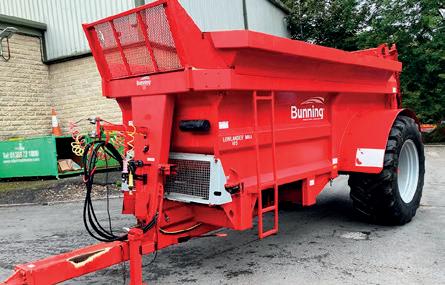
BUNNING 105.
Slurry door. Wide angle pto. Air brakes. Steel mudguards. Spinner deck ready. Flared extension sides. On Alliance 650 wheels. Ym 2017 . Nice machine!! Price: £26000

MCHALE C460 STRAW BLOWER. Electric controls. Ym 2019. Nice machine!!
Price: £11700

MALONE TEDD AIR 4 ROTOR TEDDER. Ym 2020. Tidy order
Price: £5950



BAILEY TB 9. GRAIN TRAILER. Hyd door. 435 low profile wheels on 8 stud axles. Ym 2022. Very good order!!
Price: £11000

BUNNING LOWLANDER 60.
Wide angle pto. Slurry door. Ym 2012. Nice spreader.
Price: £13800

SPREAD A BALE MINI GALV. ym 2018. C/w bolt on jcb qfit brackets. (can be changed). Good order.
Price: £7800

MASSEY FERGUSON RK 381 DN SINGLE ROTOR RAKE. Ym 2020. Tandem wheels. Very good order.
Price: £4500



SCALINGS 25’
BALE TRAILER. 12.5 wheels. Rocking beam axles. Ym 1999. Good order.
Price: £4500
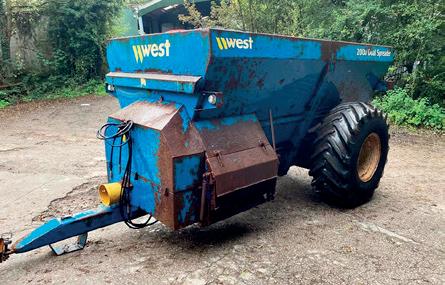
HARRY WEST 2000
DUAL SPREADER. On 23.1 wheels. Price: £8000

LELY SPLENDIMO 281 PC TRAILED MOWER CONDITIONER. Ym 2009 Very good order. 1 farmer from new !!
Price: £7000

CLAAS VOLTO 52 4 ROTOR TEDDER. ym 2017. Very good order!!!
Price: £4500

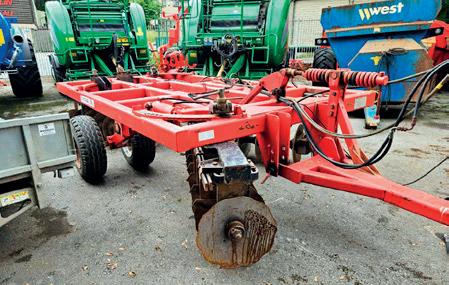


IFOR WILLIAMS 14’
TRI AXLE CATTLE TRAILER. C/w tank. Ym 2018. Good order
Price: £4850

HISPEC 1000 10 CUBE SPREADER. On 550/60-22.5 wheels. Tidy
Price: £6000

KRONE R 320 PLAIN MOWER. Ym 2017.
Price: £6750

MESKO-ROL HAYBOB. ym 2022 very little work done immaculate !!!!
Price: £1775






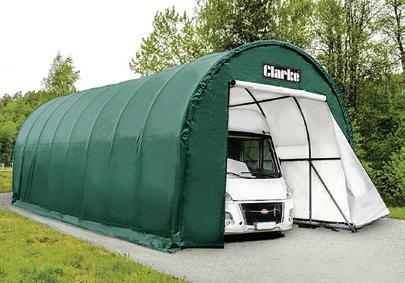









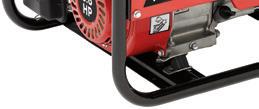























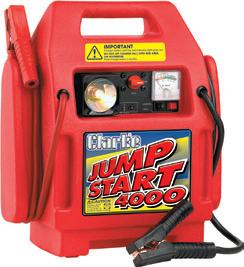








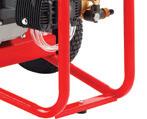














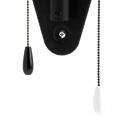

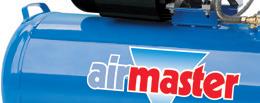



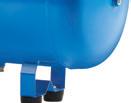



Eric - 07836 630558
Callum - 07946 335030
Thomas - 07538 390091 www.hardwickagricultural.co.uk

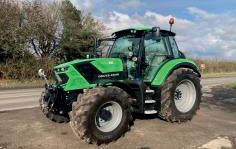
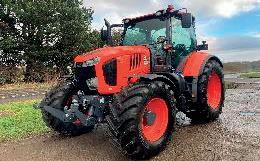
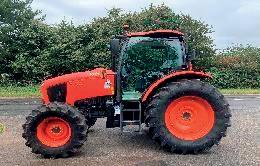
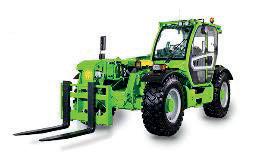



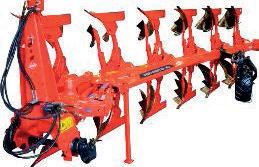



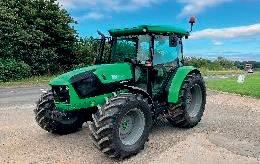






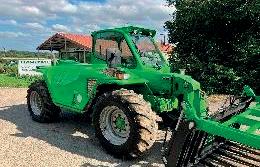



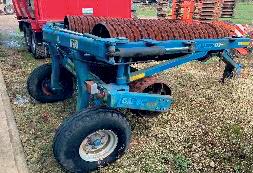

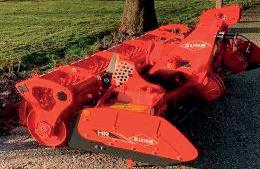





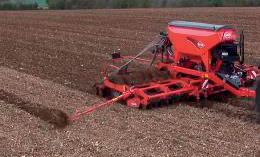
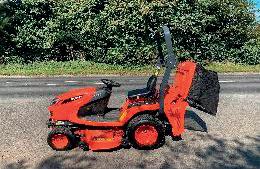






JOSKIN VOLUMETRA MANURE SPREADER
JOSKIN ADVANTAGE VOLUMETRA Slurry Tanker, Vaccum Pump, Air Brakes, Complete with Dribble Bars, Joskin Pendislide 120/40ps2 Line Spreading Boom
£104,950 +VAT


JOSKIN VOLUMETRA SLURRY TANKER
ADR AXLES 150-10G Wide Angle PTO Shaft
£56,750 +VAT



JOSKIN ADVANTAGE MUCK SPREADER
T5513/14V Tornado, 13T Payload, Single Axle, 7 to 16m Spreading Width, Drawbar Suspension, Narrow Body, 650/75R32 (100%)
£41,950 +VAT

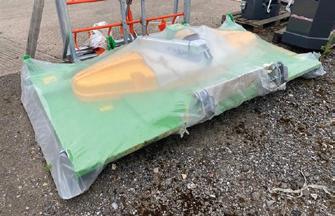
JOSKIN TR/270/C3 TOPPER Central Rear Pasture Topper - 540 PTO
£4,250 +VAT





JOSKIN TR/270/C3 TOPPER
Joskin TR/270/C3
Topper
£3,950 +VAT
CHANDLERS AG SALES TODAY: Mark George: 07824 142366 or Mat Dagger: 07500 703050






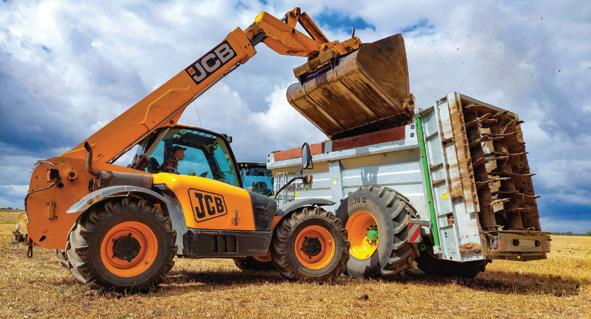




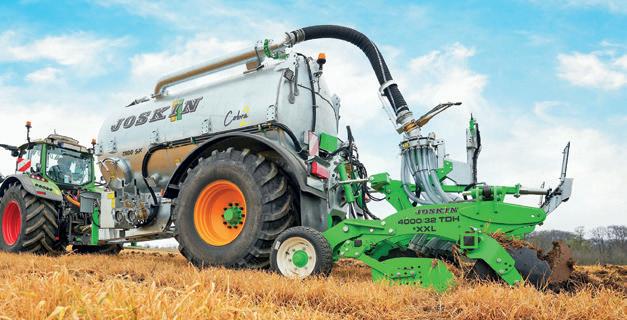




Edited by Toby Whatley – 07583
054 831 – toby.whatley@agriconnect.com
For more machinery content, go to farmersguardian.com/machinery-news-hub

Thrifty farmers who are looking for a cost-effective solution to update and enhance the technology on their older tractors may wish to consider the latest retrofittable GPS package from John Deere. James Huyton reports.
RETROFITTABLE GPS units are no new thing to tractors, with many selfpropelled sprayers and older tractors still using universal lightbar systems.
John Deere’s latest retrofittable package looks to take on some of those universal concepts, with the manufacturer claiming full system compatibility across mixed brands.
Certain applications require a higher level of accuracy and data collection, but often cost leaves the accuracy of RTK out of reach for smaller farms or something for a select few tractors in a farm’s fleet.
The manufacturer claims the ag essentials package offers a costeffective way to access precision agriculture technology.
The package comprises of the brand’s latest G5 plus 12-inch touchscreen terminal, which has the capacity to run full IsoBus with the optional fitment of a IsoBus socket.
Prospective buyers can also expect a StarFire 7500 receiver, with SF1 offering correctional signal accuracy of +/-15cm. Alongside this the system also comes with the brand’s M-Modem with JDLink, a connection service that links data to John Deere’s online operation center, a portal and application that collects and stores machinery and farm operational data.
This can allow larger fleet operators to see real-time data of machines working in the field. Field operations can also be assigned from the farm office, plus remote access to yield mapping and combine cameras and interfaces when working if operating compatible machines.
Natalia Pauge, John Deere’s precision ag marketing manager, says: “With this package, farmers have more options to kick-start their smart farming initiatives or upgrade their fleet to the latest technology regardless of make or age of the equipment.
“Low upfront costs and the annual li-
John Deere claims its latest precision agriculture package offers a cost-effective retrofit solution for older tractors and mixed brands.


cence model allow maximum flexibility as users can continue, pause or terminate their precision ag application after one year, so they only pay for what their farm needs.”
On-top of the basic hardware package price of £2,517, operators looking to spec up the accuracy of the GPS system or log more data can choose from a number of software licences.
Option one is a guidance licence that includes Autotrac, Autotrac TIM and RowSense for an annual fee of £1,252. For greater sophistication the brand’s precision ag licence gives operators access to extra guidance features such as AutoPath, sectional control, and SF-RTK correction signal +/- 2.5cm for an annual fee of £2,513.
Xavier Lacombe, sales lead precision ag for Europe at John Deere, says: “User flexibility is key to this more accessible platform, so we are also offering SF-RTK licence packages on three-month, one-year and three-year terms. This allows users to access accurate guidance a key times of the year such as drilling or harvest.”





The new additions to Claas’ Scorpion telehandlers offer 3.3- to 4.2-tonne lift capacity and 6.7- to 10-metre lift heights.

Machinery manufacturer Claas has announced an expansion to its telehandler line-up, adding five new models to its Scorpion range. James Huyton reports.
● Latest additions o er 3.3-4.2t lift capacities
WITH a range that already covers lift capacities from 3.3 to six tonnes, the latest additions to Claas’ telehandler line-up plan to sit within the 3.3-4.2t end of the spectrum.
Latest editions to the Scorpion range include the 733, 1033, 638, 738 and 742. These new models also add to Claas’ continued partnership with lifting equipment manufacturer Liebherr. Power is delivered from Liebherr’s four-cylinder 143hp power plant.
The manufacturer also claims uprating the hydraulic pressure in the machines has allowed the handlers to achieve an extra 300kg capacity compared to subsequent derivatives.
The new cabin claims to improve operational comfort and ergonomics. Both the cabin door and quarter panel are capable of retracting 180 degrees allowing for better access and cabin ventilation.
Changes to the position of the operator display, greater adjustment on the steering column and a larger tread surface on operator pedals are all said to improve operator functionality.
Now positioned to the right of the steering wheel the 3.5-inch digital dashboard can also be optionally
specified to a 7in derivative. Upgrades to the cabin air conditioning system also include continually variable temperature selection to suit operating environment.
The new cabin also includes a seat armrest-mounted joystick, claiming to retain optimum operator positioning regardless of seat position.
New loading features including automatic bucket shake, return to dig and automated mast retraction all claim to improve operator productivity in loading cycles.
Additions to the operating functionality allow the machine to operate 1,600rpm during loading. With the manufacturer’s dynamic power system claiming to automatically adjust engine speed to joystick lifting angle when loading.
The Scorpion’s standard hydrostatic transmission is drawn from the brand’s long-standing Jaguar forage harvester range. Prospective buyers can also optionally specify the 738 and 742 variants with the Varipower-3 transmission.
This derivative uses a larger dual hydraulic motor which is claimed to offer 20% greater tractive force compared to the standard Varipower-2.
Both drivetrains are offered in 40kph formats.

give



Automated functions such as return to dig and bucket shake claim to offer improved loading cycle productivity.
Pickup manufacturer Isuzu and the National Association of Agricultural Contractors have announced a partnership to offer its members new discounts. Toby Whatley reports.
A NEW strategic partnership between Isuzu and the National Association of Agricultural Contractors (NAAC) is set to offer a range of benefits to fleet buyers of pickups. Under the new scheme, NAAC members purchasing multiple Isuzu D-Max vehicles will have access to special fleet discounts.
The arrangement is available through Isuzu’s dealer network, with members advised to make their dealers aware they are an NAAC member. Isuzu’s national fleet discount team will then be tasked with providing the specific discount for each deal.
Jill Hewitt, chief executive of the NAAC, says: “This collaboration between the NAAC and Isuzu is a natural fit. Our members need vehicles that are as dependable and hardworking as they are.
“We are excited about the future

opportunities this partnership will bring, ensuring our members have access to the tools [they need] to keep their businesses efficient and successful.”
The scheme covers Isuzu’s full range of D-Max pickup trucks, which come with a 125,000-mile, five-year warranty, and five years of UK and European roadside assistance.
It also includes the manufacturer’s all-electric pickup, set to launch in 2025.
George Wallis, head of marketing at Isuzu UK, says: “We are delighted to partner with the NAAC, an organisation that shares our commitment to professionalism and excellence.
“The NAAC’s dedication to representing the interests of agricultural contractors aligns with our business of supplying pickups that professionals can rely on,” he adds.


‘This





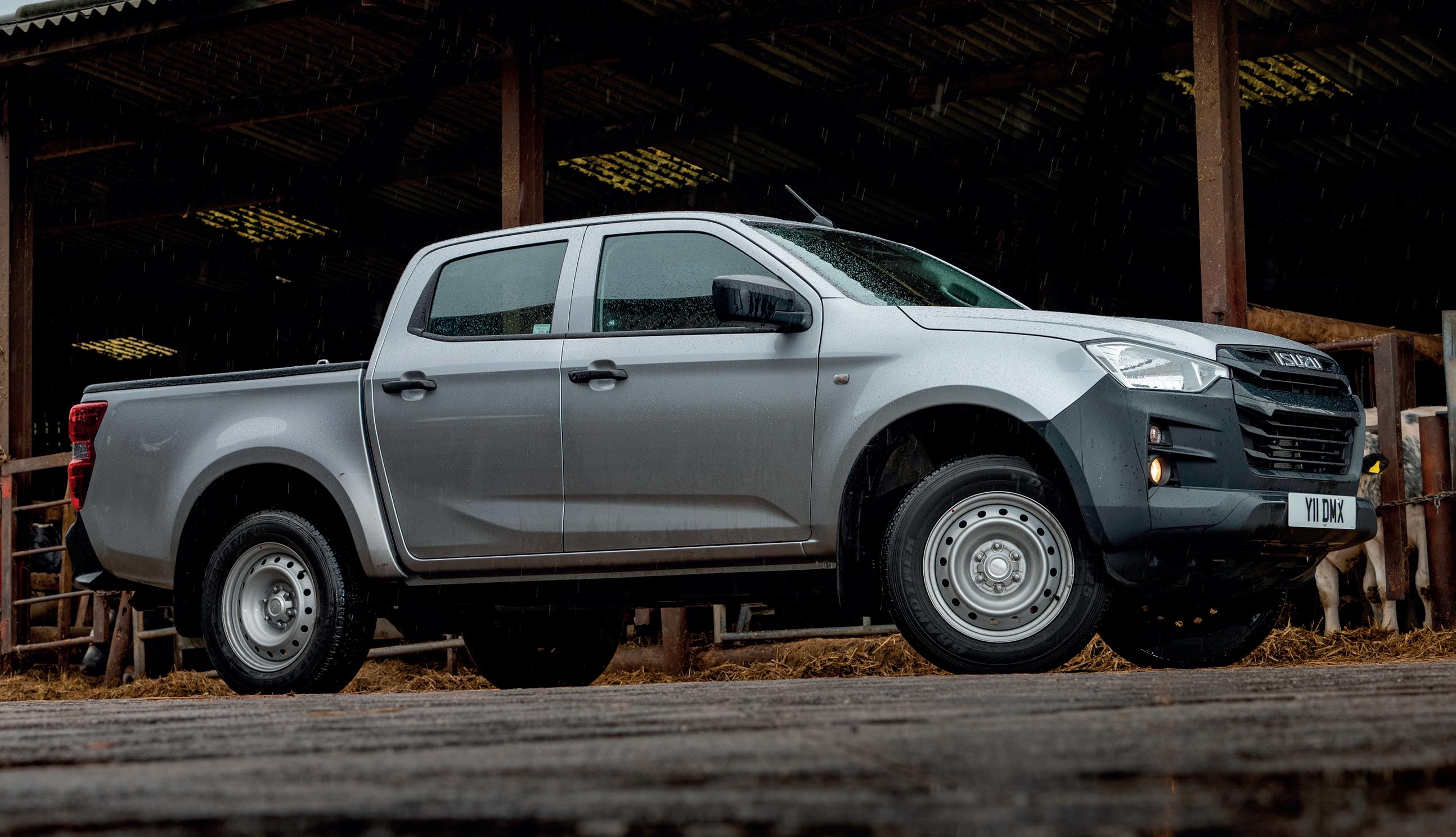









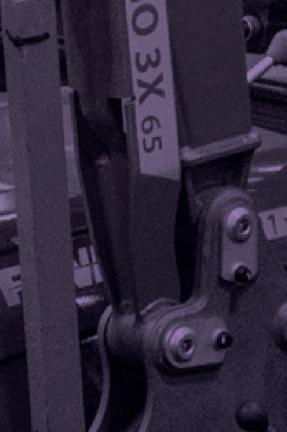














































The Claas Jaguar E trailed forage harvesters were engine-drive conversions built by Claas importer J. Mann and Sons in Saxham, Suffolk. Simon Henley reports.




There was once a time when 75hp would have represented a large tractor on most farms. So, the idea of bolting on a six-cylinder engine to a trailed harvester, potentially allowing farmers to retain a smaller tractor for silage-making while increasing harvesting output by up to 50%, would have been a very attractive proposition.


An article published in Power Farming magazine in August 1974 identified three engine-on machines available at the time, including the Gehl CB600 (93hp-106hp), the Rivierre Casalis H500 (105hp) and the Claas Jaguar 60E (95hp).
Launched in 1970 following the purchase of the Josef Bautz agricultural machinery factory by Claas the previous year, the trailed Claas Jaguar 60 became a popular choice for many farmers by the mid-1970s.
Unfortunately, as with any ptodrive machine, engine horsepower was reduced by parasitic losses through the transmission and rear





Estimated production dates
1973-1986 Jaguar 60E 1981-1987 Jaguar 62E 1984-1986 Jaguar 85E

axle. With an engine-on machine, the engine directly powered the chopping cylinder, so power losses were virtually non-existent.
By 1973, Class had introduced its self-propelled Deutz V10-powered 60 SF model, which was ideally suited to maize harvesting. But it was expensive and not particularly reliable.

Here in the UK, where hardly any maize was grown, the trailed forage harvester remained the machine of choice. However, the need for improved output and efficiency remained undisputed.
The engine-on Claas Jaguar 60E made its debut in 1973, although it was not an official Claas develop-


ment. All Claas E Series harvesters were pto-drive machines converted by J. Mann and Sons, Suffolk, which back then was the sole UK importer of Claas machinery.
The technique of bolting an engine onto a Jaguar forage harvester was developed and refined by Ivan ‘Joe’ Lee, a product development engineer at Mann Engineering.

Mr Lee, who worked for Manns from 1960 until 1985, heard about a farmer in Scotland who had fitted an engine to a Jaguar 60. The works manager at Manns thought there might be some mileage in the concept, so he went to see it and took some photographs.
Using the pictures for inspiration, the engineering team at Manns converted a Jaguar 60
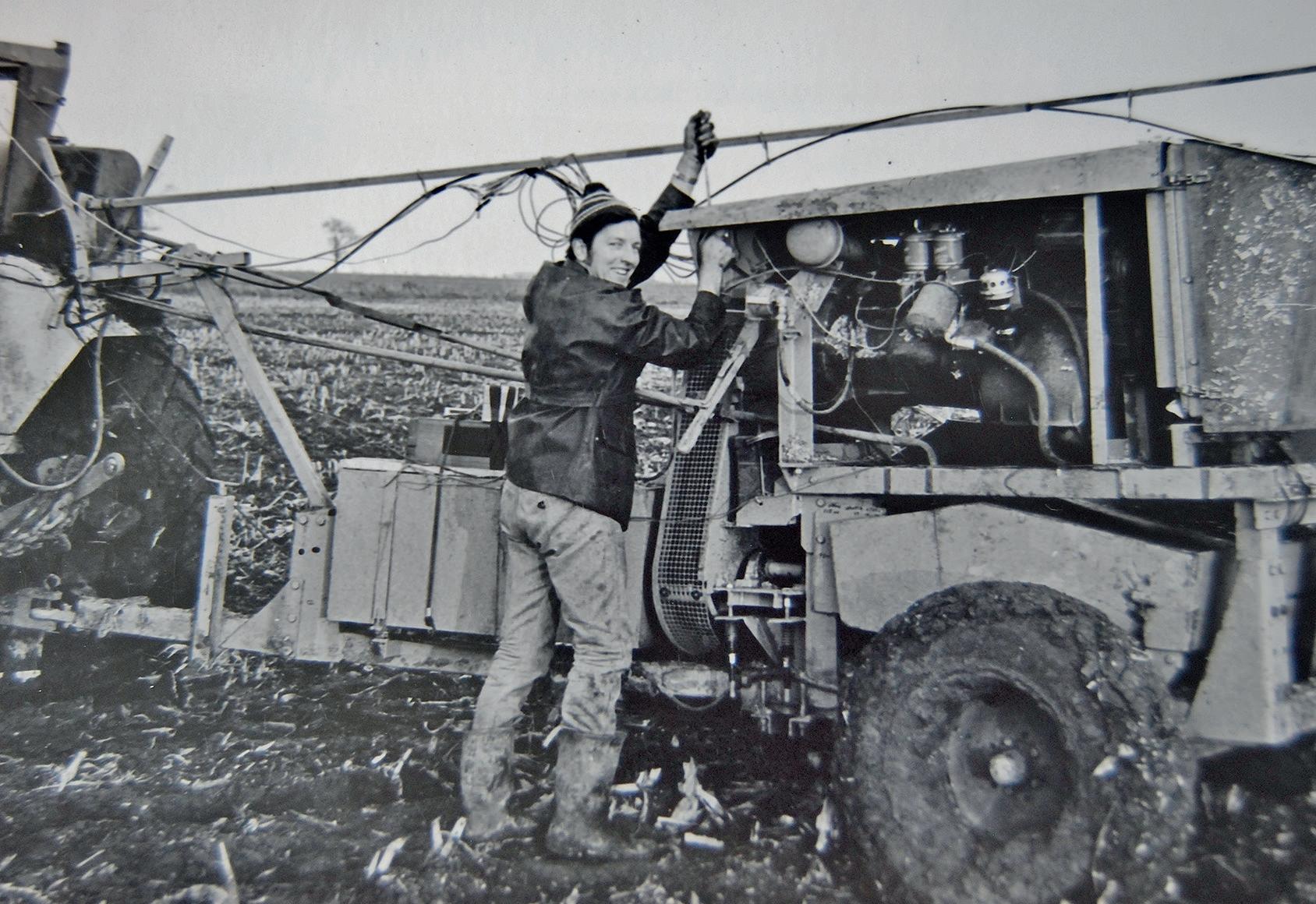


1987-1991 Jaguar 75E



using an engine borrowed from a combine harvester. It took Mr Lee and his colleagues just seven days to build the first prototype 60E.

Following a series of in-field evaluations, it was decided to offer the new model as part of the UK product range, providing Manns could source a regular supply of engines. At the time, Manns was building power packs using Ford engines. Thanks to this alliance, it was able to approach Ford, which offered Manns a consignment of engines from a cancelled bus contract at a very competitive cost.

These turned out to be slanted-block versions of the six-cylinder 2715E industrial engine (95hp), fitted








A Leyland 255 (55hp) pulling a Jaguar 60E during a field demonstration. The concept of attaching a 95hp engine to the forage harvester enabled farmers to make silage using their smaller tractors.


with a special angled sump. Because they were the only engines available at the time, all of the original 60E models used slanted Ford engines. Drive from the engine to the


forage harvester gearbox was controlled using an Anderton over-centre clutch, which was manually engaged from the tractor using a rod-linkage system.





Power to the chopping cylinder was transmitted from the clutch housing by a five-belt pulley design, using V-belts and pulleys sourced from Fenner Power Transmission.


The belt tensioning system used a spring-cushioned driveshaft block assembly, which uniformly tensioned each belt and reduced shock loads. An optional trailer


The required drive belt ratio to power the harvester was calculated from the engine’s rated power output. The engine output speed was reduced to provide a 960rpm chopping cylinder/drum speed.







A rear-mounted Manns-designed bogey hitch system removed the trailer weight from the back of the harvester and increased stability, but could not be used for making tight turns.






bogey, which was also designed by Manns, was a pick-up hitchequipped dolly which bolted onto the back of the harvester.




Unlike machines where the hitch is attached directly to the implement, the additional wheels on the Claas bogey unit carried the drawbar weight of the trailer, reducing the weight being transferred directly onto the harvester.
Following the 60E, in 1981 Manns introduced the improved Jaguar 62E model. This was originally powered by a naturally aspirated 110hp Perkins engine, although many 62E models were later offered with a 107hp Ford engine.


Importantly, the Jaguar 62 was the first Claas machine to introduce a metal detector on the grass pickup. The new floating pickup originally used outrigger wheels which were prone to blocking up with grass. Manns’ solution was to remove them and design a new skid plate system.


The problem with the new 62E was that the pickup was essentially too heavy. Internally, it was basically a 60E, with a pickup which was 100mm wider.

The metal-detection system’s magnetic sensors were extremely heavy, and, while the system did prevent metal from entering the cylinder, the performance of the machine was no better than the 60E.
The 60E engine was started and throttled up from the floor. Once the engine was running, the drive was engaged by an over-centre clutch from the cab, using a mechanical linkage.
Later machines, such as the 75E model, came as standard with an electric control system, which enabled the engine to be started

Once a common sight in the south west of England, working examples of Claas engine-on machines are a rare sight today. This Perkinspowered Claas 75E is being pulled by a 1979 MF 595 (88hp).



and throttled up, and the drive to be engaged from the cab.

The optional electronic spout and pickup control systems were introduced in 1981. They were developed at Mann Engineering by an engineer named Ray Cotton, who designed the control systems, wiring loom and control panels for all the Jaguar/Jaguar E models.
Since tractor hydraulics in those days were not powerful enough to operate multiple external services, the decision to use electronic controls was derived from necessity.

The electronic spout control and the feed-roller stop-start-reverse systems used Warner electronic actuators, which proved to be very reliable.
V8 diesel engine. Manns was approached by Germany to build a V8-powered E model forage harvester, so Claas could evaluate the performance of the 220hp turbocharged Perkins TV8.540 as an alternative to the Mercedes units it was using in its combines and self-propelled forage harvesters.

The Jaguar 85E started out as a test bed for the Perkins 540





A prototype was built by adapting the Perkins engine to fit a Jaguar 85 harvester, which used the 24-inch chopping cylinder and feed assembly from the largest 690/680 self-propelled machines.

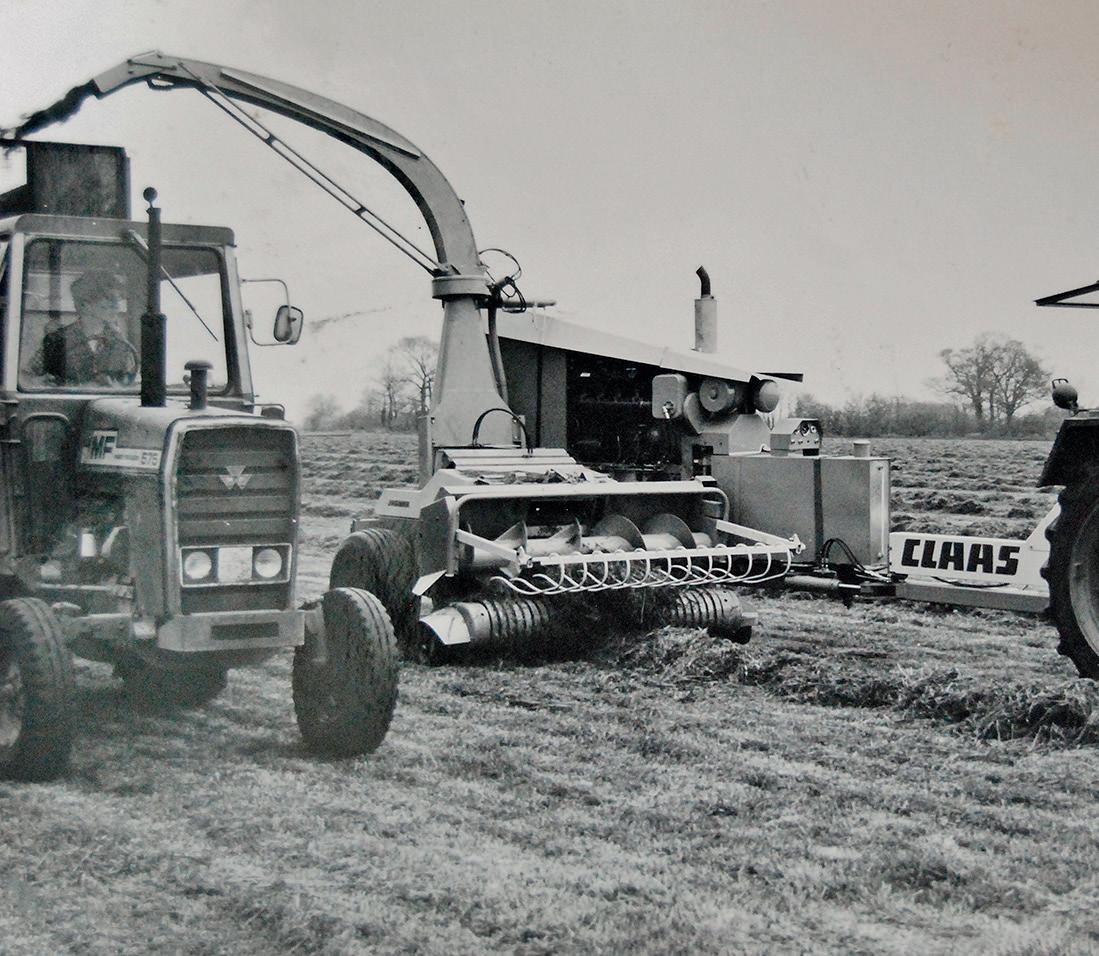





Initial field trials proved to be a disaster. Due to the way in which the fuel pumps were calibrated, the Perkins V8 did not have the torque backup and the harvester constantly choked under heavy loads.


Production numbers for the Manns Jaguar E models are unknown. Using a combination of archive material and sales records, it is estimated that production of the E range started in late 1972 and ceased in late 1991, with production peaking at about 25 units per year.





Bolting a six-cylinder engine onto a trailed forage harvester allowed farmers to retain a smaller tractor for silage-making while increasing harvesting output by up to 50%.




Edited by Katie Jones
– 07786 856 439 – katie.jones@agriconnect.com
By Ellie Layton
CONCERNS about Schmallenberg virus (SBV) are rising ahead of this year’s breeding season, following the huge impact the disease had in the spring across UK flocks.
In a recent webinar hosted by the National Sheep Association, sheep vet, Rudolph Reichel told farmers that despite the disease being relatively new, first emerging in January 2012, it was now widespread across Europe.
Dr Reichel said: “The disease surfaces every few years in large figures, but there is often a lower lying number of cases in the south of the country every year.”
However, in 2023, the disease was seen right the way up the UK, and Dr Reichel explained this was due to an intense heat wave experienced last year.
This, he said, had spread the culicoides midge, which is responsible for the virus transmission, higher north than previously seen.
Dr Reichel said: “Having a long, warm autumn is what encouraged the disease to spread and stay longer, and I believe this is something we will need to learn to deal with as we see changing climate patterns.”
Dr Reichel said it was vital for farmers to know SBV’s full threats to their farm, its symptoms, transmission, and impact on flock health and productivity, to stay informed and protect their animals.
The disease cannot be transmitted from animal to animal, or through other midges, however, it is still unknown if embryos can be carriers.
Sheep become infected in the first two months of pregnancy, while cattle are susceptible later, at two to five months.
Once the lambs are on the ground, Dr Reichel said there could be brain damage or lack of brain development, so even if the lamb was born alive, it may not always survive. Infected mothers also see a drop in milk production, limiting lamb survival.
However, studies have shown that once an animal has been infected,


Dr Reichel said it was vital for farmers to know Schmallenberg’s full threats to their farm ahead of this year’s breeding season.

they develop immunity, which lasts from four to six years, and they will not become re-infected, allowing them to carry on breeding in their lifetime.
“In 2023, the UK saw both SBV and bluetongue, which can cause similar lesions in the brains of lambs and calves. Testing is required to differentiate the viruses, so APHA offered free SBV testing to facilitate this.
There is a vaccine for the virus, but unfortunately, it is not currently licensed in the UK,” said Dr Reichel.
He encouraged farmers to test and declare any cases, with only 366 confirmed submissions from November 2023 to June 2024, 102 of which were calves, despite a much larger effect believed to be seen on farms.
Sheep vet Dr Christopher Saunders also spoke during the webinar on how farmers can control the virus.
He said: “There is no proven way to stop the spread of the virus, including the use of insecticides. This is the case for both SBV and bluetongue.”
However, he encouraged farmers to take advantage of any higher lying, windy areas on the farm, where animals could be at less risk from midges, and consider moving to later lambing to avoid the risk of transmission during pregnancy.
He reassured farmers that a Europe-wide risk assessment had concluded that SBV is unlikely to cause illness in people.
Flexible options to match your specic requirements
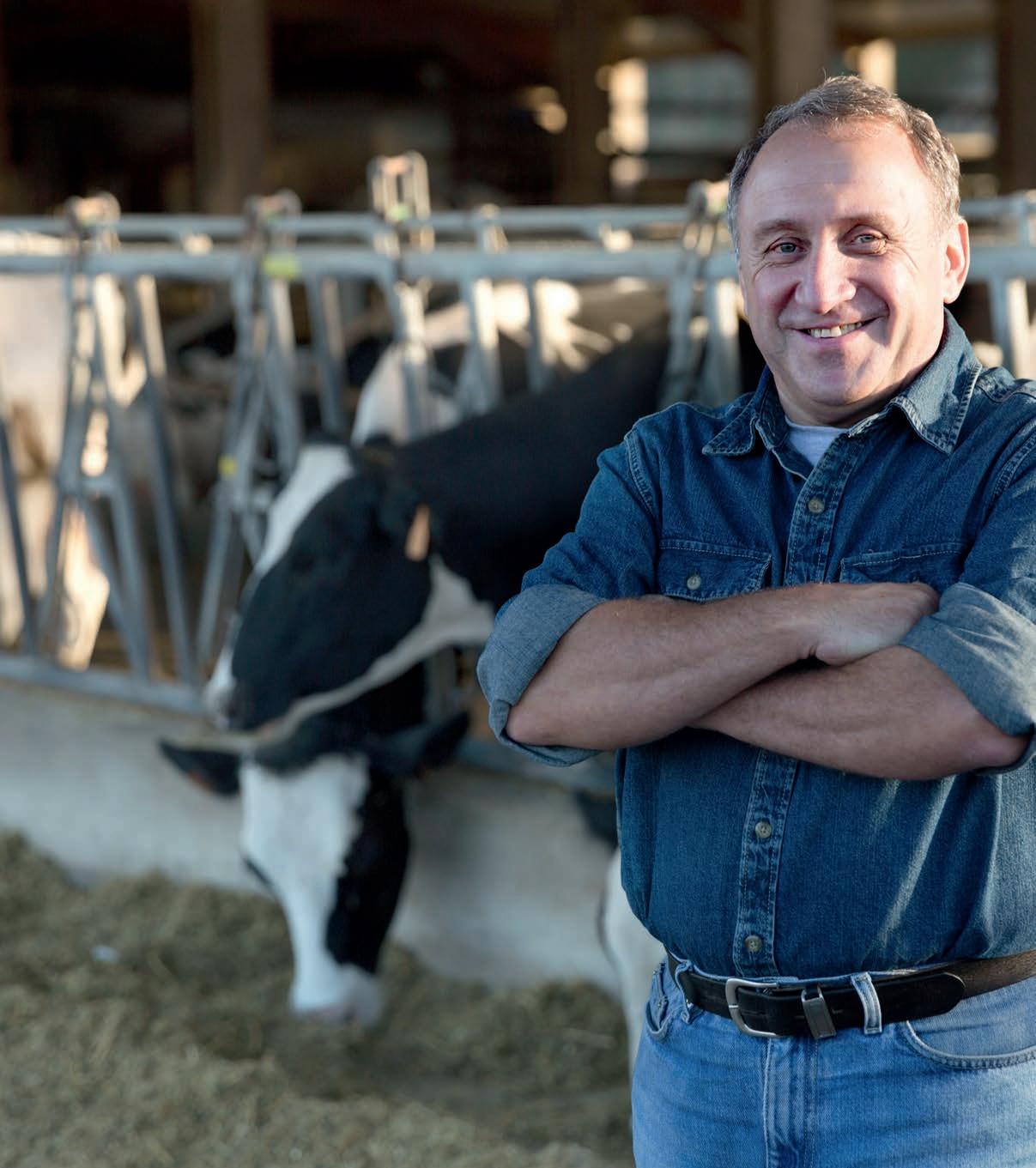

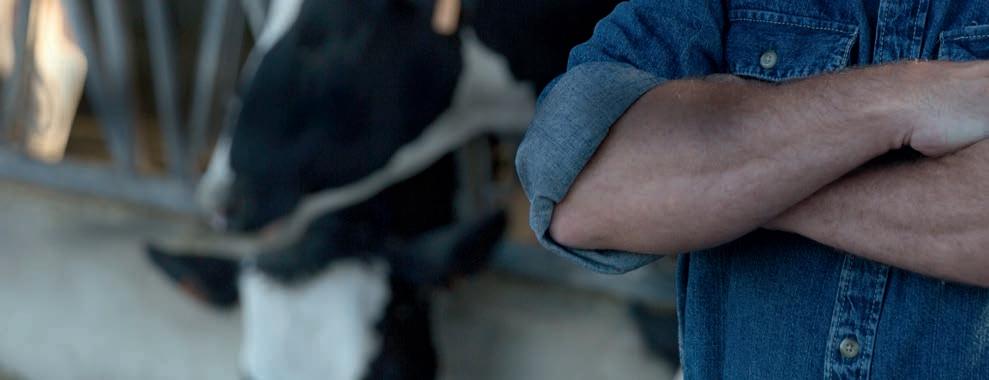
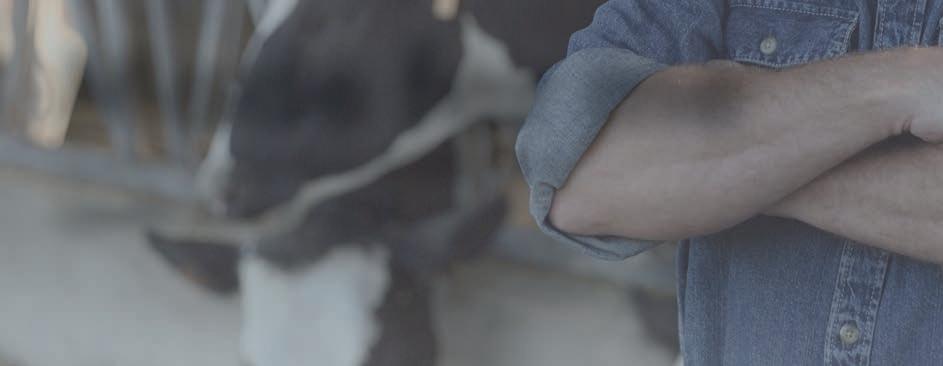


● Cost should be factored in when buying
A COMMON misconception is that quarantine is just about protecting bought-in sheep, but sheep consultant Nerys Wright says this is not always the case.
She explains: “Quarantine is also about protecting the sheep already onfarm as well as those arriving, because you are introducing another disease profile onto your farm. The incoming sheep may not be dirty, but different.”
Mrs Wright says quarantine offers the ‘one chance’ to protect existing sheep and keep out new diseases or parasites.
“It is a cost, but we should factor this into what we pay for sheep. Shearlings have been going for as much as £270, so if you spend £10 per head on quarantine, it is not 10% of their value.”
She adds that when you consider
Quarantining incoming sheep is crucial to protect your flock from parasites and other diseases. Farmers Guardian speaks to sheep consultant Nerys Wright to find out more.
the consequences of a disease outbreak, quarantine protocols make even more financial sense.
“Each farm has its own anthelmint-
WHERE possible, it is best to speak to the seller to find out what vaccines they have administered and understand what disease outbreaks the sheep have had in the past.
Mrs Wright says if this information is unknown, it is generally safest to assume sheep have not had any vaccines and start the programme again. This should be discussed with your vet to understand how best to deliver vaccines effectively.
Upon arrival, sheep should be transferred to a shed or hard standing for the first 48 hours.
“This gives you time to properly
inspect the animals and administer treatments,” says Mrs Wright.
She advises farmers to adopt a ‘belts and braces’ approach and treat all incoming sheep with group 4-AD (orange) wormer, and group 5-SI (purple) wormer sequentially to reduce the chances of resistant worms surviving treatment.
“You should always have an idea of how much they weigh and dose to the heaviest, unless you have a big weight range. In this scenario, split them,” she says.
“To allow any worm eggs to pass,
ic profile and if you adhere to best management practices, it tends to stay relatively unchanged. What will change that balance is bringing stock in.”
it is crucial to keep sheep housed or on hard standing for two days.”
After 48 hours, stock should be turned out onto dirty pasture that has already been grazed by sheep this season. While unlikely, this means if any worms do survive treatment, they will be diluted by other worms already present on the farm.
Stock should not be mixed with other groups for a minimum of four weeks, ideally for as long as possible, she adds.
“If you are buying ewe lambs, I would try to keep them separate until after they have lambed.”

New sheep, as well as those that have been grazing away, should be quarantined in case they have contracted any health issues.
If you are buying ewe lambs, I would try to keep them separate until after they have lambed NERYS WRIGHT
WHEN it comes to scab, Mrs Wright advises finding out where the sheep are coming from and how prevalent scab is in that area. If the risk of incoming sheep having scab is high, farmers can incorporate a treatment alongside their worming protocol.
‘Gold
She says the ‘gold standard’ to avoid unnecessary treatment is to work with your vet to ELISA blood test a proportion of the incoming sheep two weeks after arrival.
“This will tell you if they have been exposed to scab. If they have not, you have not wasted a treatment, and you know your risk is negligible.”

When you consider the consequences of a disease outbreak, quarantine protocols make even more financial sense, says Nerys Wright.
If they have a raised ELISA result, she advises talking to your vet about treatment options.
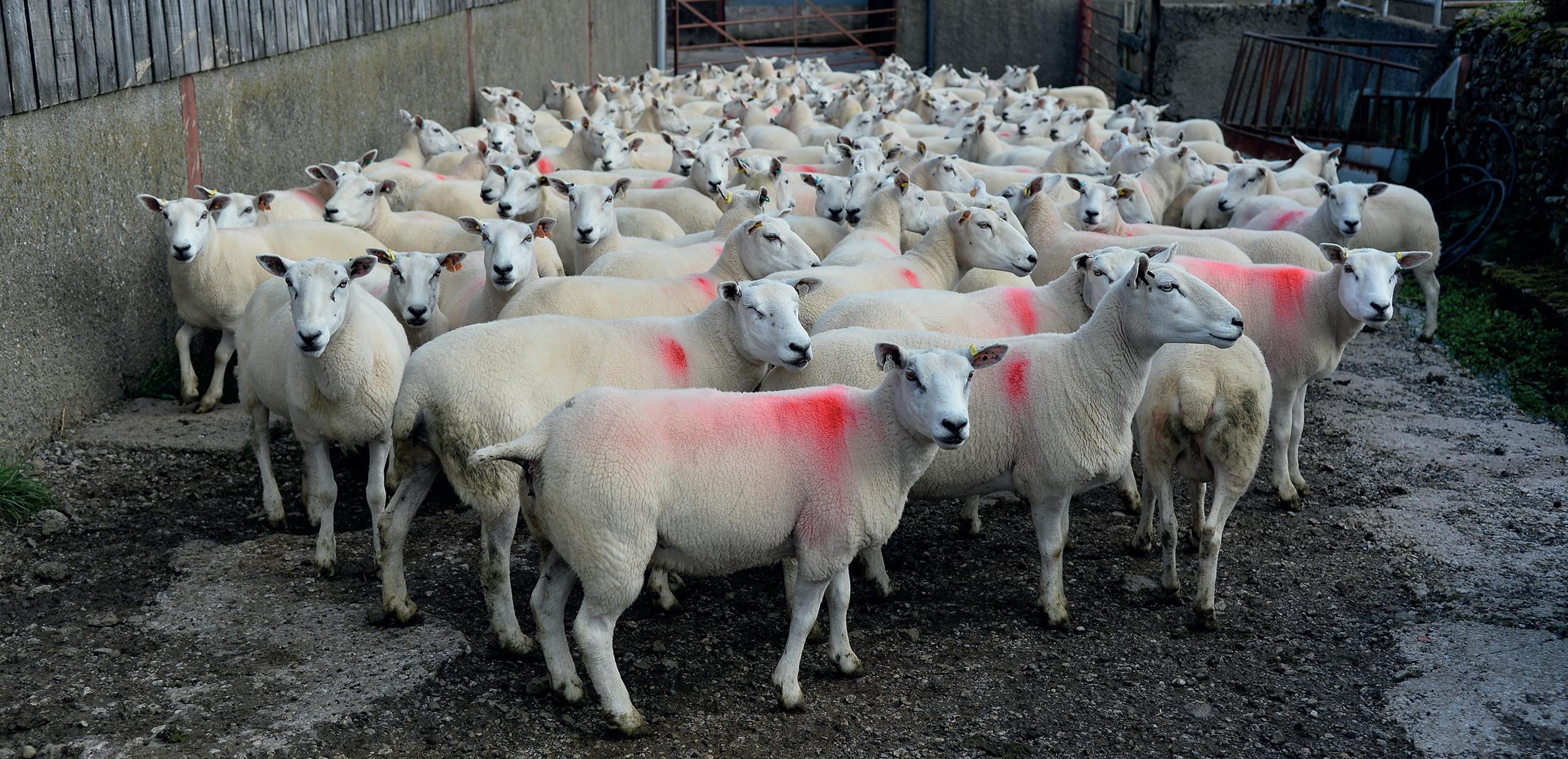
Upon arrival, sheep should be transferred to a shed or hard standing for the first 48 hours.
ON arrival, sheep can be given flukicide alongside the wormer, if fluke is likely to be a high risk.
A blood test for liver fluke can be carried out, but these only indicate exposure in a sheep’s lifetime rather than its recent past, which is not helpful unless they are ewe lambs, Mrs Wright says.
“Triclabendazole kills fluke from two days old up to adults. However, there are known cases of resistance, therefore fluke faecal egg count monitoring could be carried out to assess product efficacy. Work with your vet to choose an appropriate treatment,” she adds.
THE final area to consider in a quarantine plan is lameness.
Observe sheep and catch anything that is lame as soon as possible to diagnose the cause, Mrs Wright says.
“Most flocks have footrot or have had it, but if you bring in contagious ovine digital dermatitis (CODD) and your flock is naive, it can spread very quickly and infect a huge number of sheep,” she says.
“Footrot and CODD are very different diseases. Get a diagnosis from your vet and ask them for treatment advice.”


l

l
l





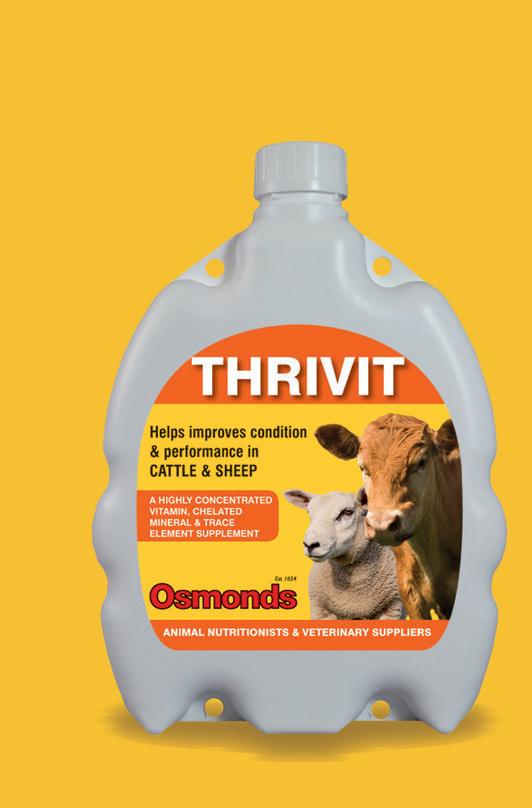








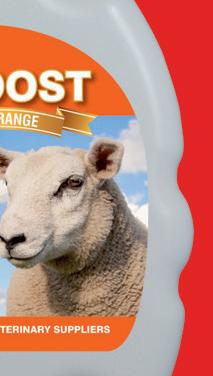








XOperating on 830 hectares (2,050 acres) across Norfolk, Jim Fletcher runs a dynamic sheep enterprise which expertly blends traditional practices with modern innovation.
His flock consists of Romney draft ewes purchased annually from Ashford market, which are mated with Highlander rams to produce cross-bred ewes.
This breeding approach allows Jim to effectively graze more than 405ha (1,000 acres) of floodplain designated for the RSPB and Wildfowl and Wetlands Trust, where the sheep thrive as they are bred for the job.
Each year, Jim lambs 900 home-bred Highlander cross Romney ewes in open yards, producing terminal lambs which are sold through Melton Mowbray market or a local marketing group, AQM, to Dunbia.
The remaining ewes, comprising Romney and Romney cross Highlander shearlings, are lambed outdoors to provide replacements for the flock.
The family-run business includes Jim, his wife Sue, and their sons
Jack and Joshua, alongside local shepherdess Nell.
Jack, a recent Reaseheath College graduate, has gained invaluable experience in New Zealand and is now expanding his shearing business.
Joshua has worked on local arable farms and is directly involved in implementing innovative practices, such as direct drilling clovers and herbs into the pasture.
Jim’s commitment to sustainability is evident in his entry into a Mid-Tier Stewardship scheme, which aims to improve flock health and boost biodiversity.
The recent purchase of an Aitchison three-metre drill, through the Farming Equipment and Technology Fund grant, will enhance productivity by establishing cover crops for grazing and offering drilling services to neighbouring landowners.
With the use of AgriWebb software for efficient recordkeeping, Jim is poised for continued success while ensuring the welfare of both his sheep and the environment.




Sponsored by
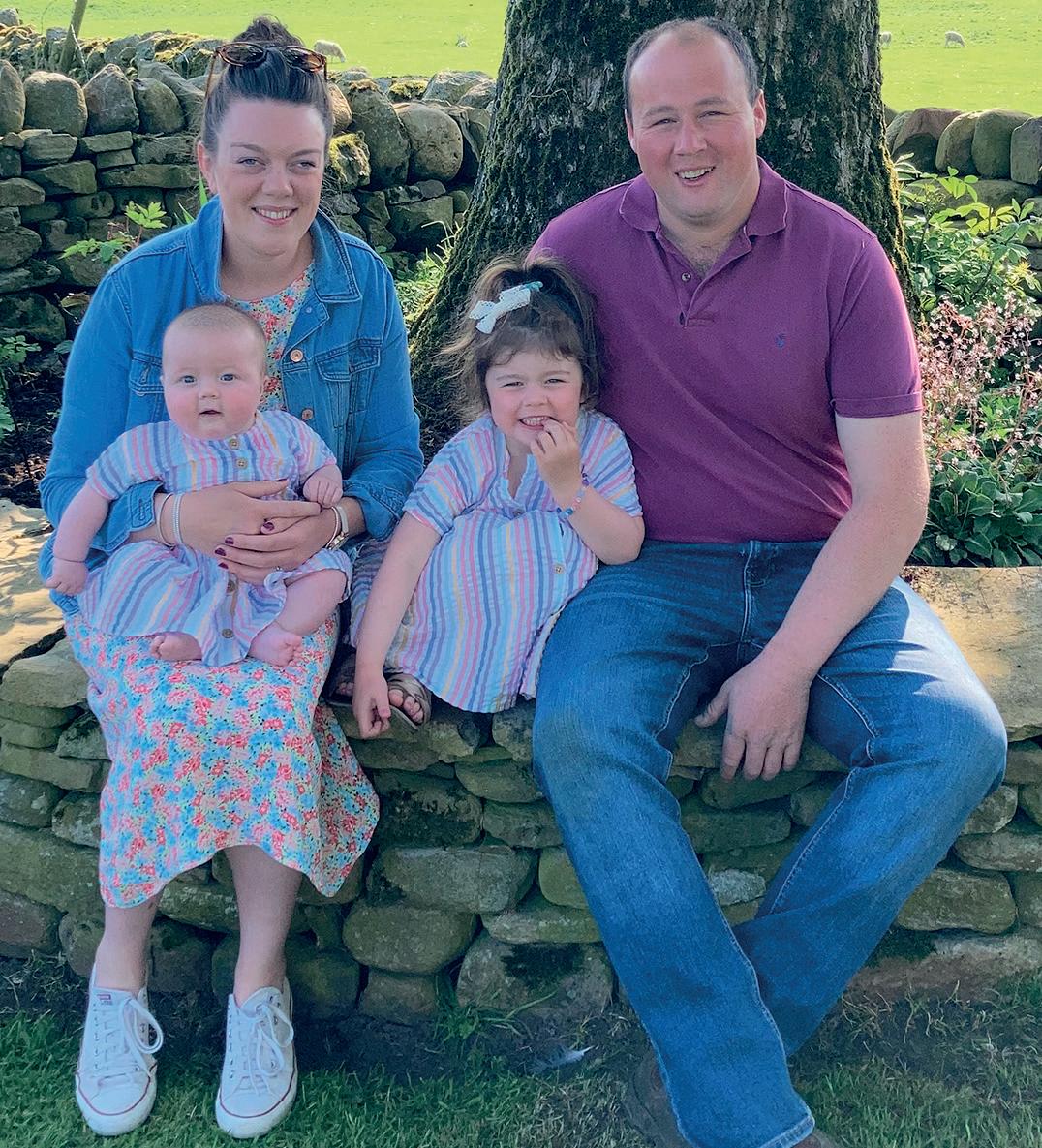
XAt Aimshaugh, Oliver Harrison manages an upland sheep unit comprising 600 North Country Hill Cheviots and 600 Cheviot cross ewes, utilising a mob grazing system to enhance productivity and promote biodiversity across 850 hectares (2,100 acres).
Oliver and his family have adapted their farming practices to suit the unique conditions of their land, focusing on sustainability.
Transitioning to a paddock grazing system has allowed Oliver to improve grass quality while encouraging wildlife to flourish on the farm.
This method not only benefits the sheep but also contributes positively to the surrounding ecosystem.
As they tackle labour shortages, the Harrison family is actively seeking new team members to help



support their growing operation. In addition to sheep farming, Oliver has introduced cattle to manage vegetation effectively on the hills.
This multifaceted approach to land management reflects his commitment to creating a balanced agricultural ecosystem which benefits both livestock and wildlife.
As they fine-tune their practices, the Harrison family is poised to embrace future opportunities that promote sustainability and farm profitability.
Their focus on innovative grazing methods and environmental consideration ensures Aimshaugh remains a model for sustainable sheep farming, contributing to both economic viability and ecological balance.
To celebrate with the finalists at the British Farming Awards, go to britishfarmingawards.co.uk to buy your tickets
For the full shortlist, scan the QR code or go to agrc.im/finalists-2024
X At Glendinning Farms, Lorraine Luescher manages 2,200 hectares (5,436 acres) of hill ground in the southern uplands of Scotland, where she has revitalised the traditional practice of hefting sheep.
This time-honoured grazing method relies on the sheep’s natural homing instincts, allowing them to return to their native ground.
Lorraine combines this extensive system with modern animal husbandry practices to create a sustainable farming solution which benefits local biodiversity and landscape health.
Her flock consists of five age groups, with all replacement females sourced from resilient home-bred ewes.
This deliberate breeding strategy ensures strong genetics and immunity to local challenges. Lorraine employs three dedicated shepherds, all skilled stockmen who play a vital role in maintaining the health and welfare of the sheep.
Recent years have seen
Lorraine focus on improving flock health through a combination of veterinary expertise and preventive measures to tackle diseases while ensuring optimal nutrition.
Her commitment to the ‘five freedoms of animal welfare’ enhances sheep productivity and fosters a loyal customer base which values the quality lambs produced.
Navigating challenges such as political recognition of hill farming, climate change and land use changes, Lorraine advocates for the hill sheep sector’s essential role in food security and biodiversity.
She actively works to educate others about the numerous public goods provided by well-managed hill livestock farming and seeks recognition in the hill farming community.
Additionally, Lorraine’s commitment to sustainable practices, including no artificial fertilisers due to natural fertilisation through sheep manure, further reduces her carbon footprint while supporting a healthy ecosystem.



XDunkenshaw Farm, run by Chris Pye and his family, spans 750 hectares (1,853 acres) and is home to a flock of 30 pure Bluefaced Leicester and 900 Swaledale ewes.
Most of the Swaledales are put to mainly home-bred Blueface Leicester rams to produce North of England Mule lambs, with 250 bred pure to produce replacements.
Their livestock is showcased at agricultural shows throughout the region, enhancing their reputation in the industry.
To ensure continued progress, the Pye family focuses on selecting tups with desirable characteristics, aiming to improve their stock quality and increase market demand.
Their participation in local shows acts as a marketing tool, allowing them to showcase their livestock and engage with previous buyers.
In an effort to diversify income streams, Chris and his family have
launched a mobile dipping service, providing valuable support to their farm during challenging times.
This innovative venture not only bolsters finances, but also secures connections with potential buyers and builds relationships which benefit their sheep sales.
Facing challenges such as rising costs and competition from imports, the Pye family remains committed to sustainable practices through effective animal health management. They strive to improve their farming methods while maintaining profitability, with the mobile dipping service serving as a vital asset for growth.
Chris’ proactive approach ensures that Dunkenshaw Farm remains competitive and well-regarded in the sheep industry, while their commitment to improving livestock quality and sustainability paves the way for future success.
Upland sheep and beef farmers in Wales are tweaking long-term grass mixtures in different ways to maximise their grass growth and utilisation. Sara Gregson visited two producers to see how they are going about this.




ALED Jones and his brother Dylan farm with their father Emyr at Fferm Rhiwaedog, Bala.
The family’s 142ha (347-acre) upland farm, which they have owned since 1962, rises to 304 metres (997ft), with areas that are steep and rocky with shallow soils.
Over the years they have improved every corner of the farm by draining, ploughing, liming and reseeding.
The winters are wet, receiving between 2,000-2540mm (80-100 inches) of rainfall.
Until this year, the family has also rented a further 121ha (296 acres) on a nearby holding, which rises to 426m (1,400ft).
The cattle herd consists of 70 Welsh Black suckler cows, with half sired to Charolais and half mated with Welsh Black stock bulls. A Limousin bull is used for the heifers.
Cows calve from March to May.
The Charolais offspring are sold as 11 to 12-month-old strong stores and the Welsh Black progeny not retained for breeding are sold at 18 months of age at Dolgellau market.
All cattle are housed in November, with the Charolais stores weaned beforehand. They are fed on round bales of grass silage and all youngstock are also fed bought-in cereals.
The 800 ewes are a mixture of Texel cross Mules and Aberfields and Welsh
ewes. The 400 Welsh ewes lamb outdoors in April, while the rest lamb inside from the end of February.
Scanning averages 170%, with the aim of selling at least 1.5 to 1.6 lambs per ewe.
All the lambs are sold fat through live markets, apart from the Mule ewe lambs which are either kept or sold for breeding. Aled aims to sell as many lambs as early as possible, to be able to shut up more fields for silage.
The Jones family are always striving to improve their grassland – and were recognised as being excellent grassland managers when they won the British Grassland Society Grassland Farmer of the Year Award in 2008. They also work with Osian Rhys Jones of Oliver Seeds
when making their reseeding decisions.
“We are always looking for mixtures that suit our particular upland needs,” says Aled.
“Grass can be slow to get going here and the cattle are usually indoors until May. But we need grass in March and April to turn the ewes and lambs out on to. We also need something that we can harvest at least once, that will give a good quantity of high-quality forage.
“We apply slow-acting fertiliser in the spring and this has been a game-changer.
“I hate seeing grasses heading in pasture or silage crops, because feeding quality is being lost every day after that. The fertiliser creates consistent, steady grass growth.


Celt and white clover germinate at the same time as the arable silage, says beef and sheep farmer Aled Jones.
“This allows us to also take silage, finish lambs on the aftermath and flush ewes on it in autumn.”
Over the past five years, Aled has tried introducing herbal leys, but is not convinced as to their merits on his farm.
The herbs, apart from the yarrow, often failed to materialise and even the chicory and plantain disappeared and with that came a resurgence of docks.
“Herbal leys are fine for fattening lambs or flushing ewes,” says Aled.
“But they are too slow to get started in the spring and have to be shut up all winter. This farm is heavily stocked and needs to carry sheep over winter.
“I much prefer a tried and tested persistent perennial ryegrass/Timothy mixture such as Celt, which we have been using for five years. A lot of our ground is steep and rocky and we do not want to be reseeding that often.
“It produces a classic dual-purpose, late-heading sward – good for grazing and silage. This summer, which has been tricky weather-wise, we were making 10 bales/acre of good quality forage.
“Now we are drilling Celt with some additional extras – some fields with red clover added, and others with chicory and plantain. This grows well in March for ewes and lambs, shuts up and gives us good quality silage, and the lambs fatten well on the aftermath. It is just what we want for our situation.”
THE Roberts family has been farming at Y Gyrn, Llanuwchllyn, near Bala, since 1962, a 163-hectare (400-acre) all-grass farm on the south side of Llyn Tegid.
The land rises from 182 metres (600ft) up to 457 metres (1,500ft), with most of the farm at 300 metres (1,000ft).
Annual average rainfall is more than 2,540mm (100 inches). Soils range from peat at the top, down to free-draining medium loam on the lower slopes.
Huw Roberts now runs a flock of 750 Welsh mountain ewes with 200 replacements, with 400 bred to Welsh Mountain rams and the rest mated with a Suffolk. They all live outside all year.
The ewes lamb from March 20. Scanning averages are at 150% and the first lambs are drawn at the beginning of June and sold through Bala market, weighing 32 to 33kg liveweight. They will continue to be sold until December. Around 20 hardy Welsh Mountain rams are sold annually. There are also 50, mainly autumn-calving pedigree Welsh Black cows. Half are mated by a Welsh Black; the other half are served by AI to Charolais bulls. The cattle are housed from October to





the first week of May. Youngstock are sold at Dolgellau at 14 months of age. Last year, some of the Charolais cross steers fetched £1,600/animal.
“We need a decent flush of fresh grass in March and April when we are lambing,” says Mr Roberts.
“We switched to growing a mix of intermediate and late heading perennial ryegrasses with a dualpurpose blend of clovers called Celt from Oliver Seeds, working with Osian Rhys Jones.
“This was after he re-formulated the mixture to make it more winter hardy and to boost growth later in the spring. Additional Timothy –now up to 10% of the mix, makes it eminently suitable for our heavier soils and higher altitudes.
“The re-seeds are rested over winter and grass growth now really gets going in March. This year it was very wet, but not cold –but the grass grew and the ewes had more than enough milk.
“We applied 75kg of nitrogen in two dressings of slow-release fertiliser at the end of March and April.”
While primarily a grazing mixture, Celt can also provide a good cut of high-quality hay or silage.
This June, Mr Roberts cut 33 hectares (80 acres) in its second year, with some fields also containing red clover.
This produced 27 bales per hectare (11 bales/acre). The bales analysed out at 10.5 to 11
metabolisable energy (ME) and were wrapped in the field. They will be fed to the cattle this winter.
Some 6ha (15 acres) of the farm are reseeded every year and for the past two years arable silage of oats, barley and peas has been put in.
This was drilled under the Welsh Government’s Growing for the Environment (GFE) Scheme, Option 8: Unsprayed cereal and protein crop (50:50) undersown with a mixed ley.
“If the fields are very weedy with creeping bent and other weeds, we will spray the sward off and plough, taking care not to plough too deep.
“We then disc and harrow, before applying lime and fertiliser,” Mr Roberts explains.
“Then we broadcast the seed, give it a light harrow and flat roll it. We have to watch out for heavy rain on our sloping ground, as we have had seed washed right out of the field before now.
“The arable silage was cut at the end of August, providing nutritious winter feed for the cattle, leaving the mixed ley growing well underneath.
“This spreads the establishment costs between one annual and one perennial forage crop.”
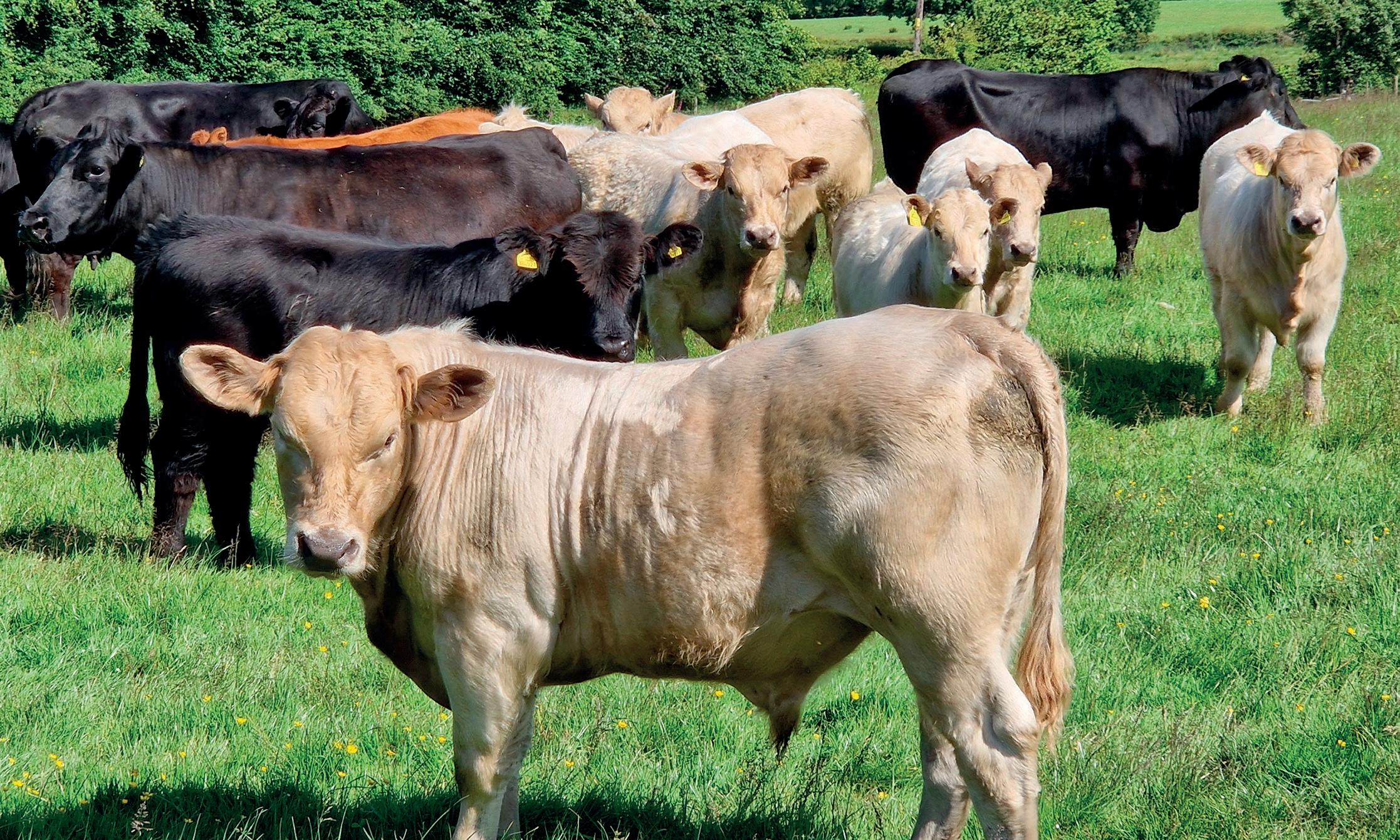
The
Grass growth Soil moisture (cb)
Soil temperature (degC) Rainfall (mm per week)

Region Seven-day forecast 14-day forecast
North England 30.6kg DM/ha (12.4kg DM/acre) 28.3kg DM/ha (11.5kg DM/acre)
South England 52.2kg DM/ha (21.1kg DM/acre) 38.6kg DM/ha (15.6kg DM/acre)
Scotland 43.4kg DM/ha (17.6kg DM/acre) 34kg DM/ha (13.8kg DM/acre)
Wales 55.4kg DM/ha (22.4kg DM/acre) 44.2kg DM/ha (17.9kg DM/acre)
■ Grass growth is below the five-year seasonal average and is considerably lower than this time last year, due to lower air temperatures, lack of sunshine and shorter daylength
■ Grass DM% has also dropped which adds to the challenge of achieving target intakes, for milk production and daily liveweight gain
■ With predicted growth of only 30–40
DM/ha (12.4-16.1kg DM/acre) over the next seven to 14 days, check for any fall in average farm cover; be prepared to adjust meal feeding or remove stock selectively
■ For non-grazing outlying areas, there is still opportunity for late silage harvests and to carry out weed control on fields earmarked for overseeding in spring/early summer
GrassCheckGB is a collaboration between The UK Agri-Tech Centre, Agri-Food and Biosciences Institute, Rothamsted Research, AHDB, Hybu Cig Cymru, Germinal, Handley Enterprises, Sciantec Analytical, Yara, Pilgrim’s UK and Quality Meat Scotland. Regular updates will appear in Farmers Guardian.
































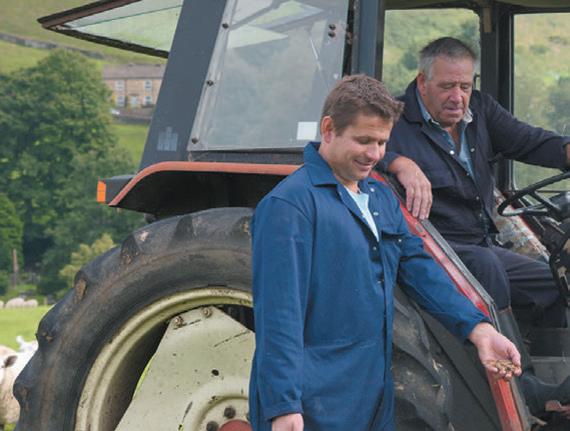














l Charollais clinches inter-breed
THE Limousin heifer, Brockhurst Tranquility, owned by W.J. and M. Mash, Chesham, and shown by Jimmy McMillan, first claimed the continental championship before going on to take the supreme beef title at Bucks County Show.
The March 2022-born daughter of Procters Mitsubishi, which is in-calf to Brockhurst Precision, has been inter-breed champion at Herts County, reserve inter-breed at Edenbridge and Oxted and reserve breed champion at the Royal Highland Show this season.
The judge, David Sapsed, Hertfordshire, said his champion was a superb female with excellent locomotion and top line which oozed style.
Standing reserve was the reserve continental champion, the two-yearold Charolais heifer, Overhill Toya by Blelack Digger, from S.C. and G.L. Hartwright, Abingdon, which had been bought from Carlisle in spring as a foundation female for their new herd.
The native championship went to P.J.R. and L.R. Vincent, Diss, with the home-bred in-calf heifer, Pulham 1 Olive 7, a September 2022-born daughter of Appel 1 Kaboom.
A strong commercial section was headed by the heifer champion, 16-month-old 590kg Troy, a British Blue cross Limousin from James and
Beef
Inter-breed (Judge, D. Sapsed, Hertfordshire) Supreme and sup. continental, W.J. and M. Mash, Brockhurst Tranquility (Limousin); reserve and res. continental, S.C. and G.L. Hartwright, Overhill Toya; native, P.R.J. and L.R. Vincent, Pulham 1 Olive 7 (Hereford); res. native, B. and J. Sutton, Melbourne Park Kiggle (Longhorn).
Aberdeen-Angus (T. Ives, Buckinghamshire) Glympton Farms, Glympton Perseus X385; res., A.E. and C. Bishop, Warrenho Fortune. Charolais (R. Lawrence, Warwickshire) Sup., S.C. and G.L. Hartwright, Overhill Toya; P.M. and S.M. Donger, Seawell Plenty. Hereford (H. Slyk Soe, Denmark) Sup. and fem., P.R.J. and L.R. Vincent, Pulham 1 Olive 7; res. and male, P.R.J. and L.R. Vincent, Pulham 1 Achilles; res. fem., J.
Will Ludgate, Leighton Buzzard, which was bought at Barnard Castle market earlier in the year and has been commercial champion at Edenbridge and Oxted and Herts County and reserve at Lincolnshire Show.
With several local exhibitors under bovine TB restrictions, a small dairy section was headed by the Holstein champion, Eggingson E Kingsley Charm, a third calver by Goldfish Charm, currently producing 46.6kg daily from G.B. Sears and Son, Eggington. They also took the reserve title with the heifer, Eggingson E Sound System Tanya.
The judge, Andrew Reader, Northamptonshire, said his champion was a strong powerful cow which was balanced throughout and oozed milk.
In the sheep rings the inter-breed championship went to Jennifer Curtis, Evesham, with a home-bred threeyear-old Charollais ewe from her Elmwick flock which was being shown for the second time, having been champion at Tenbury Wells Show earlier this year. It has bred very well for the flock, with its ram lamb from this year being retained as a stock ram.
In reserve was Eleanor Barlow, Aylesbury, with her home-bred twoyear-old North Country Cheviot ewe, Hulcott Daphne.
The inter-breed group of three went to Matthew and Gordon Sparke, Skewley, with the home-bred trio of two shearling ewes and a ram lamb.
Ludgate, Rempstone 1 Lily N684; res. male, J. Ludgate, Rempstone 1 Alpha N688. Highland (J. Ayres, Norfolk) Sup., Yarchester Fold, Urshula 6 Faith of Yarchester; res., Sunnyside Rare Breeds, Izzy of Harris. Limousin (R. Lawrence) Sup., W.J. and M. Mash, Brockhurst Tranquility; res., M. and S. Potter, Hannem UFO.
Any other native breed (J. Claridge, Buckinghamshire) Sup., B. and J. Sutton, Melbourne Park Kiggle (Longhorn); res., G.H. Wollatt; Gupworthy Wiseman (Longhorn). Any other continental breed (R. Lawrence) Sup., D.M. Seels, Solway View Spice (British Blue); res., J. Jack, Hooton Orchid (British Blue). Commercial (M. Parrott, Buckinghamshire) Sup. and fem., J. and W. Ludgate, Thor ; res. and res. fem., G.R. Fountaine and Son, Sassy Girl ; male, N. Lloyd, Ralph Lauren ; res., male, J. and W. Ludgate, Bang On.



Inter-breed (A. Reader, Northamptonshire) Sup., G.B. Sears and Sons, Eggington E Kingsley Charm (Holstein); res., G.B. Sears and Sons, Eggington E Sound System Tanya (Holstein). Holstein (A. Reader) G.B. Sears and Sons, Eggington E Kingsley Charm; res., G.B. Sears and Sons, Eggington E Sound System Tanya.
Inter-breed (P. Chilman, Powys) Sup., J. Curtis (Charollais); res., E. Barlow (North Country Cheviot).
Charollais (P. Amphlett, Powys) Sup. and res., J. Curtis. Southdown and coloured down (A. Lambert, West Sussex) Sup. and res., G. and M. Sparke.
Inter-breed sheep and Charollais champion, a home-bred three-yearold ewe, from Jennifer Curtis, Evesham.
Wiltshire Horn (R. Roberts, Anglesey) Sup., N. and C. Williams; res., J. Jeyes. Primitive breeds (C. Muddiman, Northamptonshire) Sup., S. Ping; res., C. McLurg. MV-accredited pure native breeds (J. Chilman, Powys) Sup. and res., S. Manners and J. Dilibero (Hampshire Down).
MV-accredited pure continental breeds (D. Bunting, Hertfordshire) Sup., J. Robb; res., G. Crabtree. Rare native breed (D. Stanhope, Shropshire) Sup., W. Whybrow; res., C. Sander. Non-MV-accredited other native breeds (T. Lugsden, Suffolk) Sup. and res., E. Barlow (North Country Cheviot). Non-MV-accredited continental breeds (D. Burton, Rutland) Sup., J. Jack (Beltex); res., A.J. Smith Farming. Cross breeds (T. Lugsden) E. Bramham; res., L. Stimson.

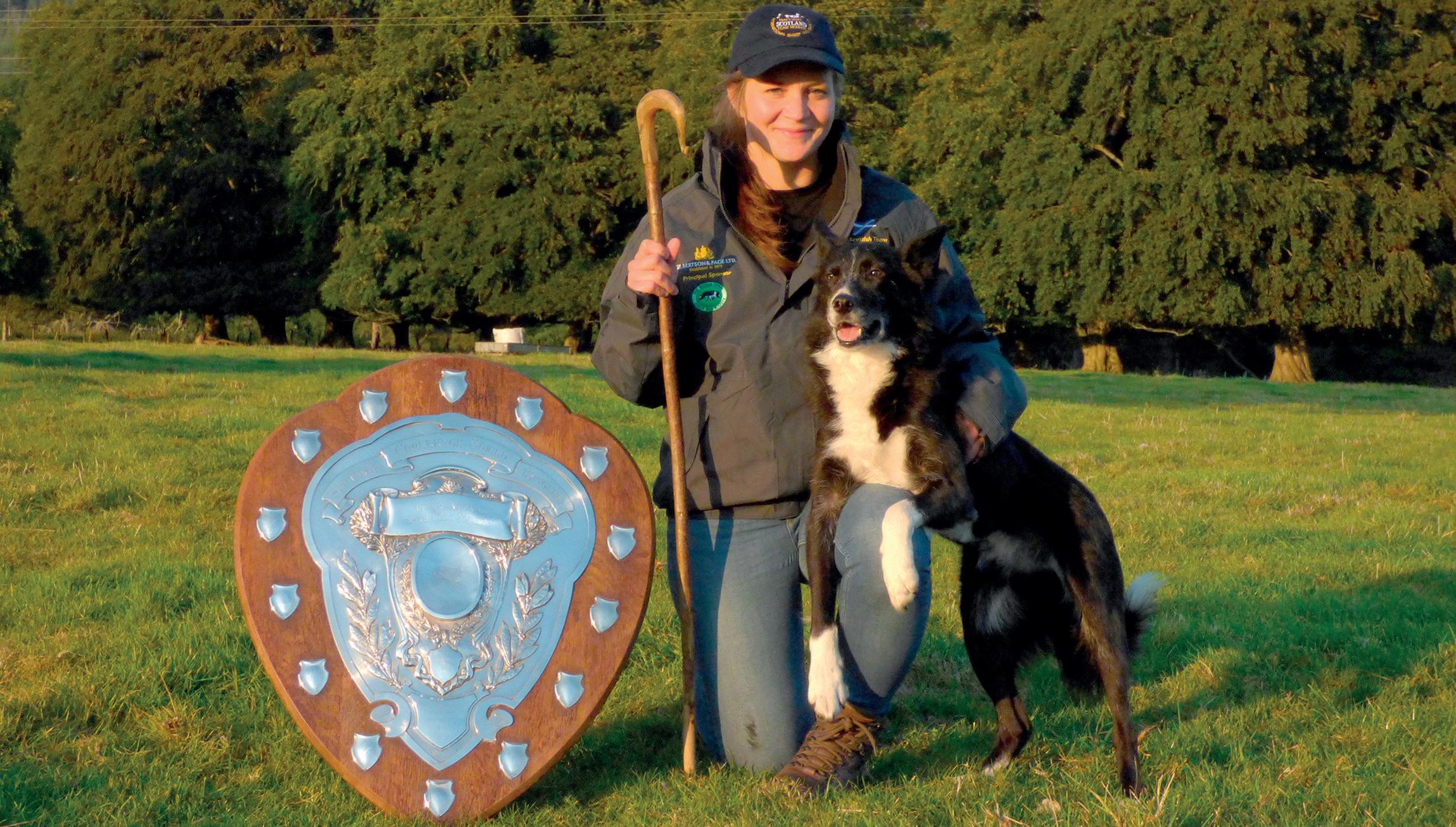
Elinore Nilsson with Midderry Kid, who won both the individual and brace championships at the Scottish National trial.

● Blackface ewes made sti challenge
Scotland: Sine Robertson
SWEDISH-born Elinore Nilsson, along with her dogs Midderry Kid and Avon Jacob, triumphed at the
Scottish National trial at Farr Estate, outside Inverness, winning both the brace and individual championships.
Ms Nilsson said: “Kid is my right hand. I trust him. This is his fourth time in the team.”
The trial was challenging in the extreme, with Blackface ewes stick-
ing together in the shedding ring, denying handlers the opportunity to separate the packet of three plain and two red-collared, sheep.
Kid, progeny of R.J. Hutchinson’s Sweep and L. Magnusson’s Kate, ran out and lifted his sheep faultlessly, although they had strayed from the post, and had
“I am delighted to have this opportunity to sponsor the Working Dogs pages in Farmers Guardian for 2024. Wishing all triallists the very best of luck.”
Christopher Ware Managing director
at Gilbertson & Page,
manufacturer
of Dr. John’s foods for dogs.

them on line for the fetch gate, until they saw the obstacle and diverted course to avoid it. It was the only weakness in the run; Kid drove them smoothly around the course and excelled in the close work, where he only lost five out of 60 points – a testament to his skill, especially considering











that many other competent and experienced handlers and their dogs failed to complete the job.
Ms Nilsson and Kid came to the individual class with the brace title under their belt, achieved with kennel mate Avon Jacob, a son of A.P. Gallagher’s Cain and A. Warmington’s Kim joining the team.
Ian Wilkie, one of two brace judges, said: “Eli was way ahead of the rest. Her dogs worked as a team and she kept them balancing the work between them.”
The singles course was set on an open field, with a slight rise and gentle undulations that caused no real problems.
However, the cross drive was hard to judge and seemed to be best approached from a line that looked high, but seemed to guide the Scotch Blackface and Swaledales through the gate at an angle of 45 degrees. The ewes stayed together
For winning results

SOUTH WALES SHEEPDOG OPEN AND BRACE, Qualifying Field 1 (Judge, Llyr Evans) 1, E. Morgan, Lil, 20; 2, L. Harries, Preseli Jock, 22; 3, K. Evans, Brynmoel Jet, 26 OLF; 4, A. Sharpe, Sid, 26; 5, L. Williams, Efail Mick, 29; 6, D. Rees, Bet, 30; 7, K. Broad, Kinloch Ciaran, 32 OLF; 8, A. Driscoll, Kinloch Taz, 32. Qualifying Field 2 (J. Lewis) 1, K. Evans, Preseli Ci, 3; 2, D. Howells, Wyverne May, 12; 3, E. Morgan, Fly,13 ; 4, L. Harries, Teifi Taf, 14; 5, B. Lester, Nantcelyn Jet, 15 OLF; 6, A. Driscoll , Kinloch Sweep ,15; 7, D. Jenkins, Clwyd Bob, 16 OLF; 8, J. Howells, Millie, 16. Final. (L. Evans and J. Lewis) 1, K. Evans, Brynmoel Jet, 18; 2, D. Jenkins, Clwyd Bob, 20; 3, A. Driscoll, Kinloch Sweep, 37; 4, E. Morgan, Lil, 49; 5, D. Rees, Bet, 50; 6, B. Charles Lester, Nantcelyn Jet, 52. Best Outwork. 1, A. Driscoll, Kinloch Sweep, 10; 2, A. Driscoll, Kinloch Taz, 10. Best Driving. 1, K. Evans, Brynmoel Jet, 2; 2, L. Williams, Efail Mick, 2; 3, L. Harries, Teifi Taf, 2. Brace. 1, K. Evans, Knockmaa Bec and Hendre Sam, 22; 2, A. Driscoll, Kinloch Taz and Kinloch Carlos, 74. CILYCWM (S George) Open National. 1, B. McConnell, Mwnt Taf, 26; 2, B. McConnell, Tig, 29; 3, M. Jones, Kennox Bob, 30; 4, O. Lewis, Genog Ruby, 31 OLF; 5, H. Thomas, Jet, 31; 6, V. Davies, Pam, 32 OLF. Open South Wales. 1, M. Jones, Nan, 9; 2, M. Jones, Kennox Bob, 10; 3, K. Haker, Chloe, 12; 4, O. Bennett, Bob, 14; 5, A. Sharpe, Chiltern Bolt, 17 OLF; 6, J. Price, Holly, 17. FERWIG, Morning (S. Harden) 1, D. Jenkins, Clwyd Bob, 9; 2, M. Evans, Faenor Jock, 14; 3, D. Rees, Bet, 15; 4. L. Harries, Teifi Taf, 17; 5, C. Millichap, Mai, 18; 6, John Wheaton, Kennox Meg, 21 Afternoon (L. Harries) 1. L. Williams, Efail Mick, 8; 2, D, Jenkins, Jock, 11; 3, C. Millichap, Gelli Smudge; 4, M. Jones, Kennox Bob, 12; 5, A. Edwards, Jim, 15; 6, O. Lewis, Genog Ruby, 17. Double Fetch Final. 1, D. Jenkins, Jock, 21; 2, D. Jenkins, Clwyd Bob, 30; 3, D. Rees, Bet, 36; 4, L. Williams, Efail Mick, 46; 5, M. Evans, Faenor Jock, 53; 6, C. Millichap, Gelli Smugde, 83. LIBANUS (D. Howells) Open National. 1, R. Ellis, Pip, 5; 2, D. Millichap, Lyn, 13; 3, R. Ellis, Todd, 14 OLF; 4, R. Ellis, Preseli Sue, 14; 5, M. Evans, Faenor Jock, 17
well on the field, but tried to avoid the fetch and drive gates.
The shedding ring proved to be the critical factor, with the ewes unsettled and circling tightly.
This unpredictability resulted in them breaking out en masse, complicating the handlers’ efforts to manage them effectively.
Runner-up was Neil Mcvicar’s Mark, J.P. McGee’s Glencregg Silver and I.M. Brownlie’s Lia.
Neil’s whistle at the start of the outrun proved effective and Mark landed at his sheep, lifted cleanly and made a very good fetch.
An outstanding drive earned him the prize for the best driving dog for the second successive year.
In the ring, a collared ewe broke repeatedly, but Mark repeatedly returned her to the ring, shed off two plain sheep of three and walked the packet into the pen.
Once back in the ring, the ‘old opponent’ broke again, and Neil was ready for her voluntary effort
OLF; 6, R. Games, Neifinn Boy, 17. Novice National. 1, R. Ellis, Preseli Sue, 14; 2, C. Slater, Whiteley Ted, 21; 3, N. Matthews, Jet, 27. Open South Wales. 1. A. Jenkins, Chez, 10 OLF; 2, D. Millichap, Rose, 10; 3, M. Dubenova, Oak Mo, 16; 4, K. Haker, Chloe, 17 OLF; 5, M. Evans, Faenor Jock, 17. Novice South Wales. 1, D. Millichap, Rose, 10; 2, M. Dubenova, Oak Mo, 16; 3, K. Haker, Chloe, 17. SOUTH WALES NOVICE, 1, B. Morgan, Tom, 6; 2, B. Morgan, Bec, 13; 3, G. Gower, Kelsal, 25; 4, J. Neville, Whitegrove Storm, 26; 5, B. Howson, Grace, 27; 6, B. Laemmle, Floss, 28; 7, A. Green, Don, 37; 8, A. Green, Bet, 39; 9, C. Pugh, Jess, 48; 10, A. Potter, Fi, 50. Best Outwork. B. Laemmle, Floss. Young Handler. 1, J. Howells, Millie, 15; 2. J. Howells, Cydros Boss, 18; 3, J. Phillips, Cwmhyfryd Jet, 24; 4, G. Gower, Ben, 34; 5, G. Gower, Jim. LLANGWYRYFRON, Morning (I. Evans) 1, E. Morgan, Lil, 22; 2, E. Lloyd, Fly, 25; 3, I. Morgan, Pwtin, 25; 4, K. Broad, Kinloch Bode, 28; 5, D. Jenkins, Becca, 29; 6, J. Roberts, Jim, 30. Afternoon (E. Lloyd) 1, D. Jenkins, Meg, 13; 2, E. Hope, Trefynor Lass, 20; 3, J. Price, Cap, 23; 4, E. Morgan, Blackie, 25; 5, A. Monasterio, Baxter, 26; 6, C. Happe-Neubert, Kiwi, 29. HUNDRED HOUSE (G. Davies, 38 ran) Open. 1, E. Morgan, Blackie 15; 2, C. Millichap, Mai, 18; 3, K. Haker, Case, 19; 4, S. Harden, Newton Moss, 22; 5, M. Jones, Kennox Bob 23; 6, E. Morgan, Lil, 25. Novice. 1, S. Harden, Newton Moss, 22; 2, B. Morgan, Bec, 34; 3, S. Little, Bradley, 36; 4, T. Mallon, Valanza Taya, 38. Afternoon Session. (K. Haker, 34 ran) Open. 1, G. Davies, Blairmore Lad, 13; 2, J. Price, Tynygraig Holly, 18; 3, D. Millichap, Bedlwyn Jack, 21; 4, S. Vedeniapine, Floss, 22; 5, B. Pugh, Sweep, 23 OLF; 6, I. Jones, Erwood Ray, 23. Novice. 1, B. Watts, Dev, 27; 2, L. Bevan, Lyn, 30; 3, J. Price, Ben, 32; 4, J. Phillips, Cwmhyfryd Jet, 34. Young Handler. L. Bevan. Top Radnorshire Handler. K. Haker. GLADESTRY (B. Morgan, 72 ran) Open national. 1, R. Cure, Bet, 12; 2, M. Jones, Nan, 14; 3, K. Broad, Kinloch Ciaran, 14; 4, M. Jones, Kennox Bob, 18; 5, V. Davies, Pam, 19; 6, A. Blackmore, Zac, 19. Novice. 1, S. Currie, Glen, 23; 2, B. Lewis, Brondrefawr Fly, 26; 3, W. Jones, Maid, 27; 4, J. Phillips, Cwmhyfryd Jet, 27. Ladies, A. Blackmore. Young Handler, J. Phillips. LLANDEWI BREFI (A. Morgan) Open national. 1, P. Tomkins, Fynydd Kylo, 9 OLF; 2, J. Price, Cap, 9; 3, G. Davies, Dan, 11; 4, D. Jenkins, Clwyd Bob, 13; 5, E. Hope, Trefynor Lass, 16 OLF; 6, M. Jones, Nan 16. Novice National. 1, J. Price, Ben, 16; 2, A. Davies, Celt, 23; 3, S. Evans, Roy, 27. Open South Wales. 1, M. Jones, Mainstay Maddie, 5; 2, M. Jones, Nan, 6; 3, G. Davies, Dan, 7; 4, K. Haker, Case, 14 OLF; 5, O. Lewis, Genog Ruby, 14; 6, D. Jenkins, Becca, 15. Novice South
September 6. ST HARMON, contact Anna Prothero, tel: 07795 178 451 or anna_prothero@hotmail.com.
September 6 and 7 CWMDAUDDWR, contact Anna Prothero, tel: 07795 178 451 or anna_prothero@hotmail.com.
September 7. BETWS GARMON, LL54 4YY, 7.30am start, tel: 07771 284 112. LLANARMON, LL20 7LB, 8am start, tel: 01691 600 244. NANT PERIS, LL55 4EU, 8am start, tel: 01286 872 331. PANDY. National and South Wales style, contact Anna Prothero, tel: 07795 178 451. LLANWARNE, contact Anna Prothero, tel: 07795 178 451 or anna_prothero@hotmail.com.
September 7. CHALLACOMBE, White Field, Challacombe. 10am start, contact Brian Duke, tel: 01643 831 375, or Barbara Thomas, tel: 01598 763 502 or 07729 328 440. WOLSINGHAM, Scotch Isle Park, Durham Road, Wolsingham, Bishop Auckland, DL13 3JG. 9am start, £5 per dog, preentry to Margaret Suddes, tel: 074843 102 144. AUSTWICK NORBER, LA2 8DJ. 8.30am start, enter on the field, those with two dogs must be booked in by 12pm last booking in time is 2pm, contact Chris, tel: 07812 589 621, or Hannah, tel: 07375 057 621.
September 8. SOMERSET, Rains Batch, Charterhouse, Somerset, BA40 7XX, what3words, hovered.rejoined.mile, 9.30am start, entries on the day by 11am, £5 per dog, drive class only, limited to two dogs per handler, enquiries to somersetsheepdogs@gmail.com WHITLEY CHAPEL, Whitley Chapel, Embley, NE47 0HW, preentry only, contact P. Telfer, tel: 07759 732 363. September 8. SOMERSET SHEEPDOG TRAINING AND TRIALLING CLUB, Rains Batch, Charterhouse, Somerset, BA40 7XX, 9.30 start,
to make the single and completed the run with 174 points.
Ian Brownlie’s Lark, D. Robertson’s Joe and A. Watson’s Fen, all got off to a great start with a clean outrun and lift, but the ewes bolted down the fetch, ignoring the gates.
Wales. 1, M. Jones, Mainstay Maddie, 5; 2, A. Davies, Celt, 23; 3, J. Davies, Rex, 27. LLANAFAN FAWR (R. Price, 56 ran) Open national. 1, K. Haker, Case, 12; 2, P. Tomkins, Fynydd Kylo, 15; 3, K. Haker, Chloe, 17; 4, E. Morgan, Fly, 20; 5, E. Morgan, Blackie, 20; 5, J. Wheaton, Kennox Meg, 21. Open South Wales. 1, K. Haker, Case, 8; 2, L. Hansson, Limone, 16 OLF; 3, T. Mallon, Mylie, 16; 4, J. Price, Cap, 17; 5, K. Haker, Chloe, 19 OLF; 6, I. Jones, Erwood Ray, 19. Young Handler, G. Gower.
COME BYE AND AWAY CLUB, Open. 1, D. Howells, May, 96; 2, T. Thewissen, Fellside Finn, 89; 3. D. Howells, Cai, 86; 4, S. Currie, Glen, 85; 5, D. Howells, Pip, 84 OLF; 6, T. Thewissen, Kate, 84. Novice. 1, D. Howells, Cai, 86; 2, S. Currie, Glen, 85; 3, M. Hooper, Gyp, 69; 4, S. Currie, Jock, 67 OLF; 5, L. Howells, Storm, 67; 6, J. Price, Roy, 56. Maltese Cross. 1, M. Dowden, Bob, 83; 2, J. Price, Fig, 56; 3, M. Dowden, Nap, 44; 4, K. Ballard, Ebbe, 40. SPARRETTS, Open Driving. ( T. Griffiths, 38 ran) 1, C. Worgan, Black Jack, 89; 2, T. Hopper, Pip, 86; 3, R. Hawke, Mirk, 83; 4, R. Hawke, Flame, 82; 5, S. Greenaway, Tan, 81; 6, S. Short, Puffin, 80. Maltese cross. (E. Anstey, 18 ran) Open. 1, W. Carter, Lad, 72; 2, N. Gardener, Becca, 60; 3, L. Lock, Bear, 56. Novice. 1, J. Tucker, Tess, 65; 2, R. Hawke, Macey, 64; 3. T. Griffiths, Roy, 63; 4, T. Hopper, Sam, 46t; 5, L. Lock Rae, 34t. GREAT DRAYNES, Driving. (C. Worgan, 33 ran) 1, J. Nicholls, Lil, 82; 2, D. Heard, Taff, 81; 3, R. Hawke, Chip, 77; 4, J. Watson, Wren, 74; 5, W. Carter, Jen, 72; 6, J. Watson, Jock, 71; Brace (A. Hendy, 3 ran) 1, T. Hopper, Fern and Pip; 2, D. Survilla, Jock and Mia. Maltese cross (E. Anstey, 21 ran) Open. 1, J. Watson, Floss, 74 OLF; 2, J. Watson, Bill, 74; 3, C. Worgan, Black Jack, 71; 4, J. Watson, Ed, 68. Novice. 1, T. Griffiths, Roy, 62; 2, L. Lock, Roy, 59; 3, A. Hendy, Spike, 44. Young Handler. R. Heard. HORNBY (M. France) 1, R. Hutchinson, Jonah, 96; 2, J. Scriven, Kim, 90; 3, C. Taylor, Peggy, 89; 4, C. Townson, Sophie, 87; 5, P. Rigby, Anya, 86; 6, A. Kyme, Kim, 85. Novice. 1, P. Rigby, Anya, 86; 2, T. Carter, Brew, 70; 3, C. Happe, Kiwi, 69; 4, H. Hutchinson, Smoky, 63. DANBY SHOW, 1, R. Dugmore, Auchnafoy Fern, 84 OLF; 2, R. Galloway, Nemo, 84; 3, P. Schelhorne, Roy, 79; 4, T. Bennett, Belle, 77; 5, T. Bennett, Strike, 75; 6, J. Atkinson, Clemy, 74. Nursery. 1, S. Aconly, Hilston Rob, 81; 2, J. Atkinson, Riot, 62. EGTON SHOW, 1, P. Simpson, Frank, 83; 2, C. Mellin, Pentre Bet, 80; 3, C. Mellin, Moorlodge Ben, 79; 4, P.
what3words, hovered.rejoined.mile, judge, Julian Mills, entries on the day by 11am, £5 per dog, drive class only, limited to two dogs per handler, enquiries to somersetsheepdogs@gmail.com.
SEPTEMBER 14. HODDER VALLEY SHOW, Open, Newton in Bowland, Clitheroe, Lancashire, BB7 3AB, 9am start, first 40 dogs to enter on field, last booking in 3pm. SILVERDALE, LA5 0TN, English National 2025 fundraiser, 9am start, enter on field, contact James Burrow, tel: 07855 206 107.
September 14. TREMEER, Davidstow, PL32 9YA (off the old aerodrome), classes for open, driving, novice, entries on the field, 9.30am start, contact John Carter, tel: 07768 725 714. BOWES SHOW, signposted off A66 Bowes. 9am start, enter on the field before 2pm, two or more dogs before 12pm, contact Steven Ledger, tel: 07436 532 607. September 14 and 15. CHILTERN, Roughwood Park, Chalfont St Giles, HP8 4AA, for more details, contact Steve Stone, tel: 07504 901 411.
September 7. ATHOLL AND WEEM, Aberfeldy, between A827 and River Tay, PE15 2EX. 7.30 start. LOCKERBIE, Trailtrow Farm, Hoddom, DG11 2QL, contact Allan Common, tel: 07751 692 643. September 8. UDNY, Meikle Tillyeve, Udny, AB41 6SJ, signposted, what3words, shepherds. compiler.hope, entry £6 per dog, contact Gary Bruce, tel: 07902 656 434. GATEHOUSE OF FLEET, Boreland of Anwoth, DG7 2EJ. 8am start. Enter on field, all double dogs 11.30am. Prize for highest placed nursery dog, contact Judith, tel: 078803 826 118, or Chris, tel: 07815 457 280. September 12 to 14. INTERNATIONAL TRIALS, Syde Farm, Carmichael, Biggar, Lanarkshire, ML12 6NQ.
Once Lark took control, the drive went well, and typically, the packet was hard to split in the ring, but once shed, a clean pen followed and a difficult single came off.
Lark finished with 164 points, securing third place.
Simpson, Bill, 71; 5, T. Bennett, Strike, 69; 6, W. Young, Tizz, 68. Nursery. 1, S. Aconley, Hilston Rob, 70; 2, J. Atkinson, Riot, 63; 3, A. Grant, Pip, 32; 4, R. Cole, Pip, 31. ROMNEY MARSH, (E. Lauder, 25 ran) Open. 1, J. Bastable, Suze, 77; 2, Mark Banham, Taff, 76; 3, M. Banham, Brooke, 75; 4, H. Long, Wren, 73; 5, M. Banham, Shabden Glen, 72; 6, H. Long, Ted, 67. Novice. 1, H. Long, Wren, 73; 2, J. Marsh, Rose, 67; 3, W. Cole, Gipping Valley Lil, 54; 4, E. Anstey, Joy, 5; 5, E. Anstey, Ben, 46. Starter. (H. Long) 1, S. Cook, Jamie, 46; 2, E. Lauder, Jake, 43; 3, W. Cole, Moss. UPPER WHARFEDALE SHOW (Michael Longton) Open (56 ran) 1, E. Thornalley, Bess, 90 of 100; 2, Stephen Duckworth, Fleet, 88; 3, Shirley Duckworth, Harry, 87; 4, T. Bennett, Belle, 86; 5, G. Miller, Valmis Pik, 85; 6, C. Mellin, Pentre Bet, 84; 7, I. Ibbotson, Sal, 83 OLF; 8, T. Birkett, Mo, 83. FARNDALE (J. Turnbull) Open (16 ran) 1, R. Galloway, Nemo, 91; 2, A. Mosey, Nell, 81; 3, D. Bristow, Moss, 80; 4, C. Mellin, Moorlodge Ben, 77; 5, J. B. Murdoch, Dell, 76; 6, D. Bristow, Husthwaite Sweep, 75. Nursery (9 ran) 1, P. Broughton, Bet, 70; 2, R. Cole, Pip, 63; 3, K. Acres, Tess, 60.
SCOTISH NATIONAL (S. McCrindle, Stranraer and A. Stewart, Lockerbie, 150 ran) Open 1, E. Nilsson (Alyth) Midderry Kid, 179/220; 2, N. McVicar (Benmore) Mark, 174; 3, I. M. Brownlie (Dunbar) Lark, 164; 4, J. Ramsay (Ollaberry) Josie, 163; 5, D. Aitken (Peebles) Tweeddale Vicki, 162; 6, A. Kent (Dunoon) Lucy, 158 Outbye; 7, I. Lockhart (Dalrymple) Kemi Sia, 158; 8, M. Gallagher (Alyth) Hillrunner Bee,157; 9, M. C. Shearer (Westfield) Mirk, 156; 10, N. McVicar (Benmore) Baledmund Pete, 151 Outbye; 11, I. M. Brownlie (Dunbar) Boyd, 151; 12, E. Gray (Ardros) Banjo, 148; 13, W. J. Welsh (Sanquhar) Heyshaw Fletch, 147; 14, F. Shennan (Barr) Fred, 144 Outbye; 15, H. Mitchell (Glenfarg) Dan, 144 Outbye; Res., I. Sutherland (Strathnaver) Dan (Hielan Cap), 144; Brace (I. Wilkie, Tillypronie, S. Renwick, Lochbroom, 8 pairs ran) 1, E. Nilsson (Alyth) Avon Jacob and Midderry Kid, 212/280; 2, L. Hinnekens (Quothquan) Gum and K’eira, 177; Res, P. Martin (Glenlyon) Ivy and Tilly, 170; A. A. Armstrong Shepherds’ Cup, Warnock Trophy (First Day lead), I. M. Brownlie’s Lark. Alexander Andrew Trophy (Scottish bred animal), N. McVicar’s Mark. Drumclog Cup (Youngest Competitor) D. Macdiarmid’s Bob, Isle of Skye.







Source: LAA/MartEye














Source: LAA/MartEye
1/845.0 1/970.0 33/56.1 115/250.2
4/730.0 4/1287.5 2/30.0 3/353.3 7/285.7 4/292.5 1/120.0 9/670.0
5/491.0 -/- 13/1094.6
Source: IAAS/ScotEID



Source: LAA/MartEye
Primestock throughput, price and price change (p/kg). Week ending September 3, 2024.
IT was a mixed week in the cattle rings at auction marts across England and Wales this week.
Steers and heifers were down 8.6p/kg and 5.8p/kg to 274.2p/kg and 287.5p/kg, respectively.
Young bulls and dairy-sired cull cows both bucked the trend to increase by 3p/kg and 2p/kg to 276.2p/kg and 151p/kg.
Sheep prices were down by 7.5p/kg to 290.5p/kg.
All pig categories dropped in value this week, with porkers decreasing the most by 41.1p/kg.
As Farmers Guardian went to press on Wednesday (September 4), UK LIFFE wheat prices for November 2024 were trading at £182/tonne, up £2.05/t on the week.






N/S
Deadweight sheep prices are collected from a sample of GB abattoirs.




SOURCE: LAA/MartEye
SOURCE:
SOURCE:
*FortradingDelinkagerefamounts;19pper£1 ofDelinkagereferenceamount.**Estimates. ENGLISH DELINKAGE REF DATA: averageof 2020/21/22claims.Seller’s2023claimnotneeded. Estimatedreturn£1.20/£1refamountwithbuyer’s delinkpaymentlessthan£30,000post-transfer. SubjecttoDelinkagevalues2025-27.
BIODIVERSITY NET GAIN: English:Defra estimates£20,000-£200,000/unitexcluding VATandassociatedfees,subjecttolotsize. LasttenderJuly15,2024,nextSeptember9,2024.
NUTRIENT NEUTRALITY: Long-termsales alltypesagricmanexcludingspecialisthabitat creation.Nitrates£3,000-£4,000/unit(£18,000£206,000/ha);phosphates£50,000-£65,000/ unit(£2,000-£169,000/ha). CARBON: Woodland Carbon>£35/WCU>£25/PIU.May2023WCG reverseauctionaverage£19.76. WATER: English abstractionlicenceslessthan£3-£15/cu.m. Source: Townsend Chartered Surveyors




2.
3.
Source: AHDB
1.Thiscontractwillreceivea1.33pplguaranteedminimumpayment.2.Thiscontractwillreceivea0.50pplmemberpremiumpayment.2.Thiscontract willreceivea1.79pplTescocheesegrouppayment.3.Thiscontractwillreceivea1.00ppldirectpremiumpayment.4.Thiscontractwillreceivea0.54ppl avesustainabilitypayment.5.Thiscontractwillreceivea0.25pplactual13thpayment.Retailerpricesupplementsareincludedwhereapplicable. Supplementslistedareinadditiontolistedmilkprices.Milkpricesshownarethemonthlyandannualaveragepricethatwouldbepaidonacontract for12monthsgoingforwardifthepresentpricescheduleremainedthesame.Priceslistedaboveexcludecapitalretentions,administrationcharges, groupsubsandVATbutincludelevyandseasonalityadjustments.MilkcontractsareprovidedtoAHDBonavoluntarybasis.Allpricesshownare calculatedusingtheAHDBStandardLitre.ThisreflectstheaverageGBfarmandfromApril2024isbasedon1.5mlitres/year,4.20%butterfat,3.38% protein,160ksomaticcellcountand27kbactoscan.TherehasalsobeenaslightadjustmenttotheAHDBlevy,whichcameintoforceinApril2024.To calculatepricesspecifictoyourownmilkvisittheAHDBMilkPriceCalculator.PleasenotethatforBarbersthereisaguaranteethatshouldtheActual MilkPriceEquivalent(AMPE)-2pplmoveaheadoftheBarbers’priceJultoDec2024,Barberswillpaythisontheextralitresabovethebasevolume.





























Does your little one love farming? Our Next Generation series has got them covered.













Are you ready to become the industry’s next sheepdog star?
In this Next Generation sheepdog special, you’ll








discover top tips from a renowned triallist and hear from a young enthusiast eager to make his way in the sheepdog world.
Away! Thistellsthedogto movearoundorcircle thesheepinan anti-clockwise direction
Come-bye! moveThisistheopposite–thearoundorcircleclockwisesheepinadirection
Getback! Thismeansthedogis toocloseanditmust keepfurtheroutto givethesheep room Liedown! whatThismeansexactly mustitsays–thedog slowstop,liedown, standdownorjust still

After appearing on the well-loved TV show OneManandHisDog , Erin Fflur McNaught became known for her sheepdog skills and passion for the industry. In fact, her family farm in Wales is where the first ever sheepdog trials were held in 1873.
Here are her top dog handling tips:
Arrive early to watch others compete and familiarise yourself with the course
Training should be consistent in the runup to the competition. Ideally, a maximum of five sheep should be used in training to mimic the competition conditions
Drink plenty of water beforehand – you do not want your mouth to become dry and then be unable to command
Ensure that you have perfected your whistles – it is crucial to use the whistles when the dog is working in the distance
Enjoy the experience and remember there is always something to learn from both good and bad runs

































































































Llion Harries got Tan, his seven-year-old dog, after Tan’s owner and avid triallist Jenny Holdsworthy sadly passed away earlier this year. Llion, who is nine years old, ran his first trial at Helen Simpson’s Brondai Farm Novice Trial on Sunday, June 23 and did extremely well. His passion is usually showing his Black Welsh Mountain sheep, but he has decided to take up trialling because, he says, it is actually easier than showing sheep.
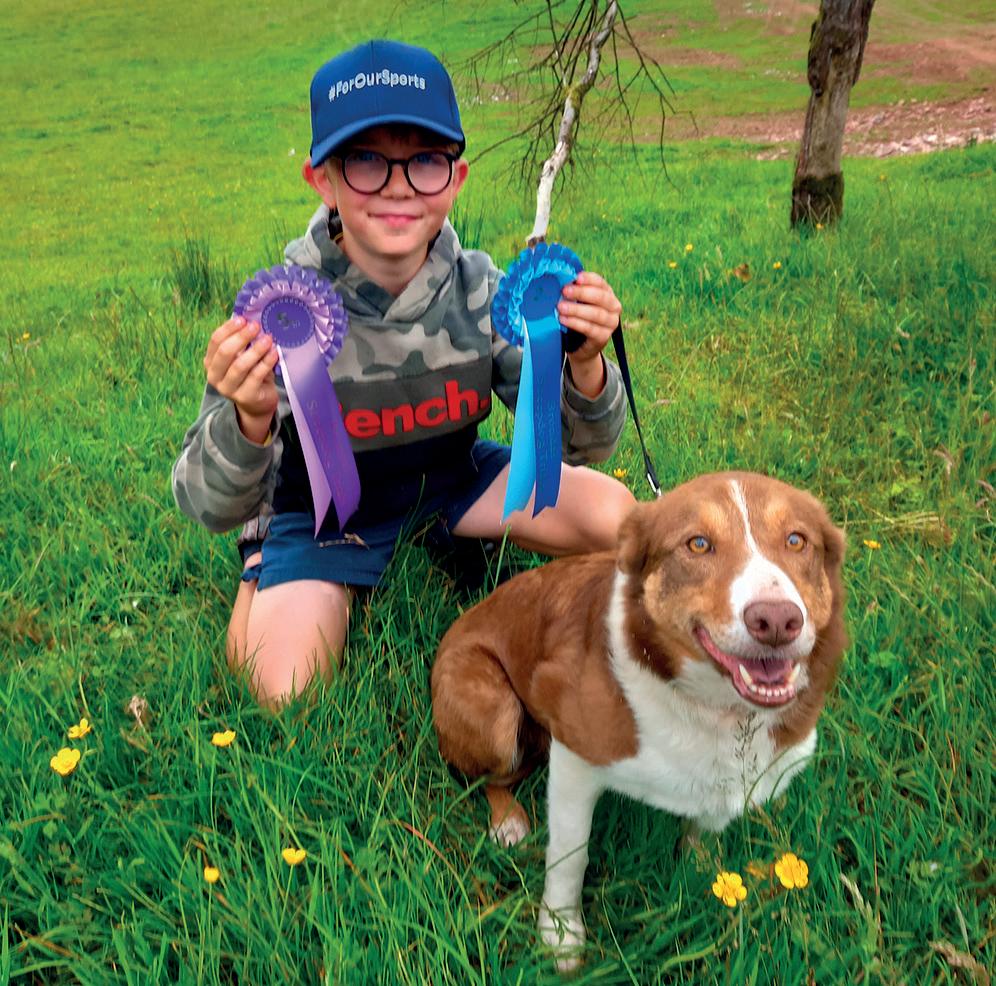




Partof TheJasmine GreenSeries



By Helen Peters and Ellie Snowdon
After Jasmine finds a sick and abandoned puppy on her farm, she realises the dog needs her help to survive. Although they create a bond, Jasmine does not know whether the sheepdog will ever trust people again, but when she gets into danger, the puppy soon shows its true colours.
A modern-day story for those who love Dick King-Smith – one of the most famous children’s authors, who was also a farmer.
We want to see your most creative sheepdog drawings. Whether you draw a dog herding sheep or illustrate the various commands, let your imagination run wild. Send your drawings to emily.ashworth@agriconnect.com or Farmers Guardian, Unit 4, Fulwood Business Park, Caxton Road, Fulwood, Preston, Lancashire, PR2 9NZ. The best submissions will be featured on FG’ssocial media.




























































































Every week we follow the ups and downs of farmers around the UK
AMY WILKINSON Lancashire
Amy works on her family’s tenanted farm at Halsall, Lancashire. Working mainly with her dad, Amy farms 285 hectares (704 acres) of arable crops and 550 beef cross cattle which are all reared through to finishing. You can follow her on Instagram @amygingewilkinson




Iapologise for the lack of farming content in this next piece, however I am now treating this column as my diary cataloguing big life events that you are all privy to.
So, I guess you could say I am the farming Bridget Jones – a very accurate assessment to be honest.
The biggest life event currently occurring isn’t even mine, but feels like a huge deal. My sister has been promoted in her role at the Jockey Club and will be moving down to Cheltenham very soon.
You may be wondering why this is such a big deal to me, so I am going to do my best to express why.
There are only 14 months between my sister and I. We have grown up as good as twins, even if we look nothing alike.
Wearing matching Minnie Mouse coats, green dresses or her always in pink and me in purple.
When I look back on my entire childhood there isn’t a memory she is not included in – we have always come as a package deal to be honest.




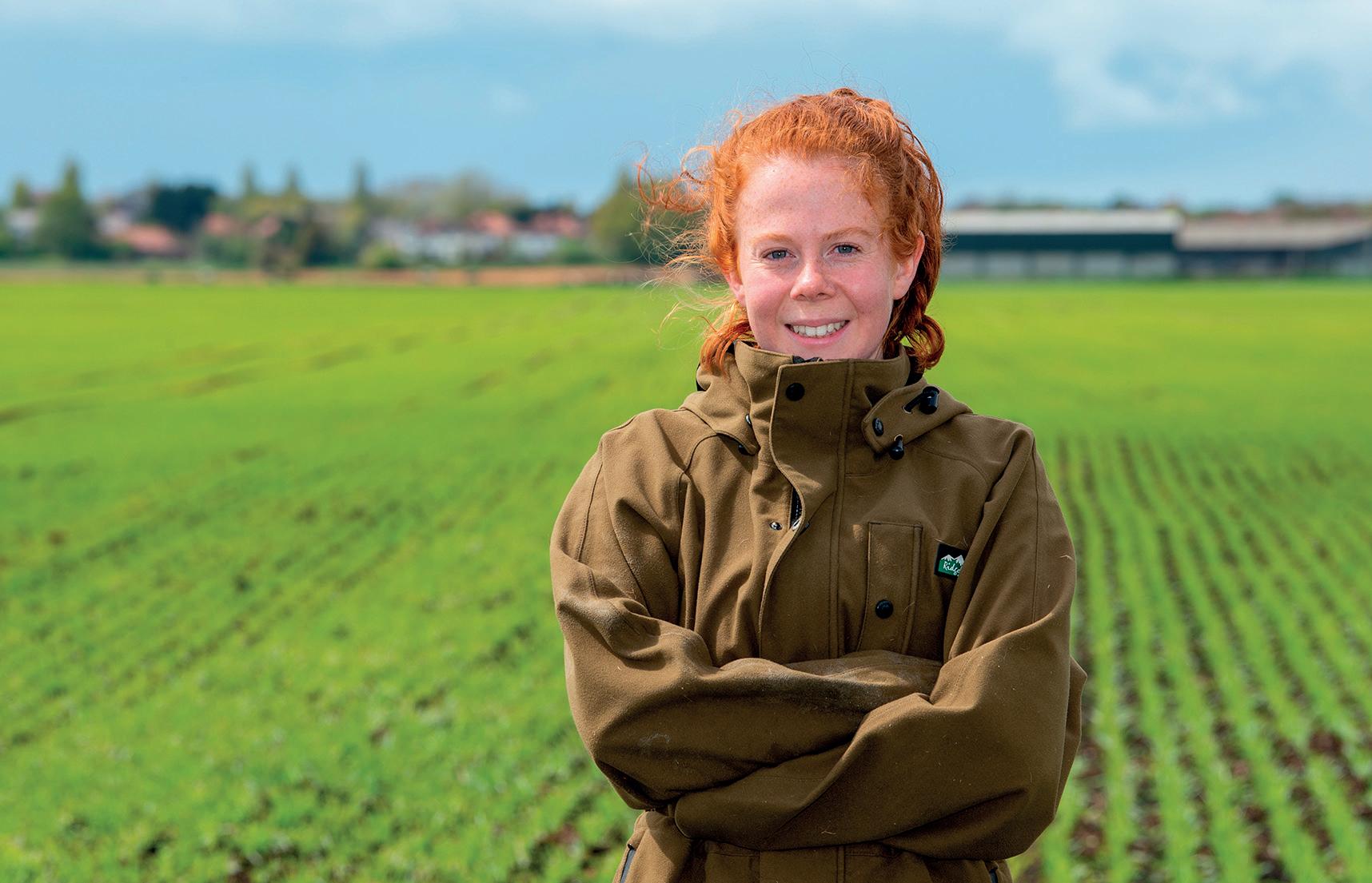
‘One such fight saw me physically throw her over a chicken coop’
son I think of. Now don’t get me wrong, it’s not all been sunshine and rainbows – as kids we could fight like savages. One such fight saw me physically throw her over a chicken coop. In my defence she had been winding me up for days.
There is also no-one in this world who can humble you like a sister can.
We are the two who grew up with our parents in a lot of ways and when I think of home, she is the first per-
She once told me I had nostrils like the Mersey tunnel. Safe to say it’s something I have never forgotten.
But we have always been there for each other, been each other’s closest
Farmers Weather by Dr Simon Keeling
confidant. I feel like the reason it feels like a such a huge deal is because she won’t be in the room next door like when we were kids, or the farm down the road like we are now.
She can’t just flounce in and tell me her boy drama.
Undoubtably over the coming months she will be very busy getting used to the role and change in clientele.
I feel like the people down there maybe slightly different to the Aintree crowd, but if she can handle
WHAT a frustrating week of weather. Not only for you as farmers, but also for us a forecasters.
It is during these frustrating days when I want to shut down the computer and go back to a time when forecasting was so much more simple; pencils, paper charts and empirical rules have a certain attraction at these times.
You will have noticed how your weather apps have been changing almost by the hour; one forecast is wet, the next is dry, and this back and forth has continued for many days.
Artificial intelligence models, despite them being in test mode and promising
so much, have proved themselves to be no better than the traditional operational models predicting what will be happening in the days ahead.
As I type, the forecast for two days time is more uncertain than the forecast for next week. Sometimes, this is just how it goes.
So why so much uncertainty? I think there are three main reasons (although trying to simplify the atmosphere like this is setting oneself up for a fall).
Firstly, I think we are still suffering the effects of last winter’s weak winds around the Arctic at high levels in the atmosphere. This had a knock-on impact on sea temperatures and
other atmospheric patterns which then impacted on summer in the Northern Hemisphere.
Secondly, this affected the jet stream and has either moved it further south than average, or as now, has split it. There is nothing unusual in that effect, but when it happens models struggle.
And thirdly, an increasing plethora of models makes ‘seeing’ through the noise ever more difficult.
A lesson for all forecasters is to admit when we don’t know what is happening rather than, as weather apps do, repeating verbatim what the models are saying.
them she can handle anything. I don’t really have any advice for her, but maybe don’t tell your work friends about the ‘horse ambulance’ knackerman that takes the horses to the local safari park this time.
Once a farmer’s daughter always a farmer’s daughter I suppose.
So, if any of you reading this see me a little worse for wear at Paddy’s Day next year at Cheltenham, mind your business. And to her: It’s been an honour to grow up with you Kez and I’m so, so proud of you.

For location specific forecasts visit farmersweather.co.uk and for video updates go to weatherweb.net or call the number below. Call Farmers
Monmouthshire Kate Beavan
Cheshire Ian Garnett
KATE ROWELL
Scottish Borders
Kate is a fifth-generation farmer running the 750-hectare (1,853-acre) Hundleshope Farm on the Haystoun Estate, Peebles, where the family have been tenants for 150 years. She runs the hill unit with her husband Ed and their four children. She is also a vet and chair of Quality Meat Scotland.
The unsettled summer weather has continued here in the Scottish Borders with barely two dry days together and therefore challenging conditions for both second cut silage and harvesting. We still have a field of grass waiting and the late sown spring barley is only just starting to change colour, so goodness knows when we’ll
get it combined. Surprisingly, lambs are finishing well and we’ve already had four loads away at really strong prices, while the ewes are starting to put on condition now they are weaned.
The hill sheep are all in-bye for the next month after shearing, until ready to wean and are looking as good as they have for years – a wet summer suits our hill and we’re really pleased with the Cheviot lambs in particular.
The bulls have been out for seven weeks and are now back together again with only a few hours of pushing and shoving before they settled down.
The calves all look like they’re growing well, although the grass is disappearing faster than I’d like.
Luckily, Peebles Show took place during one of the rare breaks in the weather and was a great success.
My job this year was welcoming the judges, and I was quite surprised when the Bluefaced Leicester judge, who’d come all the way from South Wales,


recognised me from the picture at the top of this page. We had a lovely chat and he asked me what my husband did as I rarely mention him in this column, something I hadn’t realised and which I thought I should correct.
As with many farming couples, we work very much as a team and most decisions are a case of discussion and compromise.
Ed was brought up in Weardale in the Durham Dales and still has some land there, but his Dad sold the main farm years ago, so there isn’t really enough left to make a living from, which is why we ended up in Scotland at my family farm.
He grew up with Swaledale sheep and brought some up with him when we moved, but for some reason they never did as well on our hill as the
Scottish Blackface and Cheviots do, so he eventually admitted defeat. He probably prefers working with the cattle and machinery while I tend to enjoy the sheep work better, so it’s a good mix, but most jobs usually end up as a joint effort.
We’re quite competitive and will do things such as buying a tup each and then see which has the better lambs, but after 25 years of marriage we’ve pretty much worked out how to get along and there’s not too much gloating.
All the off-farm work I do, my Quality Meat Scotland job and other industry roles, don’t appeal to him at all, but there’s no way I could do it without him behind me running the show at home. He’s an absolute star to put up with it all – thank you Ed.
Send in your correct entries to be in with a chance of winning £20 worth of Love2shop vouchers every month. Send to: Crossword No. 1261 , Farmers Guardian, Unit 4, Fulwood Business Park, Caxton Road, Fulwood, Preston, PR2 9NZ.
1 Scots encamp differently in situation of being crowded (11)
7 Go and work perhaps: it means the same thing (7)
8 I follow hound that hunts for money (7)
10 Defraud man on board (4)
11 Silly person to hiss off stage (5)
12 Bird talk (4)
15 Rushed back with speed to tell tales (7)
16 Shoot that is part of forgotten drill (7)
17 Motoring organisation swindle takes in old masked dustbin-scavenger (7)
20 In theory how the Farmers Guardian is printed (2,5)
22 Songster’s bit of mischief (4)
23 Show fear of little game bird (5)
24 Some slatternly bird (4)
27 Incentives limit us in a fashion (7)
28 Make an investigation within singing group, we’re told (7)
29 Unsettled weather near this coarse pottery (11)
1 Outline of conservative spell of duty (7)
2 Small mammal stole material (4)
3 Provide weapon and place to hide where member might be put (7)
4 Trains unusually on time for conveyance of passengers (7)
5 Thus man-eating monster’s overthrown (4)
6 Lady of dazzling beauty; one who breaks things possibly (7)
7 Chinese savouries to appear on first class car (6,5)
9 Lack of respect for curious ancient lore (11)
13 Uppermost part on this bird fattened for eating (5)
14 Wading bird to pick off by rifle (5)
18 Grain I cut at first essentially reveals overhanging edge (7)
19 Feed prepared in hours (7)
20 View ordinary wing (7)
21 Be at head of public relations with English team (7)
25 Triangular chisel’s continual humming sound (4)
26 Water in seaquarium (4)
Answers to crossword 1259: Across: 1 Peripatetic, 7 Peacock, 8 Balmier, 10 Rooks, 11 Neologism, 12 Ignoble, 14 Gudgeon, 15 Surface, 17 Earldom, 19 Bulldozer, 21 Aioli, 22 Entrain, 23 Leafage, 24 Speed camera. Down: 1 Platoon, 2 Roots, 3 Pekingese, 4 Taboo, 5 Tall order, 6 Cuisine, 7 Permissible, 9 Roman Empire, 13 Board game, 14 Guerrilla, 16 Relates, 18 Diorama, 20 Zoned, 21 Abase.

Forthright opinions from throughout the world of agriculture
Climate change, unpredictable weather and economic pressures currently threaten the UK’s sustainable farming industry. But prioritising collaboration will help to overcome these challenges.
It is crucial for industry leaders at every step of the chain to work together to strike a balance between environmental responsibility and economic viability for a chance of a bright future.
While sustainable farming often brings environmental concerns, it should also encompass economic viability and human elements.
Having just come through the wettest winter and spring we have ever known, the need for more resilient supply chains that can withstand unpredictability has been underscored.
From an economic point of view, volatile commodity markets and recent UK policy changes resulting in the end of traditional subsidies means businesses should now, more than ever, strive to provide farmers with stability to ensure the
industry can be more economically sustainable on its own.
Sustainable supply chains are intrinsic to change, but what they should do is link farmers right through to the end customer and be adaptable to fit the market.
At Warrendale, we take a customer-led approach, but long-term commitments from our key customers are also needed to provide the financial security farmers need to invest in their environments and animals.
In the face of other global issues that affect supply security, I am certain sustainable supply chains will become a bigger priority across various sectors.
A sustainable supply chain is one where demand, economics and eco-conscious practices align.
Away from the focus on market demand economic stability, for us it is about producing cattle in the right way for our climate.
For example, we produce Wagyu using dairy cows, which have a lower carbon footprint and we graze them on grass to grow their structures in less intensive ways.
This method supports environmental protection and animal



welfare. Working with the climate and topography is vital for sustainable farming and businesses should be leveraging the knowledge and experience of partner farms to improve their practices.
While there has been progress, challenges remain.
A decade ago, food buying was highly transactional, with shortlived interactions due to food being over produced and someone always willing to do it at a lower cost.
Today, there is a greater appetite for sustainable supply chains, but primary producers still need fair pay and a sustainable price to reinvest in their farms and drive further sustainable initiatives.
There is a long way to go, but the shift towards these business models in farming is extremely encouraging. Overall, I am optimistic about the future of sustainable farming in the UK.
There are many other positive developments in sustainable farming. Technology, for example, is


helping reduce inputs, manage disease, and improve efficiencies.
In our business we are always exploring the idea of genetics to produce quality bulls that require less feed, minimising environmental impact.
However, I still strongly believe that it is the relationships businesses need to build with their farmers that will be the key player in creating a sustainable farming network that supports everyone at every part of the chain.






















